2022 ANNUAL REPORT
CONSERVATION STARTS HERE




CONSERVATION STARTS HERE



Our second year as San Diego Zoo Wildlife Alliance was one of connections, celebrations, and remarkable achievements.

At its heart, conservation is about people. In 2022, we strengthened, deepened, and expanded our local and global partnerships. Finding new ways to engage with even more allies worldwide, we invited people to join us in working toward a world where all life thrives. And, we saw our efforts taking root, expanding on a legacy of impact across the globe—all made possible by our century of experience, and the support of allies like you.
We kicked off the year participating in the Rose Parade for the first time as an Alliance. Our float shared our story of conservation with tens of millions of allies worldwide—and the year’s excitement only grew from there. We opened and broke ground on new experiences, saw record-breaking attendance at the San Diego Zoo and San Diego Zoo Safari Park, and made pivotal scientific breakthroughs. All year long, we celebrated the first 50 years of the Safari Park, while looking ahead to all we can accomplish in the next 50 years and beyond.
This year has reminded us of the hope and optimism that exists when we come together as allies to make an impact—and that it all begins right in our own backyards.
Thank you for helping make this one of the most successful years in our 107-year history. Please enjoy this look at all of our milestone moments for 2022, and the people who made them possible. Together, we have laid the foundation for this next great chapter of our Alliance. We are forever grateful for you.
Together for wildlife,
Paul A. Baribault Javade Chaudhri President and Chief Executive Officer Chair, Board of Trustees


San Diego Zoo Wildlife Alliance is an international, nonprofit conservation organization committed to inspiring a passion for nature and envisioning a world where all life thrives. It all begins with our two front doors, the San Diego Zoo and San Diego Zoo Safari Park, where millions of guests from around the world join us to connect with wildlife and conservation every year. Our two front doors make our mission, conservation work, and partnerships possible. Conservation is at the heart of everything we do, and it all begins with those connections we make between people and nature every day.
With more than 100 years of expertise, we integrate wildlife health and care, science, and education to develop sustainable conservation solutions across the globe. As an Alliance, we partner with allies in eight strategic regions worldwide, known as our Conservation Hubs. By pooling our strengths, knowledge, and resources, we have a greater impact as we work together to safeguard the future of the planet, its wildlife, and the spaces we all share. Because when wildlife thrives, all life thrives.
OUR VISION
OUR MISSION
San Diego Zoo Wildlife Alliance is committed to saving species worldwide by uniting our expertise in animal care and conservation science with our dedication to inspiring passion for nature.

Collaborate
We nurture alliances with diverse teams, peers, partners, and communities to expand and deepen our impact.
Innovate
Together we pioneer new ideas and approaches to ensure the long-term health and survival of wildlife.
Inspire
We share our passion for nature to increase understanding, empathy, advocacy, and action for wildlife.
Thrive
When we collaborate, innovate, and inspire, we help people and wildlife thrive together for a healthy planet.
Our logo represents over a century of achievement and San Diego Zoo Wildlife Alliance’s future as a force for conservation.
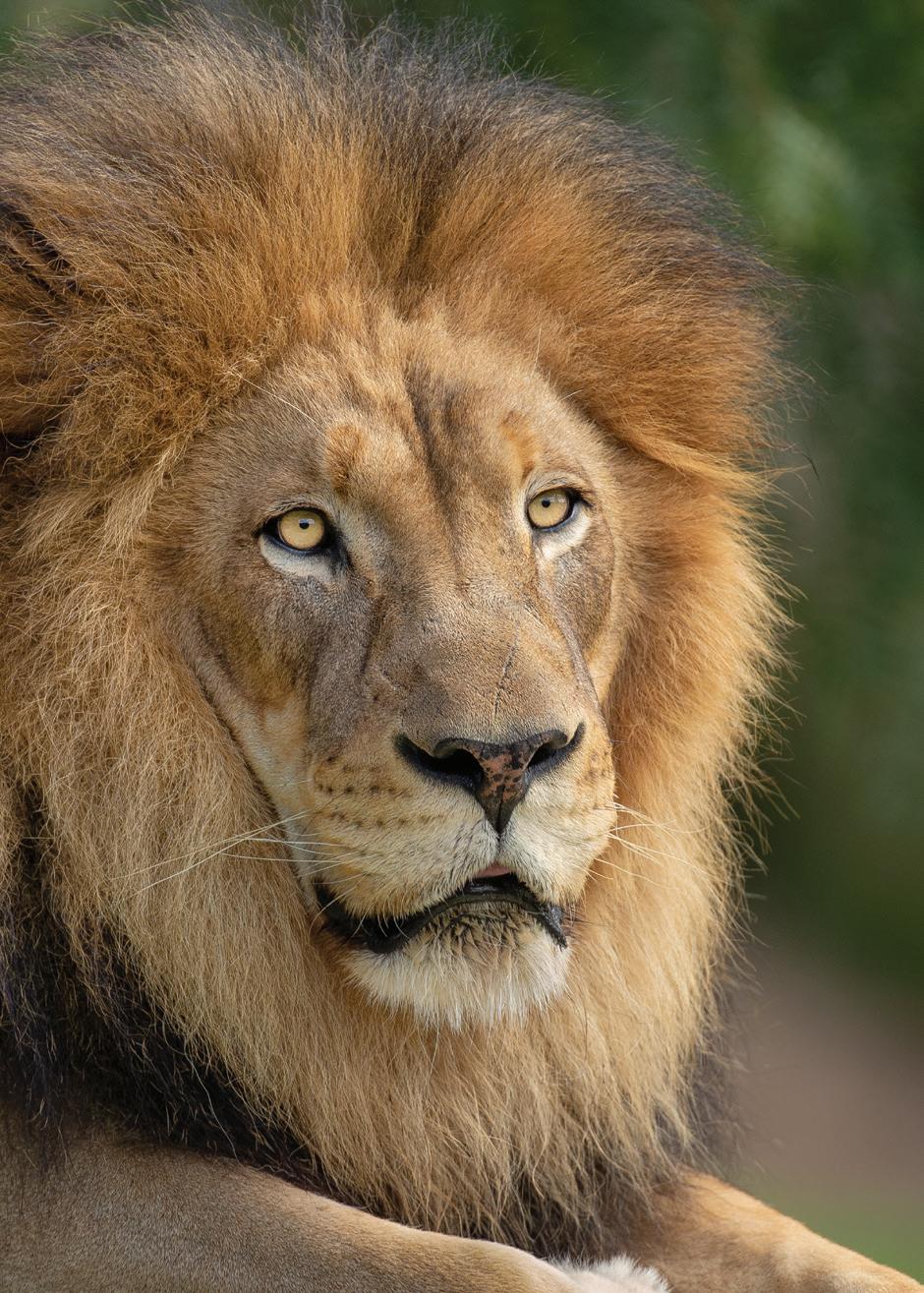
The Lion
Represents the founding of our “World-famous” Zoo, more than a century ago.
The Rhino

Represents the icon of our “No Place Like It on Earth” Safari Park.
The Bird
Represents our groundbreaking, historical, and ongoing conservation efforts.
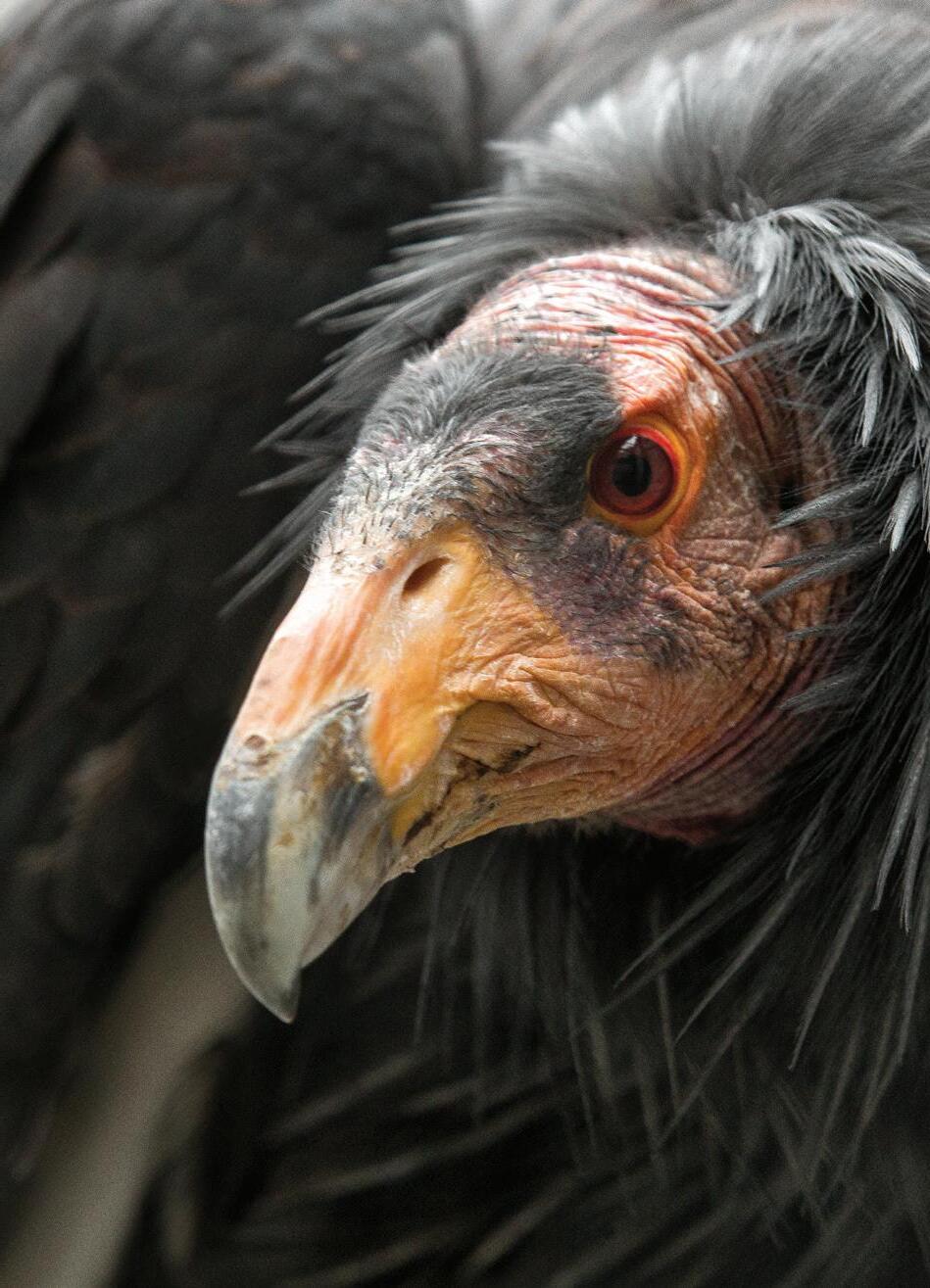
As our two front doors, the San Diego Zoo and San Diego Zoo Safari Park fuel our mission—fostering connections with wildlife and making it possible to invest alongside our allies and partners in our vision of a world where all life thrives.
We care for nearly 16,000 animals and more than 2 million plants at the Zoo and Safari Park.
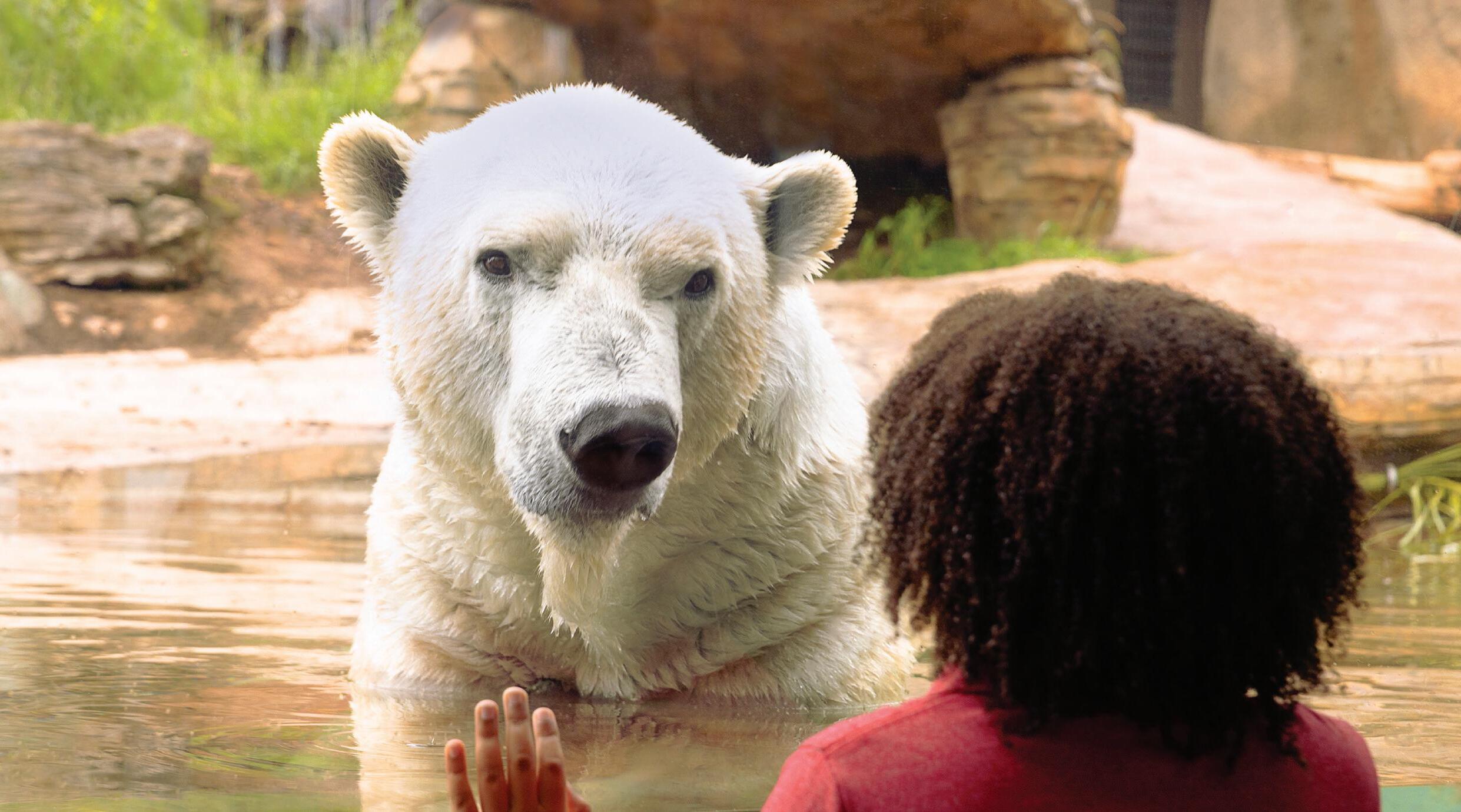
Over our 107-year history, we’ve conceptualized, developed, and honed a unique set of skills and strengths that have become a significant contributor to greater conservation efforts globally. The privilege of working with wildlife at each stage in life, with intimate access to each plant or animal’s unique biology, comes with the responsibility of using that knowledge to safeguard the future of wildlife.
Whether its our nutrition team analyzing elephant milk as it changes to meet the needs of a growing calf, our veterinary team conducting disease surveillance to safeguard wildlife, or our biologists and care teams breeding and reintroducing endangered species, all of our conservation efforts around the world are made possible by our everyday work at the Zoo and Safari Park.

It all started in 1916—107 years ago—when the world-famous San Diego Zoo began creating lasting connections between people and wildlife. Today, our commitment to that mission is stronger than ever.
Spanning 100 acres in the heart of Balboa Park in downtown San Diego, the Zoo is home to more than 12,000 rare and endangered animals representing approximately 650 species and subspecies . Known for its peaceful, lush grounds and naturalistic habitats, it’s also an accredited botanical garden, with over 700,000 individual plants of 3,100 species in our care.
Each year, more than 4 million guests including our community of 400,000 members—join us here to connect with wildlife and make lasting memories. Through inspirational, educational experiences, guests of all ages come face-to-face with iconic and unusual wildlife, learning about their habitats and the ecosystems we all share.
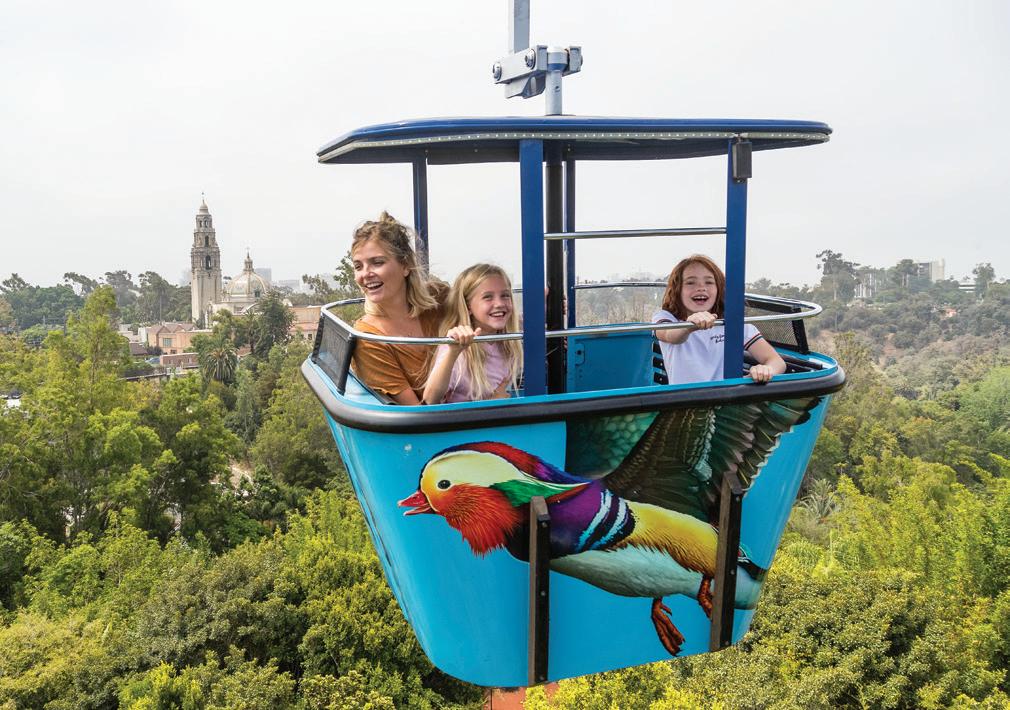
From polar bears swimming in the Northern Frontier to endangered leopards prowling overhead in Asian Passage, discovery awaits around every corne r . Conrad Prebys Africa Rocks immerses guests in the
biodiversity of the African continent while the Lost Forest and Australian Outback take them a world away. In Denny Sanford Wildlife Explorers Basecamp, immersive wild nature play inspires the next generation of conservationists and caretakers of our planet. And with abundant gardens, buzzing aviaries, and trickling streams, plus bird’s-eye views from our signature double-decker buses, Skyfari, and Bashor Bridge, lush surroundings and new perspectives abound everywhere you look.
Wildlife encounters and behind-thescenes adventure tours including Animals in Action, Discovery Cart Tours, Rady Ambassadors, and the Early Morning Cheetah Experience offer an inside look at our century of wildlife care expertise. During Plant Days and Orchid Odyssey, visitors can enjoy selfguided tours and a special botanical bus tour, and the Orchid House—our safe haven for illegally trafficked plants—is open to the public.
The Zoo is home to a veterinary hospital and our museumaccredited Pathology Archives. From the 8,300-square-foot Scripps Building, the Disease Investigations team carries out research on disease and health surveillance for wildlife, and the Wildlife Nutrition and Curatorial teams collaborate to fulfill our mission.

“ Seeing longtime pass holders taking either their first ride or their 100th ride enjoy the aerial view of the entire park and how it’s changed over the years are some of my favorite guest interactions. Talking with them, hearing their memories of the park, and comparing it to what we have now will always make me enjoy coming in to work.”
 —ALEX G. Skyfari Operations
—ALEX G. Skyfari Operations
There’s no place like it on Earth. Immersive and authentic experiences spread across 1,800 acres in Escondido, California offer guests the opportunity to explore Earth’s awe-inspiring ecosystems and regions—from the Australian outback and rainforests of Indonesia, to the Asian plains and expansive grasslands of Africa where herds of wildlife roam.
Home to more than 3,600 animals representing over 300 species, more than 1.6 million visitors each year join us for thrilling, educational, and adventureoriented experiences, from savanna habitat excursions to behind-the-scenes safaris, zip lining on the Flightline Safari, Roar and Snore overnight tent camping, a hot-air Balloon Safari, and wildlife encounters.
Inspired by the legendary safari trains of Africa, the iconic Africa Tram takes guests on a guided, 2.5-mile adventure around expansive savanna habitats to see towers of giraffes, crashes of rhinos, and flocks of exotic birds. Throughout the Safari Park, play areas engage our youngest allies, including Mawazo Woods Discovery Area, the Conservation Carousel, Savanna Cool Zone, and the Tiger Trail Play Area where a rope climb and log-walk bridge offer moments of wild fun.
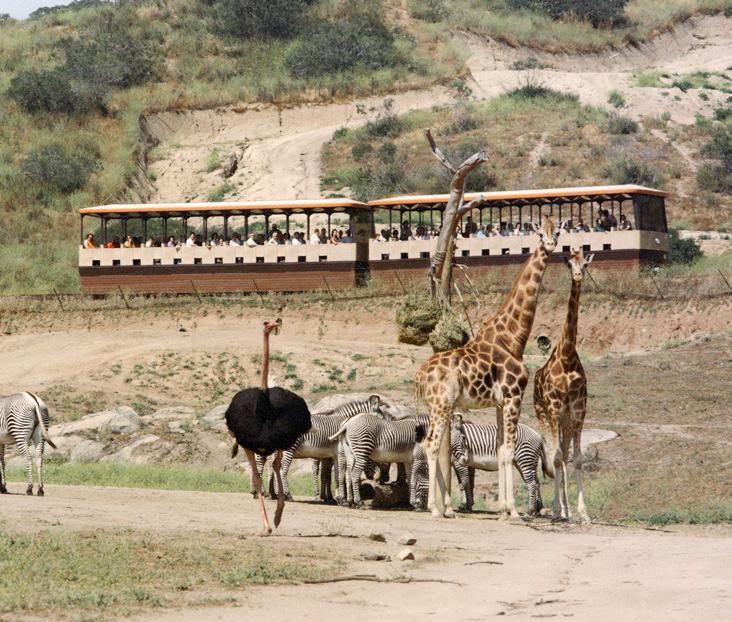
The Safari Park’s vast accredited botanical collection has more than 1.3 million plants of 3,700 species. At the World Gardens, immersive experiences offer a chance to visit habitats from around the globe, including the Baja Garden and Old World Succulent Garden, Epiphyllum Trail, Bonsai Pavilion, and California Nativescapes Garden.
In 2022, we celebrated 50 years of life-changing moments at the Safari Park.
Of the Safari Park’s 1,800 acres, 1,000 are set aside as the Wildlife Biodiversity Preserve, a unique protected area of native sage scrub habitat. Conservation programs for the northern white rhino, burrowing owl, California condor, and others are also headquartered at the Safari Park, along with the state-of-the-art Paul Harter Veterinary Medical Center.
Located at the Safari Park, the 50,000-square-foot home base for our conservation science teams also houses our 2,000-squarefoot library, subcollections of our Wildlife Biodiversity Bank, Conservation Education Lab, and Eddy Family Outdoor Learning Lab, as well as 20,000 square feet of laboratory space, plus operations and administration for various conservation teams.
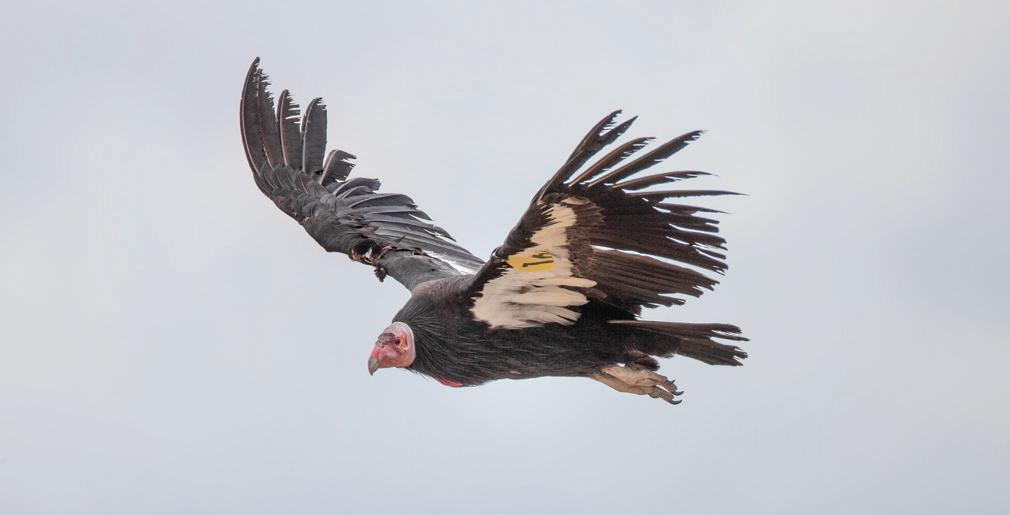
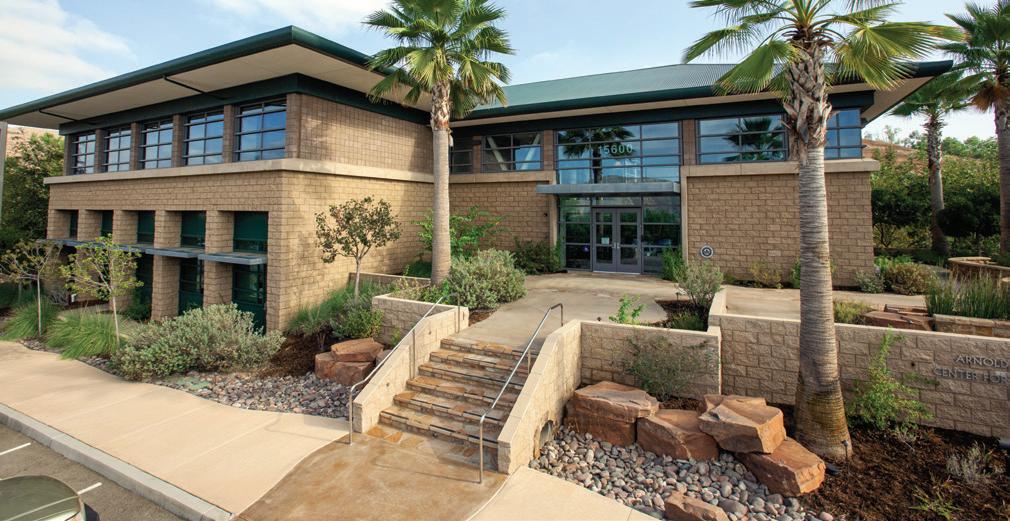
“
I love getting to watch guests’ faces light up when they meet their all-time favorite animal up close. Getting to be a part of that moment is so special.”

—DELANEY C. Wildlife Care
From record-breaking attendance at our parks and global media reach , to the heartwarming stories of wildlife in our care, these are some of the moments that made our year.

endangered mountain yellow-legged frogs raised at the Safari Park were reintroduced into their local native habitat
300 call the Zoo and Safari Park their home away from home—the largest membership base of any zoo in the world
Our closest allies for wildlife spent more time with us than ever before, engaging with wildlife and enjoying interactive programming throughout the year, for an average of nearly 5 visits per member
The first male golden takin in the western hemisphere was born at the Zoo
97 billion
impressions worldwide, reaching more allies than ever
Welcomed future generations of conservationists with the opening of Denny Sanford Wildlife Explorers Basecamp at the Zoo (page 20)
Marked the first anniversary of a revolutionary lab in the Amazon rainforest, bringing technology to the front lines of conservation (page 56) One giraffe calf was given a second chance with the help of some very special leg braces (page 48)
Cell lines from
14,719
local children joined us for camps and education programs (page 70)
28.2 million
171 species were preserved in the Frozen Zoo ® (page 28) Participated in the Rose Parade for the first time as San Diego Zoo Wildlife Alliance, sharing our mission with the world (page 72)
critically endangered orangutan born (page 67) 1 visitors came and connected with wildlife—breaking annual attendance records at both the Zoo and Safari Park
Celebrated 50 years of conservation and moments that change a lifetime with the 50th Anniversary of the Safari Park (page 24)
A record number of safari special experiences were booked at the Safari Park, inspiring more wildlife allies than ever before
5.6 million+ horses saving their endangered species in unexpected ways (page 18) 2
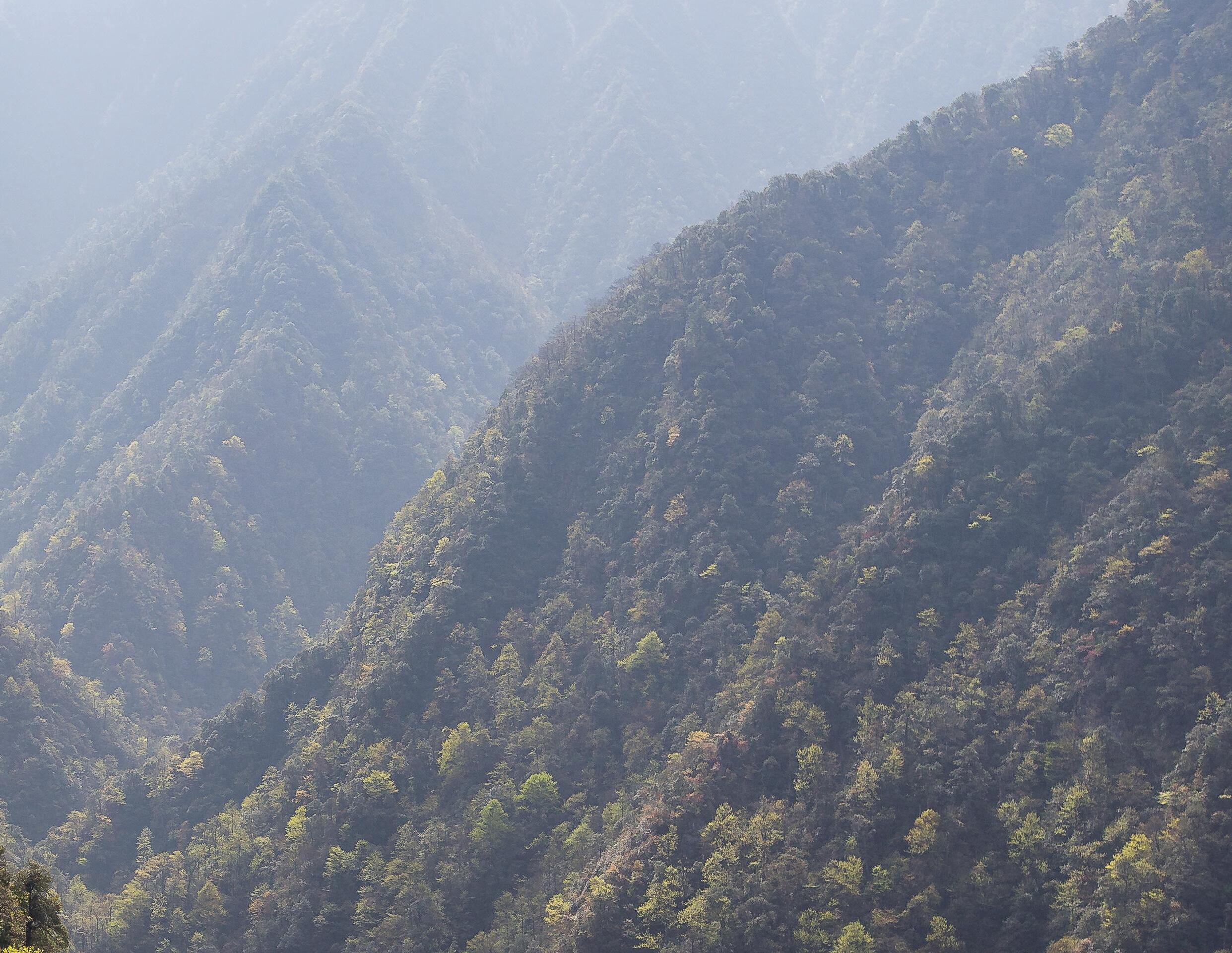
Whether you’re visiting your favorite wildlife, buying an ice cream cone, taking a behind-the-scenes tour, planning an event with us, or sending your child on a conservation field trip, you’re helping secure the future for wildlife.
Our mission begins at the Zoo and Safari Park, where over 5.6 million guests a year join us to connect with wildlife. Every single one of those visits—and the impact they have around the globe—is only possible because of the thousands of team members and volunteers making it happen every day. Our dedicated teams care for nearly 16,000 animals and more than 2 million plants, while helping guests make memories for a lifetime and protecting wildlife and ecosystems worldwide.

We are truly a global alliance, and we are so grateful to the people making it possible each and every day.
“ You realize that you are part of a bigger picture. You realize that selling a shirt, a coffee, or a plush toy really impacts the way we go about our conservation. The level of passion, love, care, and dedication that this organization has is unmatched.”
 —MARIO E. Retail Operations
—MARIO E. Retail Operations
In 2022, San Diego Zoo Wildlife Alliance proudly employed


3,156 team members across San Diego and around the world.


In May, we came together for the first time as San Diego Zoo Wildlife Alliance at an off-site all-staff meeting, called “Onward.” Thousands of team members heard from leadership, conservation partners, and wildlife care teams, all looking ahead to what the next few years will bring.
“ This work isn’t a job, it’s a way of life. Getting to put all my passion for wildlife into action every single day solidifies for me that I am making a difference. And if you collect similarminded people, that’s when you can start to change the world.”
—ALEXA B. Wildlife CareOur Conservation Science and Wildlife Health teams are leading experts at the forefront of global conservation. Our teams work at the Zoo, at the Safari Park, and worldwide, collaborating to advance our understanding of wildlife and to safeguard biodiversity around the world. It begins with the connections we make between people and wildlife every day.

• Biodiversity Banking
• Clinical Laboratory Services

• Community Engagement
• Conservation Genetics
• Disease Investigations
• Plant Conservation
• Population Sustainability
• Recovery Ecology
• Reproductive Sciences
• Veterinary Services
• Wildlife Care
• Wildlife Nutrition
Oliver Ryder, Ph.D., Kleberg Endowed Director of Conservation Genetics, was a nominee for the 2023 Indianapolis Prize, the world’s leading animal conservation award. Conservation heroes from around the world are nominated for this prestigious award.
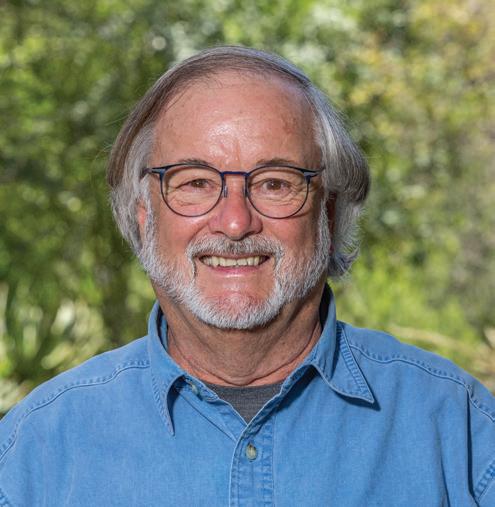
We extend our gratitude to the Ogilvie family for endowing our postdoctorial training program for veterinarians at our Paul Harter Veterinary Medical Hospital.
Thank you to the Margaret R. Boys Charitable Foundation for their endowment of the Margaret R. Boys Fellow in Wildlife Nutrition.

In 2022, our Conservation Science and Wildlife Health team members authored over 60 peer-reviewed journal articles, book chapters, reports, and news stories . These publications underscore our commitment to expanding and disseminating learnings, and informing wildlife care, health, education, and conservation science around the world. The subjects of these publications range across our diverse teams, skills, and expertise— below are just a few examples:
• Selection and management of browse plants for animals under managed care
• Levels of mercury pollution in Amazonian ecosystems
• Evolution and distribution of genes within mammal chromosomes
• Presence and effects of microplastics in marine wildlife
• Physical therapy for species in zoological institutions

• Methods for improving post-release outcomes for rescued and reintroduced wildlife
• Facial recognition technology to identify bears
• Monitoring risk of livestock depredation by large carnivores in Kenya.
We welcome community volunteers, diverse in skills and expertise, to implement their passion for conservation alongside our teams in the field and on grounds at the Zoo and Safari Park. Our inspiring volunteers engage with guests of all ages, lend their expertise behind the scenes, and make an invaluable difference for our mission.
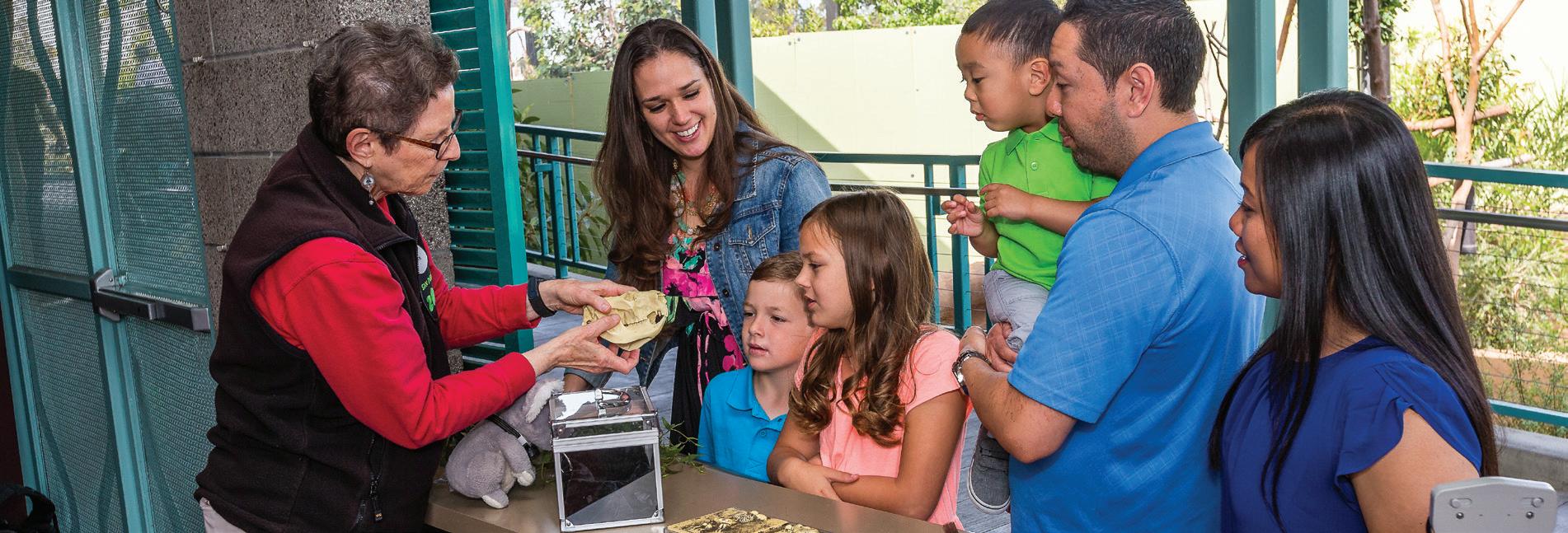

Over 500,000 pieces of browse—shoots, bark, buds, leaves, and other edible plant material—were farmed, serving over 300 animals, from ants to elephants.
This year, 1,429 volunteers contributed 245,482 hours of service.
“ I feel I am making a difference if I can even get one person to realize how they can help save the earth and the wildlife that depends on conservation. ” —A VOLUNTEER

A Przewalski’s horse that lived more than 40 years ago is saving the species today. This groundbreaking accomplishment is the living embodiment of our conservation mission, proving what's possible when all of our teams, expertise, and collaborative efforts come together—making an impact that will ripple out for generations to come.
Przewalski’s horses once roamed vast, sweeping grassland plains from northern Asia all the way down to present-day Portugal and Spain. But habitat loss and a changing climate forced them into areas they weren’t well adapted for, and populations plummeted. By the 1980s, Przewalski’s horses were declared extinct in the wild. But because of the visionary foresight and dedication of conservation scientists and wildlife care teams, work to save the species had already begun.
Since 1979, we’ve worked with partners around the world to save Przewalski’s horses, helping reestablish wild populations through our collaborative conservation breeding program at the Safari Park. Because of these efforts, the species is no longer extinct in the wild—but they remain endangered. And one of the greatest challenges they face is lack of genetic diversity.

Until Kurt’s birth in 2020, all living Przewalski’s horses were descended from just 12 individuals. He’s the first-ever clone of a Przewalski’s horse—the clone of a stallion that lived more than 40 years ago and whose DNA was absent from the living population. Kurt’s birth helps restore this vital genetic diversity, which is essential for a full recovery of the species.
Kurt the horse was named in honor of one of those conservation pioneers, Dr. Kurt Benirschke, who founded our Frozen Zoo in the 1970s. Today, the Frozen Zoo is part of our Wildlife Biodiversity Bank (page 28), and is the largest repository of its kind in the world—housing more than 10,000 cryopreserved cell lines of more than 1,100 species, including some that are extinct. What has been preserved there is now making breakthroughs like Kurt’s birth possible.
Through a collaborative effort with our partners ViaGen and Revive and Restore, and our Conservation Genetics, Reproductive Sciences, Population Sustainability, Biodiversity Banking, and Recovery Ecology teams, Kurt was born to a domestic horse that acted as a surrogate mother.
Our Wildlife Health, Nutrition, and Care teams then worked together to help ensure he would thrive when he arrived at the Safari Park and was introduced to his “mentor,” a young filly named Holly. Holly is now teaching Kurt the language and behavior of Przewalski’s horses so he can integrate into the herd—and ultimately breed, passing his important DNA to future generations.
Together, Kurt and Holly mark the beginning of the next generation of Przewalski’s horse conservation. Kurt’s very existence is a monumental conservation milestone—for his species, and for all species that will benefit from these revolutionary reproductive science and genetic rescue techniques in the years to come. As we work toward a future where a robust, genetically diverse population once again roams their native sweeping plains, Kurt reminds us of the power of committed innovation—and that successful, long-term conservation requires collaboration and thinking outside the box .

“
—PAULA H. Guest Services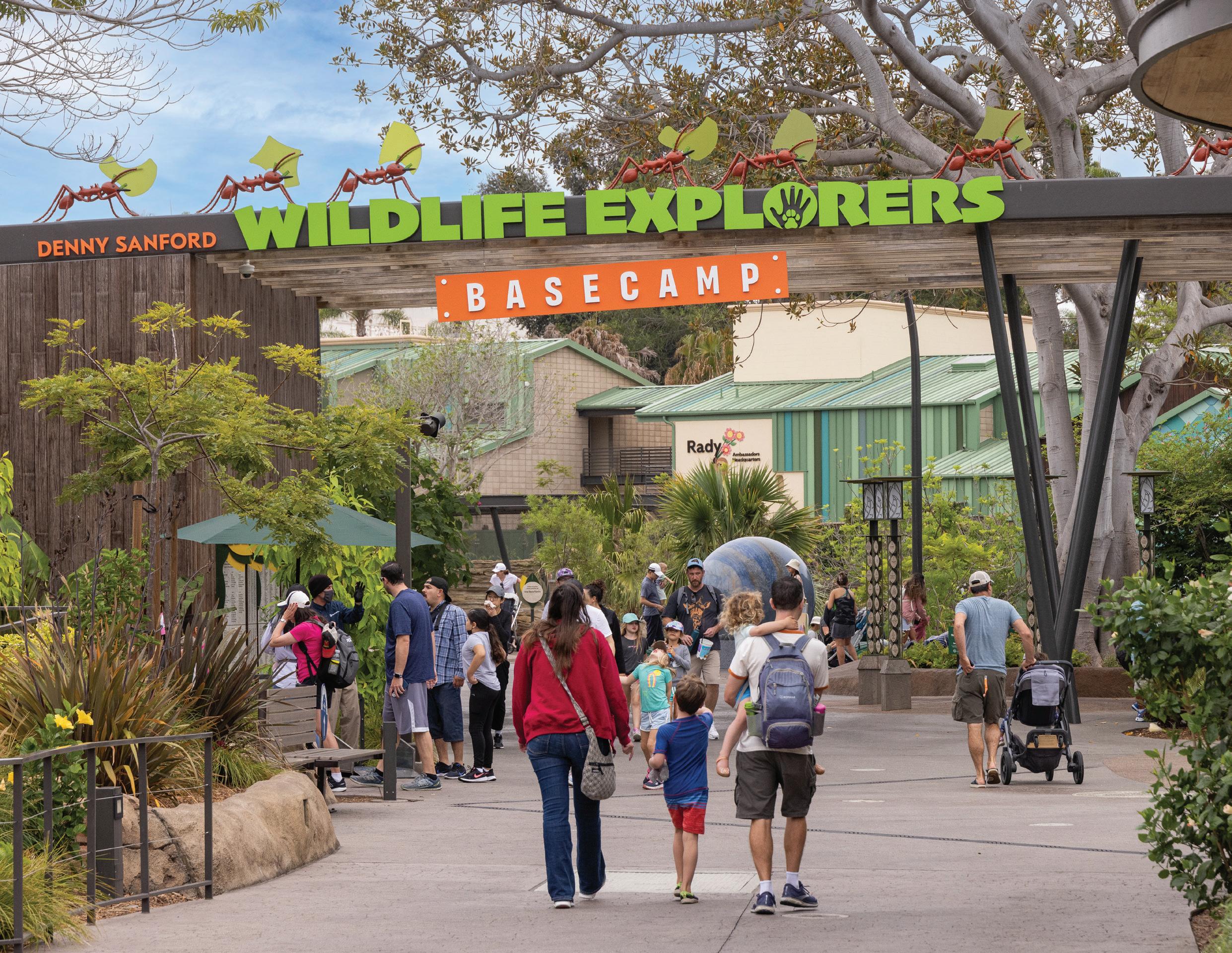
To see how the guests come in to Basecamp and are amazed by all there is to see is terrific. It makes me love my job even more.”
With much fanfare, and set to the joyous sounds of a brass band, we celebrated the opening of the brand-new Denny Sanford Wildlife Explorers Basecamp on March 11. A large crowd of guests and team members, plus President and Chief Executive Officer Paul Baribault, youth from across San Diego, and Dr. Seuss’ The Lorax were in attendance as we shared with the world the remarkable transformation of the previous Children’s Zoo.
This 3.2-acre, state-of-the-art, multi-ecosystem experience is designed to provide guests of all ages with an up-close look at nature and offer fresh, high-tech interactive opportunities that nurture empathy for wildlife and encourage future caretakers of the planet.

Guests visit with a variety of fascinating species and engage on a deeper level by using full sensory and multifaceted elements, including “parallel play” opportunities from climbing and crawling around a massive
tree house, to exploring through water play elements and interactive touch screen games, using microscopes to reveal natural wonders, and specialized animation that utilizes artificial intelligence (AI), dynamic lighting, and whole-room scented environments—all built with sustainable materials and practices. We are endlessly grateful for the many donors who made this one-of-a-kind place possible.
As the rope dropped on opening morning, young guests ran toward this new experience, excitement and joy brimming on their faces. In the months since, that enthusiasm hasn’t waned. All year long, Wildlife Explorers Basecamp has drawn guests from around the world, helping make for record attendance at the Zoo. Together, as we spark empathy and offer new perspectives, we’re inspiring the next generation of wildlife allies to join us in creating a world where all life thrives. Wildlife Explorers Basecamp has exceeded our wildest dreams.
In the weeks leading up to the opening, donors and team members enjoyed special festive events to reflect, celebrate, and spread the word.
Donors to the project, along with members of our President’s Clubs, Heritage Guild, and other groups, enjoyed exclusive preview events and programs ahead of the opening. For more information on joining these groups, see page 92.

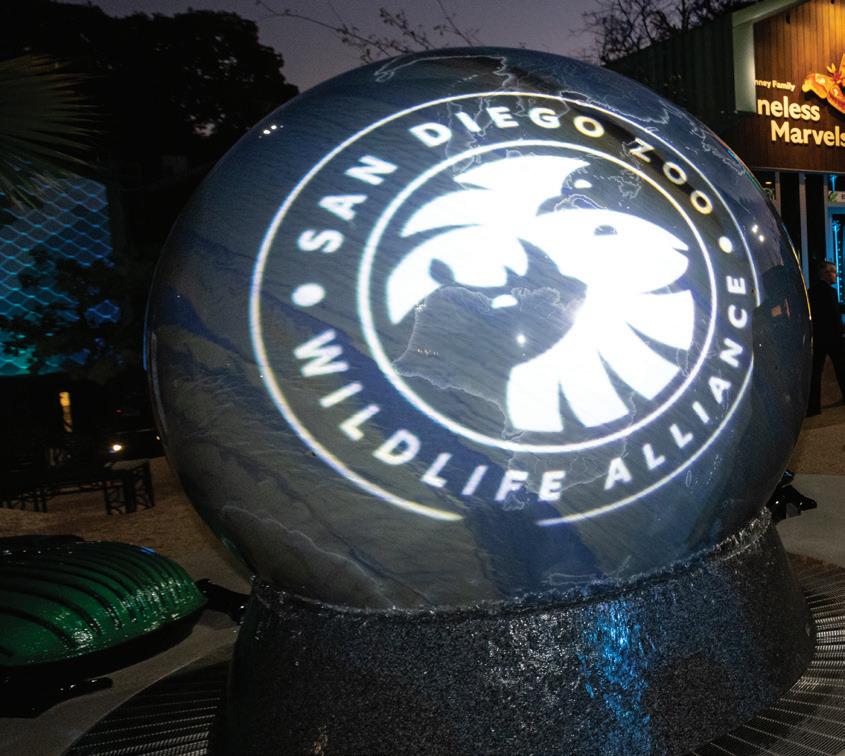
“

Educating guests in Basecamp is off the charts for me. To see the excitement in the guests’ eyes as I share about certain animals is the cherry on top! To leave them with conservation knowledge, and how they themselves can help, is just the best.”

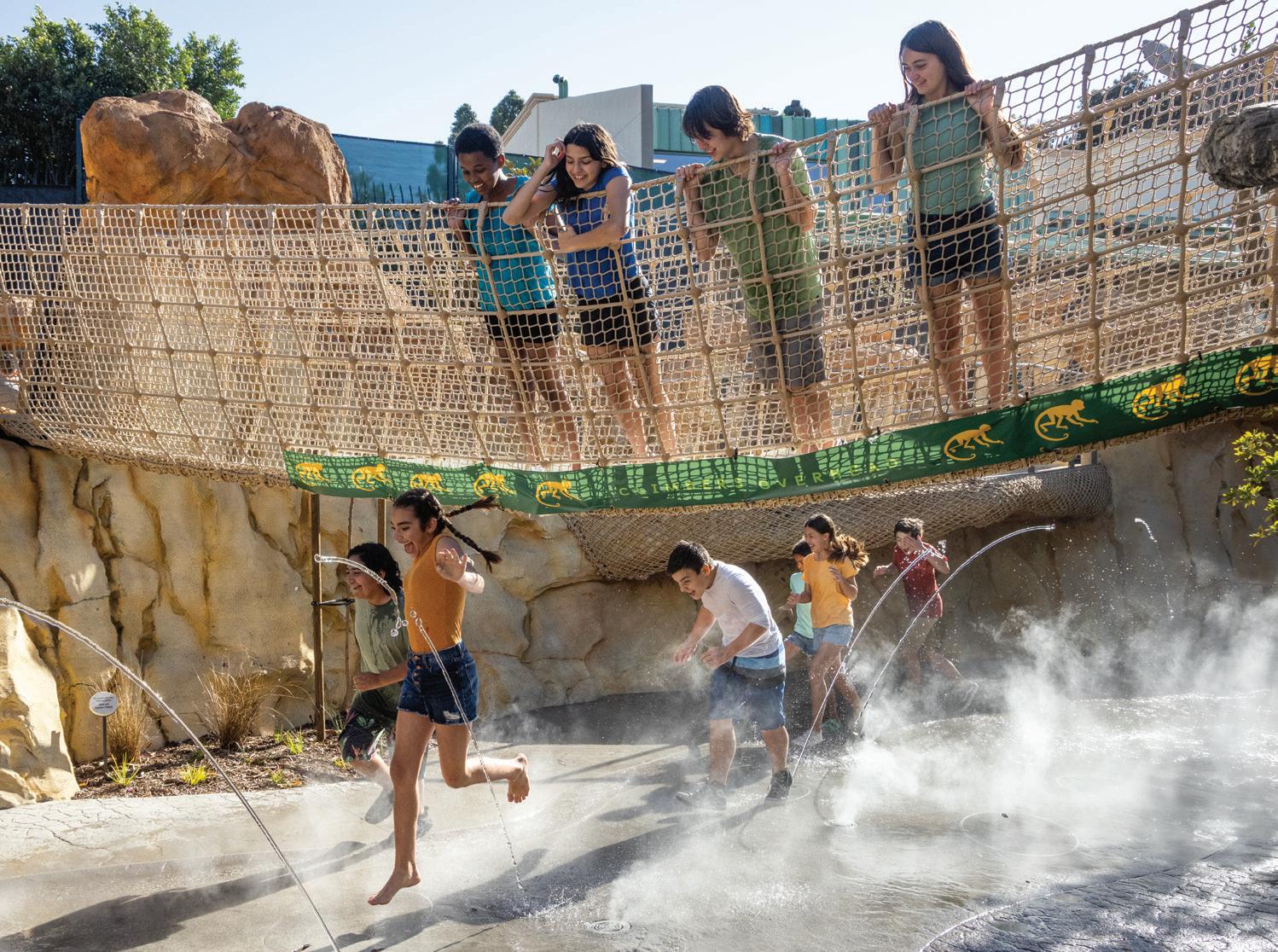
To unveil the entrance sign and thank him for his foundational naming gift, which led the way on this project, Denny Sanford and friends enjoyed a special preview evening.

We are forever grateful for the generosity of the 3,716 donors who collectively gave $88 million to bring this one-of-a-kind adventure to life. You made this groundbreaking experience possible, and your impact will ripple far into the future for many generations of wildlife explorers.
We’d like to especially thank our visionary and cornerstone donors whose commitment and generosity helped lead the way.
Denny Sanford
Ernest and Evelyn Rady
The McKinney Family
The Conrad Prebys Foundation
Una Davis Family
Art and Danielle Engel
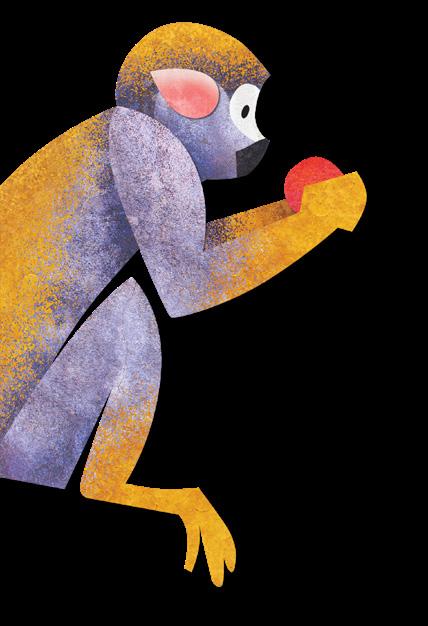
Hervey Family Fund at the San Diego Foundation
Bob and Marion Wilson Family
Paul and Michelle Zuest
Carole Sachs and the John H. Sachs Family
The Tappan Family
The Nita Clark and Henk van der Werff Family
We welcomed media and VIP guests to amplify the visibility of this important new place, reaching allies worldwide. A larger-than-life event in Los Angeles with Percy, a giant porcupine puppet, made headlines across the globe— an opportunity to experience the world from wildlife’s perspective and a reminder that nature is all around us, no matter where we are.

Helga M. and John H. Warner, Jr. and family
Mary Jane and Jim Wiesler
Anonymous
On May 10, 1972, the San Diego Zoo Safari Park opened its doors to the world—and changed the future of wildlife conservation forever. It was one of the boldest wildlife preservation projects in history, and in 2022, we celebrated our first 50 years. For five decades, the Safari Park has captivated the imaginations of guests from around the world, who visit our wide-open spaces and experience countless life-changing moments while discovering authentic stories of nature. When Dr. Charles Schroeder founded the Safari Park, he had a vision of what conservation could be—and he had the forethought to know that it begins with people.



Every day, thousands of guests are transported into habitats and ecosystems from around the world, coming face-to-face with teeming herds of wildlife and some of the world’s most critically endangered species. Visiting Sumatran tigers in the lush bamboo forests of Asia, spotting herds of rhinos, giraffes, and elephants across the sweeping plains of the African savanna, and coming face-to-face with kangaroos, platypuses, and cassowaries on an Australian walkabout—these are the moments that can change a lifetime.
These one-of-a-kind experiences inspire love and empathy for intricate ecosystems we share, and for the wildlife and people that call them home. These moments spark lifelong connections as guests begin to understand the lasting, transformative power of conservation. In turn, those connections make the world a smaller place, inspiring allies to join us in creating a world where all life thrives.

The Safari Park reminds us that we are all connected as a part of nature, not separate from it. Today, with 800 acres of immersive habitats and sprawling landscapes, as well as a 1,000-acre biodiversity reserve, the Safari Park remains critical to conservation efforts worldwide.
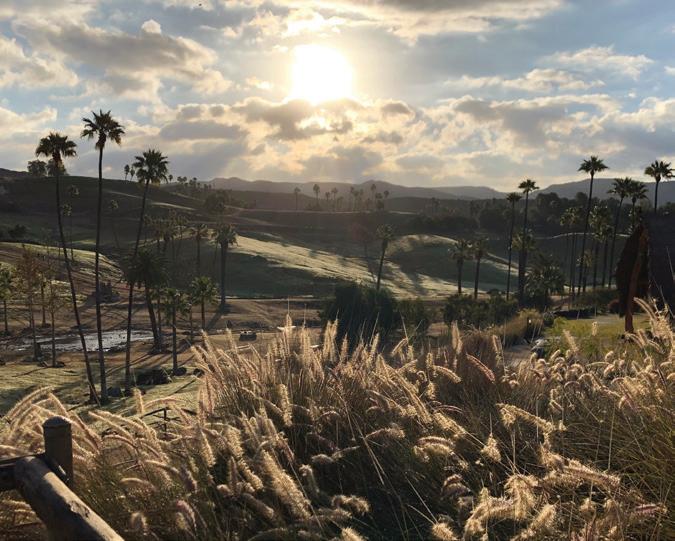
Each decade has brought new innovations, conservation breakthroughs for endangered species, and unforgettable memories for all who visit. As we celebrate the first 50 years of the Safari Park, we also look ahead to incredible future and what the next 50 years will bring for conservation. With a global alliance of partners and allies by our side, we’ll continue to build a one-of-a-kind legacy that has a life-changing impact for generations to come.
There’s no place like it on Earth.
The celebrations culminated on January 2, 2023, with our award-winning float in the Rose Parade, themed “Celebrating 50 Years of Conservation.” With an openair safari truck and iconic wildlife, it represented the Safari Park’s ability to connect people to wildlife and provide life-changing moments—and helped us reach more allies worldwide.



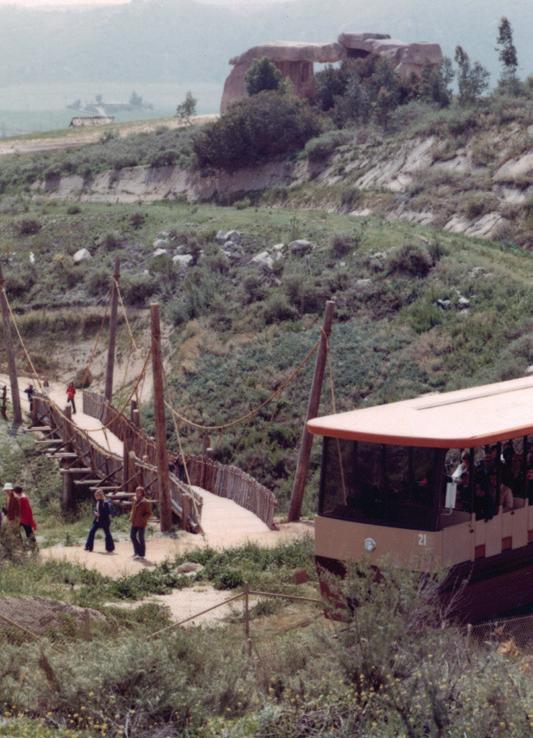
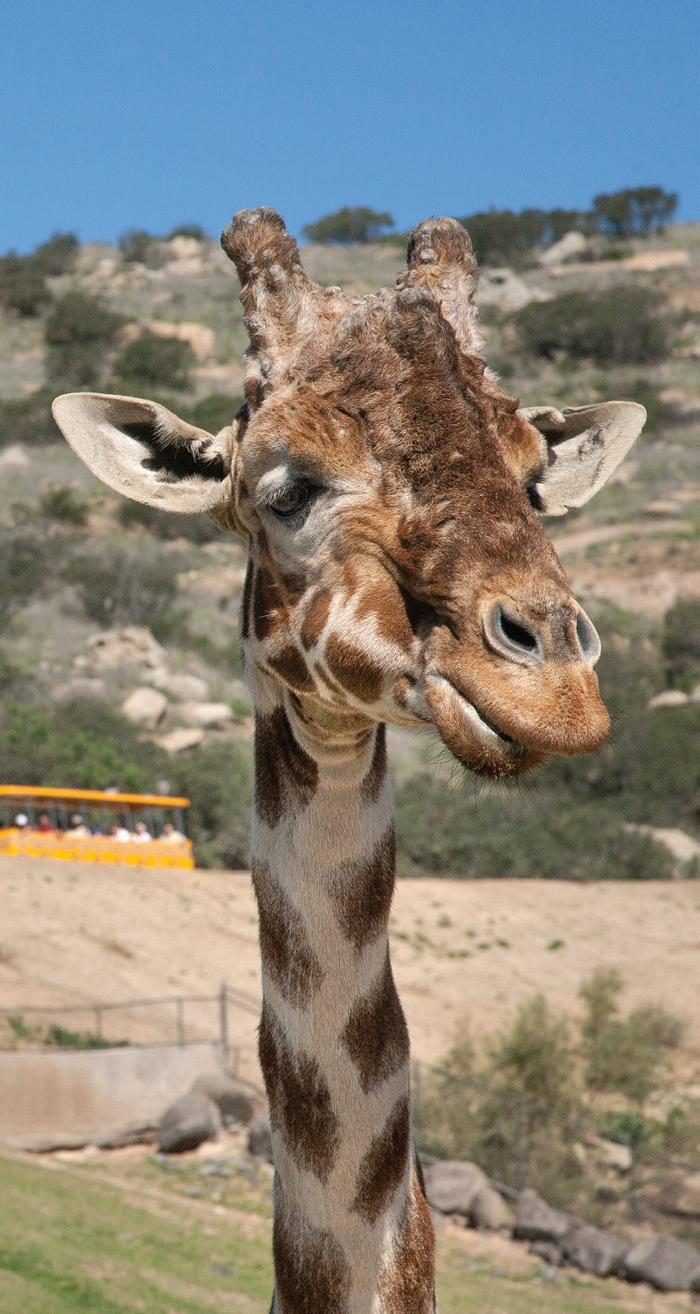

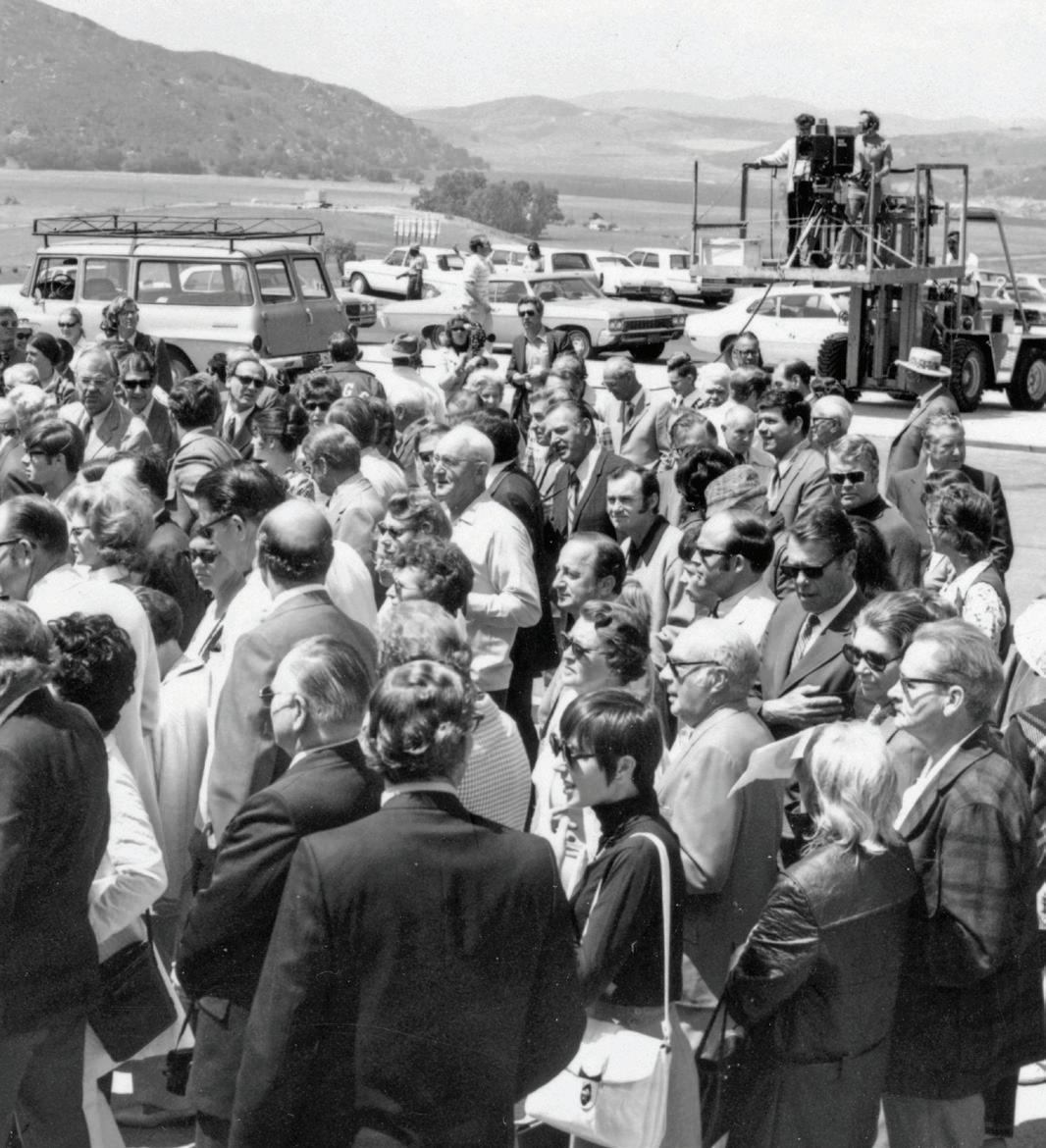
We are all interconnected. The health of wildlife, people, and the ecosystems we share are inextricably linked and dependent upon the health of our planet. Through our One Health approach, we honor, celebrate, and advocate for that connection every day by caring for the diversity of plants and animals at our wildlife parks, working alongside partners and local communities on conservation efforts across the globe, and inspiring allies to join us.
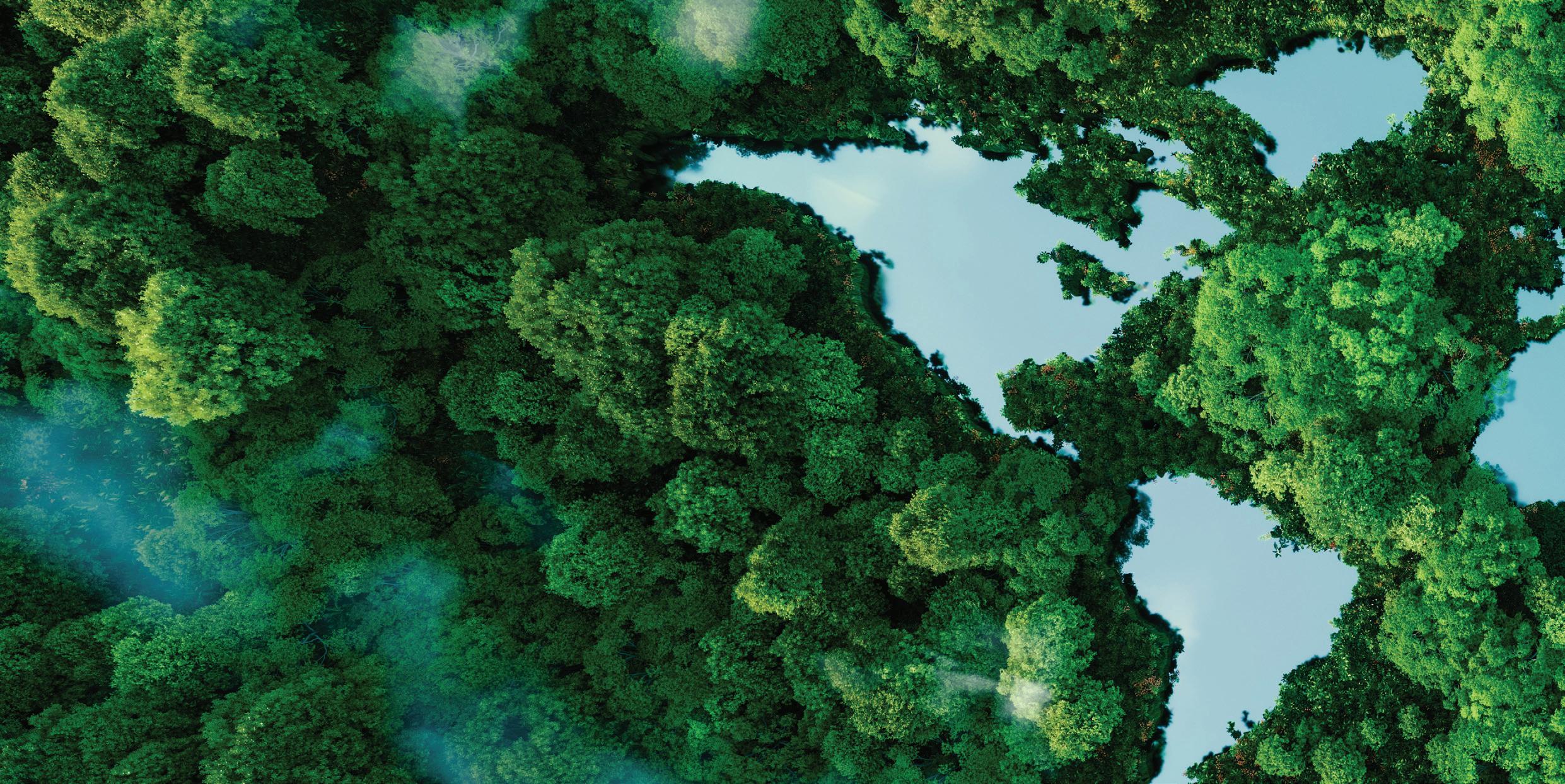
Biodiversity loss, climate change, and global pandemics are severe and interconnected crises that cannot be addressed in isolation. Habitat degradation, invasive species, illegal wildlife trade, pollution, and human-wildlife conflict drive these crises. They threaten the healthy ecosystems we all rely on for clean water, food, medicines, and shelter. We work with partner organizations and allies around the world to find solutions so that all life can thrive.
Our approach to protect and restore wildlife and habitats is collaborative , innovative , and multidisciplinary . Working alongside local communities and global partners, we apply the following skills and expertise to pressing threats to conservation. We use inclusive, comprehensive, and evidence-based solutions to address immediate and root causes of the loss of biodiversity, empowering those who live alongside wildlife to be stewards of nature.

Applied Social Science
Assisted Reproductive Technologies
Biodiversity Banking
Capacity Enhancement
Conservation Breeding
Conservation Education
Conservation Technologies
Conservation Translocation
Diagnostic Techniques
Disease Investigation & Response
Ecological Applications & Monitoring
Genetic Rescue
Plant Conservation
Wildlife Care
Wildlife Nutrition
Veterinary Care
We’re at the forefront of collaborative global biobanking efforts, receiving and sharing samples and data with hundreds of scientists worldwide.
Our Wildlife Biodiversity Bank is the umbrella term for all the biological materials—organized into six subcollections— preserved by our teams. It includes living and non-living materials, which together represent an invaluable collection of scientific information that is applied toward advancing wildlife health, care, education, and conservation science. Biobanks like ours have become an essential means to saving species in the face of increasing biodiversity loss, and they lay the foundation for trailblazing conservation solutions by bridging today’s samples to tomorrow’s scientific potential.
Our subcollections total millions of samples—diverse in both type and taxa—including:
850+ 10,600+ 65 million+ 600,000+ 2,200+
transfusion-ready bags of plasma individual cell lines (representing about 1,200 species and subspecies)
seeds (representing more than 450 types of plants)
We donated hundreds of wildlife artifacts to our partners at the U.S. Fish and Wildlife Service Forensics Lab. These items included confiscated and donated items that could assist in the identification and prosecution of wildlife trafficking crimes.
The cell lines of over 171 species —38 of which are new to the collection—were added to the Frozen Zoo, including Florida manatee, short-finned pilot whale, and Amazon milky tree frog.
microscope slides of tissue sections Gametes from 2,200+ individuals (representing nearly 450 species)
We made 32 plant collections , adding 57,842 seeds to the bank, including rare plants and taxa new to the collection. One of them, Prairie false oat, was previously believed to be extinct, having last been observed in Baja California, Mexico, in the 1880s.
Types of samples : Bodily fluids and blood components (plasma and serum)
These samples can be analyzed for elements such as viruses, hormones, or minerals; understanding the samples’ composition is critical in making decisions about wildlife health, management, and care. Scientists can also use these samples to develop novel diagnostic tools and protocols.
Types of samples: Seeds, plant cuttings, and herbarium vouchers (pressed and dried specimens)
The goal of this bank is to conserve material that can be propagated into plants from all 134 of San Diego County’s rare and threatened plants, providing insurance against catastrophic loss of a plant population or species.
Types of samples: Tissues, DNA, blood, and cells
This bank can be used to sequence and analyze wildlife genomes, which clarifies individual- and species-level genetic makeup. This information is crucial in illuminating wildlife physiology, behavior, disease, and the evolutionary potential of species to survive and adapt in our rapidly changing world.
Types of samples : Gametes (sperm and eggs), embryos, and cells
This collection of living materials is the most extensive and most utilized resource of its kind in the world. With applications including assisted reproductive technology and stem cell technology, the Frozen Zoo has the potential to restore genetic diversity in populations of threatened species.
Types of samples: Tissues, microbes, DNA, and RNA
These samples are an important window into the well-being of wildlife populations. Samples taken post-mortem can be preserved for decades or even hundreds of years, throughout which they may contribute to the global scientific community’s understanding of wildlife health.
Types of samples: Skeletal replicas, and items naturally shed or lost (e.g., feathers and leaves)
The artifacts in this collection are teaching tools, serving as a multisensory resource that allows us to engage with people of all ages and learning styles. They provide a key touchpoint for our guests to build understanding of biology and to cultivate personal connections with wildlife.
We know that a world where all life thrives is only possible when we work together: local communities, governments, conservation organizations, allies like you, and wildlife explorers of all ages. We are committed not only to wildlife, but also to the people and communities who share their ecosystems.
Our eight Conservation Hubs are the places where we’re currently most invested, and where we can use our century of wildlife expertise at the Zoo and Safari Park, to build on existing collaborations with internal and external partners and drive strategic outcomes—healthy wildlife populations, flourishing communities, and connected and resilient landscapes.
See page 86 for a list of partners, and page 92 for more about how you can join us.

You are our most important ally. The Zoo and Safari Park allow us to invest in conservation, right alongside you. Each time you visit, make a donation or support a project, purchase an item from us, or share what you know about animals, plants, and conservation, you’re playing a role in achieving our mission and securing the future for wildlife.Biodiversity Hotspots
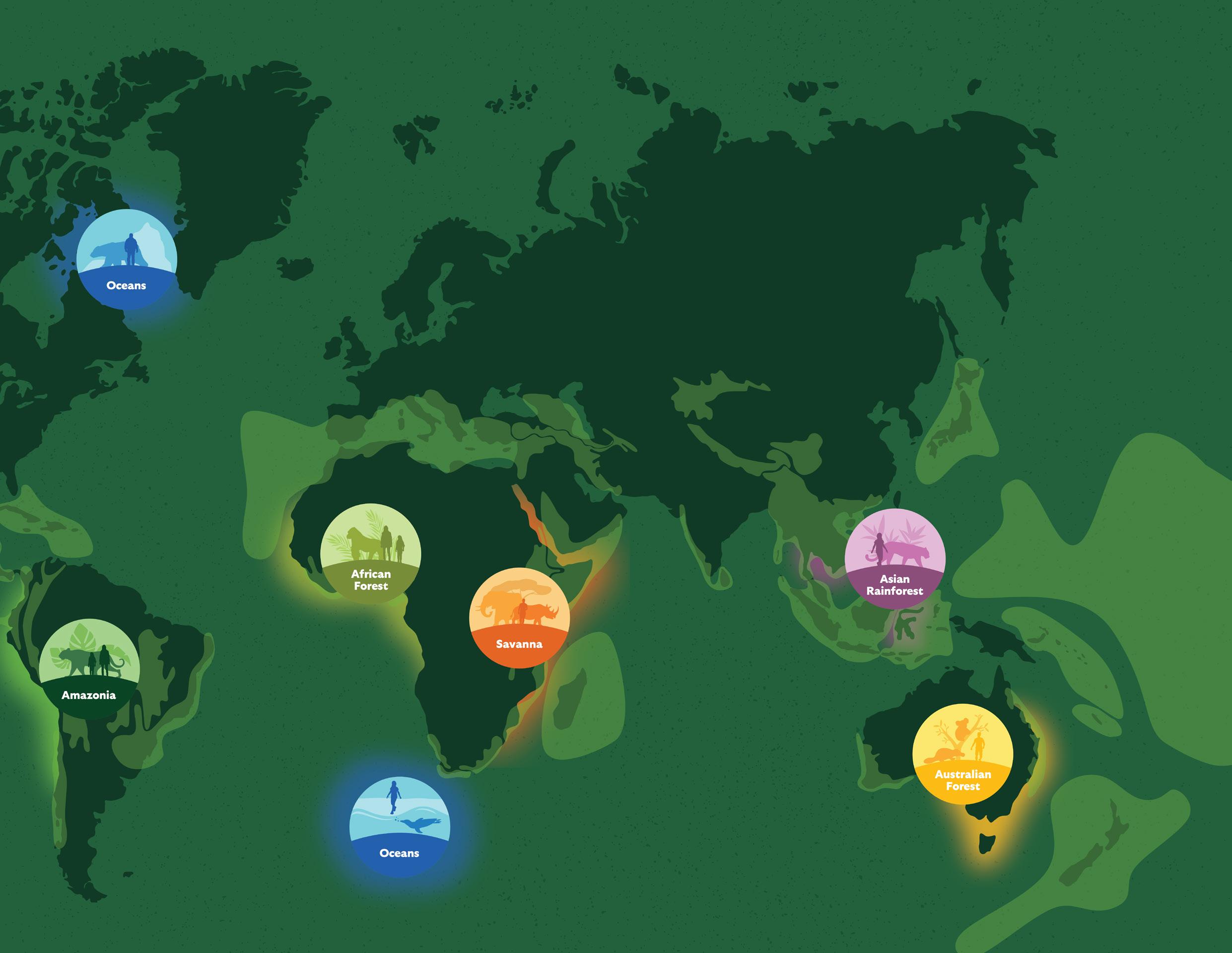
Much of our conservation work takes place in biodiversity hotspots—the most biologically rich, and endangered, regions on the planet.
Headquartered in a biodiversity hotspot, we’re proud to safeguard and celebrate the wildlife and ecosystems in our own backyard. The Southwest— a cross-border area spanning the southwestern United States and northern Mexico— sprawls from coasts to deserts, and incorporates diverse landscapes, including wetlands, forests, grasslands, and mountains. The distinct habitats of the Southwest are home to an array of wildlife found nowhere else on Earth. With projects across the region, we make conservation impacts by boosting populations and reintroducing threatened species, identifying and reducing threats to ecosystems, and using cutting-edge science and technology to monitor wildlife and native habitat.

All of our conservation work begins with the expertise honed from over a century of wildlife care at the Zoo and Safari Park, which are also the gateway to our Southwest conservation efforts.
We continue to work on establishing self-sustaining breeding populations of locally endangered western burrowing owls. This year, 27 burrowing owls bred at the Safari Park were reintroduced into protected native habitat. In total, about 100 birds have been reintroduced through the Burrowing Owl Recovery Program partnerships, including one pair rescued from the U.S.–Mexico border, who were reintroduced with their chicks.
More than half of the Safari Park’s 1,800 acres is set aside as the Biodiversity Reserve—one of the last remaining areas of pristine, intact native coastal sage scrub and chaparral habitat in the region.

Representing the native stewards of our land, the San Pasqual Band of Mission Indians graciously blessed the sites in Rancho Jamul and Ramona where burrowing owls were reintroduced.

To understand how to help young mountain yellow-legged frogs from the conservation breeding program thrive in native habitat, conservation scientists at the Safari Park created a special “exercise pool” with an artificial current. They found that if introduced at a young age, familiarity with the swift, stream-like setting boosted the frogs’ chances for survival after release. Discoveries like this are crucial to the long-term success of conservation programs.




The mountain yellow-legged frog breeding season at the Safari Park was a huge success. More than 4,000 eggs were laid, and at least half were successfully fertilized— the best results in four years . In collaboration with our partners, more than 500 frogs and tadpoles were reintroduced. We were particularly heartened to find that frogs previously reintroduced by our teams are now breeding , bolstering the wild population of this critically endangered amphibian.
In 2022, a record 117 critically endangered Pacific pocket mice from 31 litters were born under our care —a significant increase from 27 mice born in 2021. These pups will be reintroduced into native habitat in 2023. Although tiny, Pacific pocket mice act as crucial “gardeners” in their ecosystems, dispersing seeds and aerating soil. Conservation breeding is crucial to saving the species and protecting their native habitat.
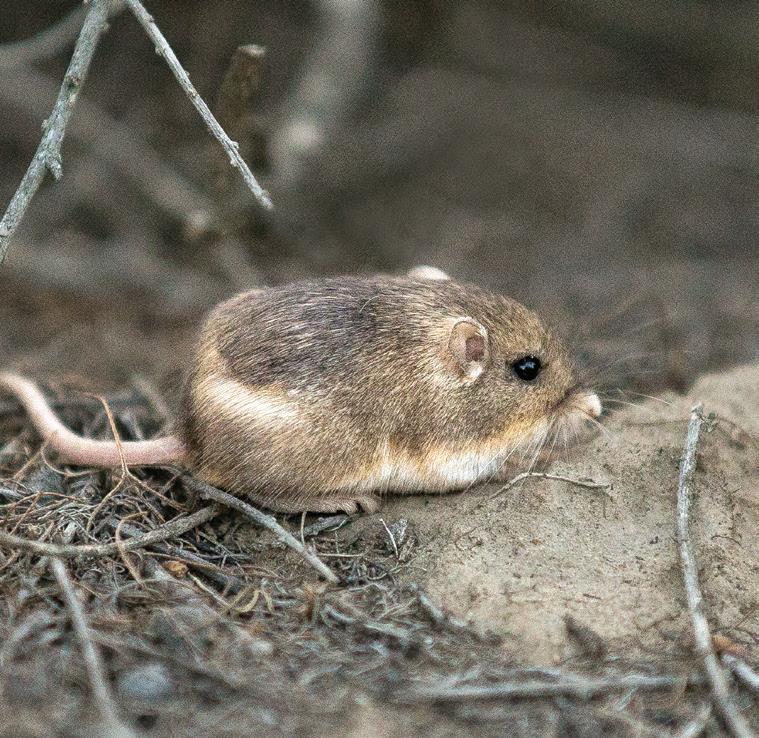
California condors need safe, healthy environments to thrive, and our ongoing commitment to saving the species goes beyond breeding and reintroductions. A study that included SDZWA coauthors found that condors living off the California coast may ingest toxins such as DDT and PCBs when they feed on marine mammal carcasses. This is vital information as we continue to protect these icons of the Southwest and their native habitat.
Our collaborative work to recover and protect California condors has made great strides in 40 years. From just 22 individuals in the 1980s, today’s condor population numbers over 500 birds . The program has also pioneered landmark genetic analyses that now form the basis of all condor conservation breeding efforts, to ensure a genetically diverse and thriving population.

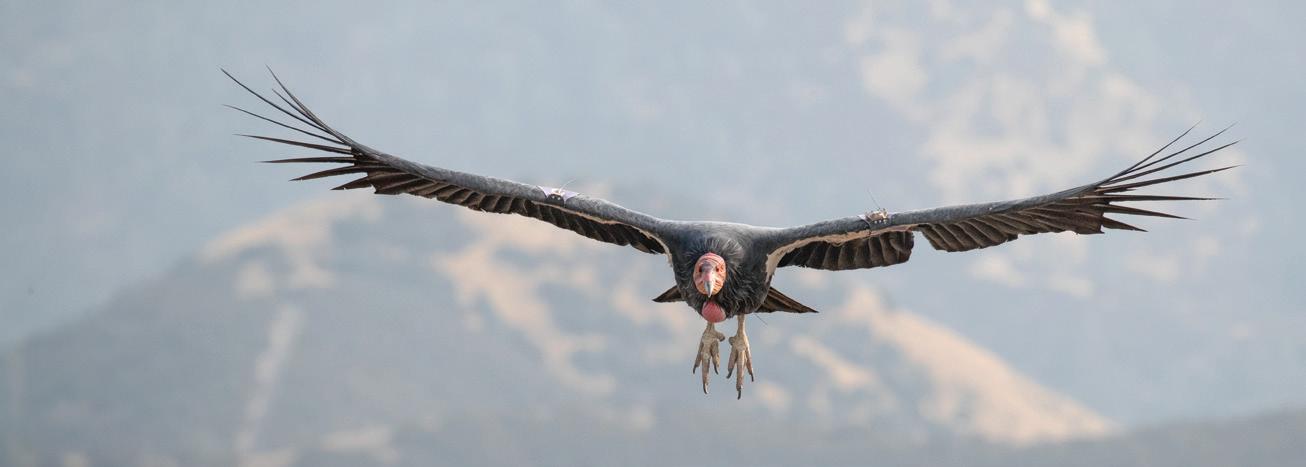

This year, our Conservation Genetics team confirmed a third egg produced by a female condor without a male , building on our groundbreaking 2021 discovery of condor parthenogenesis. The latest discovery, from a bird at Idaho’s World Bird Center, indicates that reproduction without males may be relatively common in condors.
The future is in the hands of our youth, and our Community Engagement team is lighting their path. Our new Native Biodiversity Corps program taught about 100 students the importance of wildlife, and the students worked with landscape experts to design and plant native wildlife gardens on their school campuses.

We had the honor and privilege of welcoming the San Pasqual Band of Mission Indians as they hosted the second annual Indigenous Peoples’ Celebration at the Safari Park . For thousands of years, members of the Kumeyaay Nation have been stewards of the land and native wildlife across much of Southern California and Mexico, including land where the Safari Park sits today. Community members joined us for storytelling and songs, celebrating—and learning about—the legacy and culture of centuries of wildlife stewardship by their native caretakers.
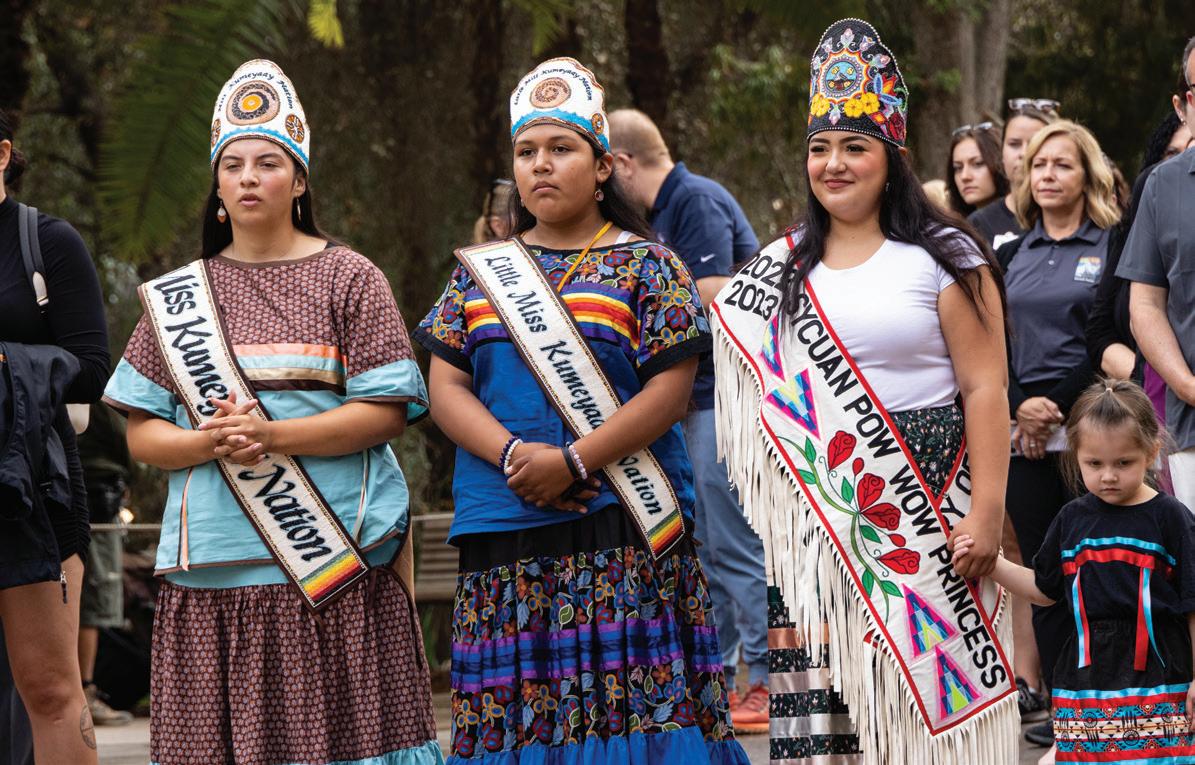
The Safari Park, in collaboration with the U.S. Fish and Wildlife Service’s Plant Rescue Center Program, received a half-ton of illegally trafficked cactuses and succulents. Our horticulturists inventoried, identified, and are caring for the plants, with the goal of planting them on Safari Park and Zoo grounds .
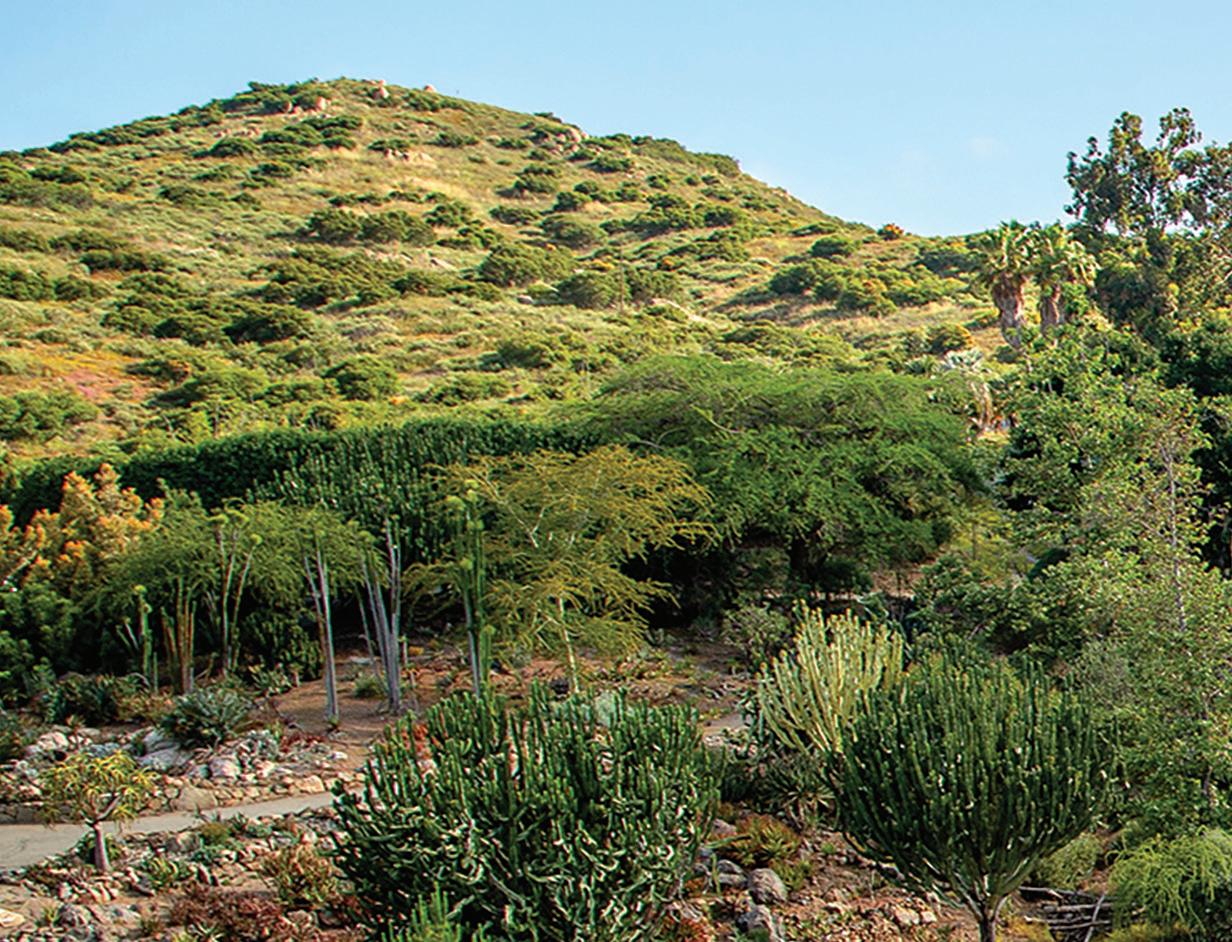

Prairie false oat, a native Southwestern grass, was presumed extinct until two individuals were rediscovered in northern San Diego County by local botanists, marking the first documentation of the grass in over 100 years . This year, the Native Plant Gene Bank team made the first seed collection and banking of this intriguing “lost” species.
In our accredited botanical collection, our horticulture team oversees 51 types of endangered coral trees from across the world—the largest grouping in the continental U.S. On occasion, these longtime Zoo residents offer unexpected delights. That happened this summer, when one of the critically endangered corals Erythrina latissimi joined the others in their annual showy display, in its first bloom since 2009.
Island scrub oaks are found only on the Channel Islands off the Southern California coast. Teams made the trip to gather acorns in order to explore ways to cryopreserve and grow more of them, as they work to save this endangered species .
More than 240 seedlings of the iconic Torrey pine —which is found only in Southern California, and primarily along the San Diego coastline—were planted in Torrey Pines State Natural Reserve. Additionally, our team installed dendrometer bands on over 200 trees of various sizes, allowing us to measure annual trunk growth as part of our effort to understand how drought and insect infestations threaten this rare pine species.
When local desert reached lethal temperatures of more than 109 degrees Fahrenheit, it was too hot for even heat-hardy desert tortoises to handle. Together with our partners, we launched an emergency rescue to move fragile hatchlings and unhatched eggs to a climate-controlled space inside The Living Desert Zoo and Gardens in Palm Desert until things cooled off. These endangered desert tortoises are part of our conservation breeding program to save the species.
To understand the effects of rising temperatures on desert tortoises, our teams fitted tortoises under our care with vitamin-sized, noninvasive sensors that detect movements and external temperatures. When placed on tortoises in their native habitats, these sensors could provide critical information about tortoise activity, behavior, and response to climate change.

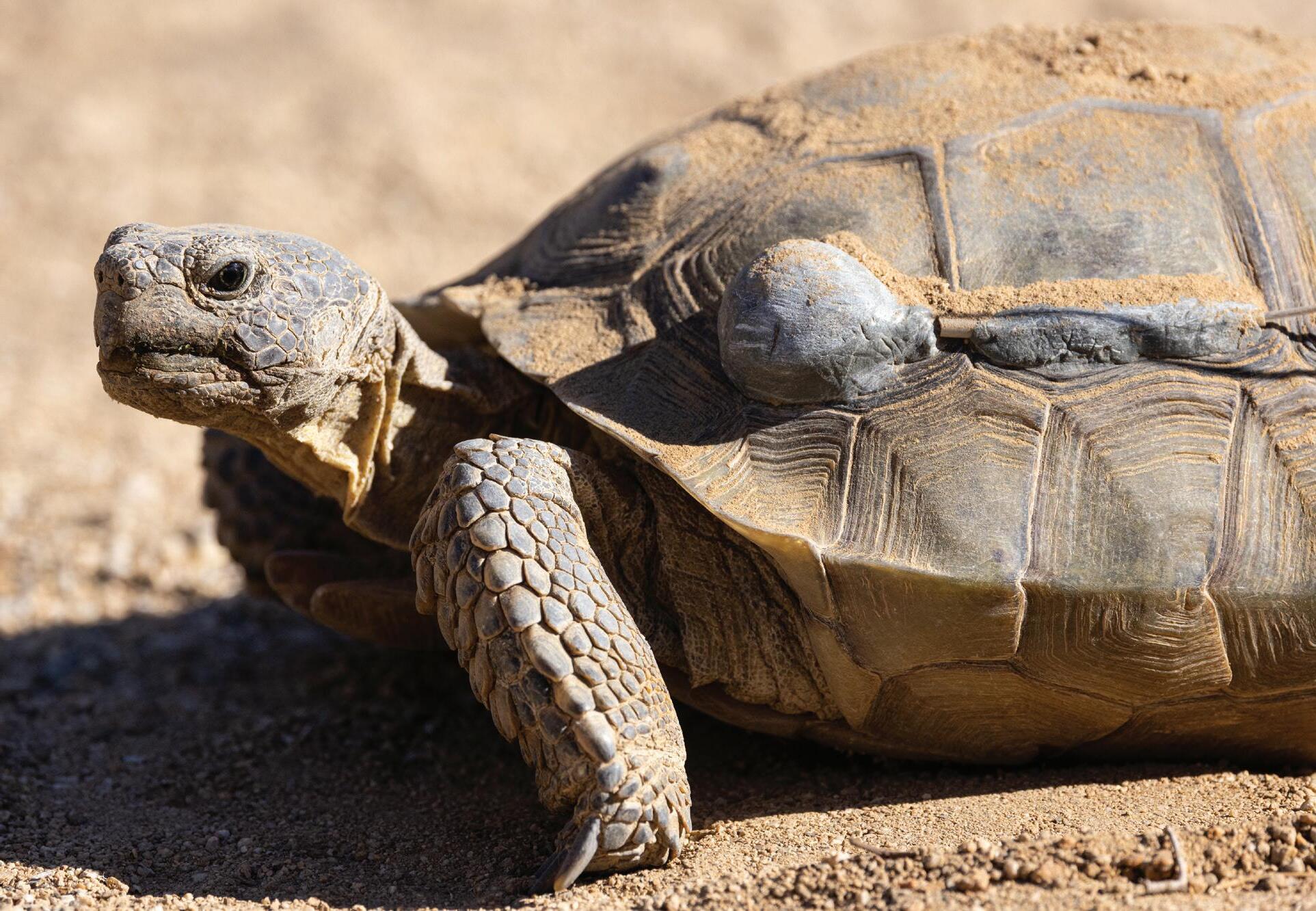
We deployed recording devices to record the boisterous calls of thick-billed parrots in two nesting areas in the Sierra Madre mountains of Chihuahua, Mexico. With the help of artificial intelligence programs, we will analyze the recordings to measure parrot calls per area and time, providing us crucial information about parrot abundance , and how we can continue to work with our Mexican partners to protect these endangered birds and their forest habitat.

Two endangered thick-billed parrot chicks fledged this year at the Safari Park. Each bird is an important addition to the global population, and we’re working to protect them in native habitat.
The Zoo and Safari Park continue to take extensive measures to protect the birds in our care from the contagious highly pathogenic avian influenza (HPAI). Enhanced biosecurity measures have included isolating our birds from wild migratory birds, continuing regular health assessments, quarantining new arrivals or those showing symptoms, ensuring robust sanitization practices, and more.
To date, these steps have kept birds in our care safe from this fatal pathogen . While the Centers for Disease Control and Prevention consider the risk of HPAI to the public low, we constantly monitor the situation and take appropriate measures to protect the birds, our staff, and the public.
Flamingos have greeted guests at the San Diego Zoo since 1932. When the birds were moved to a protected area safe from HPAI, flamingo statues temporarily welcomed visitors instead!

San Bernardino and Stephens’ kangaroo rats are critical to the biodiversity of Southwestern landscapes, supporting plant growth by scattering seeds and aerating soil as they burrow. In 2022, we worked with partners to add the San Bernardino species to the California Endangered Species Act. Meanwhile, our conservation work helped downlist the Stephens’ kangaroo rat from endangered to threatened.

Central African forests are rich in wildlife and a site of critical importance to the health of our planet. Containing the world’s second-largest tropical rainforest, an abundance of rare plants, and home to some of the most endangered primates on Earth, this region is a globally significant carbon sink, helping mitigate climate change.
In Cameroon’s Ebo forest, we work hand in hand with local communities to save and protect unique African biodiversity. Together, our teams and partners protect vulnerable species and habitat, documenting animals and plants previously unknown to science, and celebrating the cultural and ecological heritage of one of Africa’s most intact and important rainforests. Local communities are at the center of conservation in the Ebo forest. Acting as stewards of their shared ecosystem, they work closely with our teams to make inclusive decisions about future land management, ensuring that their needs are met, their heritage is respected, and wildlife is protected in the process.
 African Forest
African Forest
Conservation starts locally, and communities are at the center of conversation in the Ebo forest. Nearly 200 people from government agencies, local authorities, nonprofits, and 40 regional villages demonstrated how collaboration can lead to significant, meaningful change during a gathering to shape plans for the future of the forest. This inclusive event, hosted by the Ebo Traditional Chiefs’ Association and our African Forest team, resulted in a sustainable community-led conservation action plan to protect the forest for generations to come.
Community-led guardian clubs are critical for primate conservation in the region. The newly formed Clubs des Amis des Chimpanzés focuses on chimpanzees while the long-established Clubs des Amis des Gorilles protects gorillas of the area. Both species are unique to the area and face significant threats from poachers and habitat loss. Club members watch over these primates, fueling conservation efforts, promoting local and sustainable livelihood activities, and fostering community well-being.

The enthusiasm of the 60 primary students who attend conservation activities every other month at the Mbakaou Wildlife Education Center in Cameroon is spreading to high schoolers, who recently began engaging in activities as well. Youths join to pick up litter in their communities and organize conservation marches, all of which expand awareness and build support for the Center’s work .
Women are crucial to the success of these conservation efforts, and we’re committed to increasing their local participation and engagement. Our African Forest team joined these clubs for conservation-focused International Women’s Day celebrations, and more than 110 women were involved.

Ebo forest is home to subspecies of gorillas and chimpanzees found nowhere else on Earth.

Our Conservation Science team participated in Primates in Peril: The World’s 25 Most Endangered Primates 2022–2023 , a report crucial to our mission. The report has served for more than 20 years as an emergency call to action for the world’s most critically endangered primates, including some of those we’re working to protect: the NigeriaCameroon chimpanzee in Ebo forest, and two lemur species (blue-eyed black lemur and Coquerel’s sifaka), which can be seen in their Madagascar Forest habitat at the Zoo’s Conrad Prebys Africa Rocks.
The youngest ring-tailed lemur in our care, born in May 2022, is now old enough to spend her days playing with her troop at the Zoo’s Africa Rocks Madagascar Forest habitat. Little Kintana has grown into her big eyes, woolly coat, and signature ringed tail, watched closely by first-time mom Rindra as she explores her home and the dynamics of the troop. Our conservation team helps protect these endangered primates on the African island of Madagascar, their only native home.

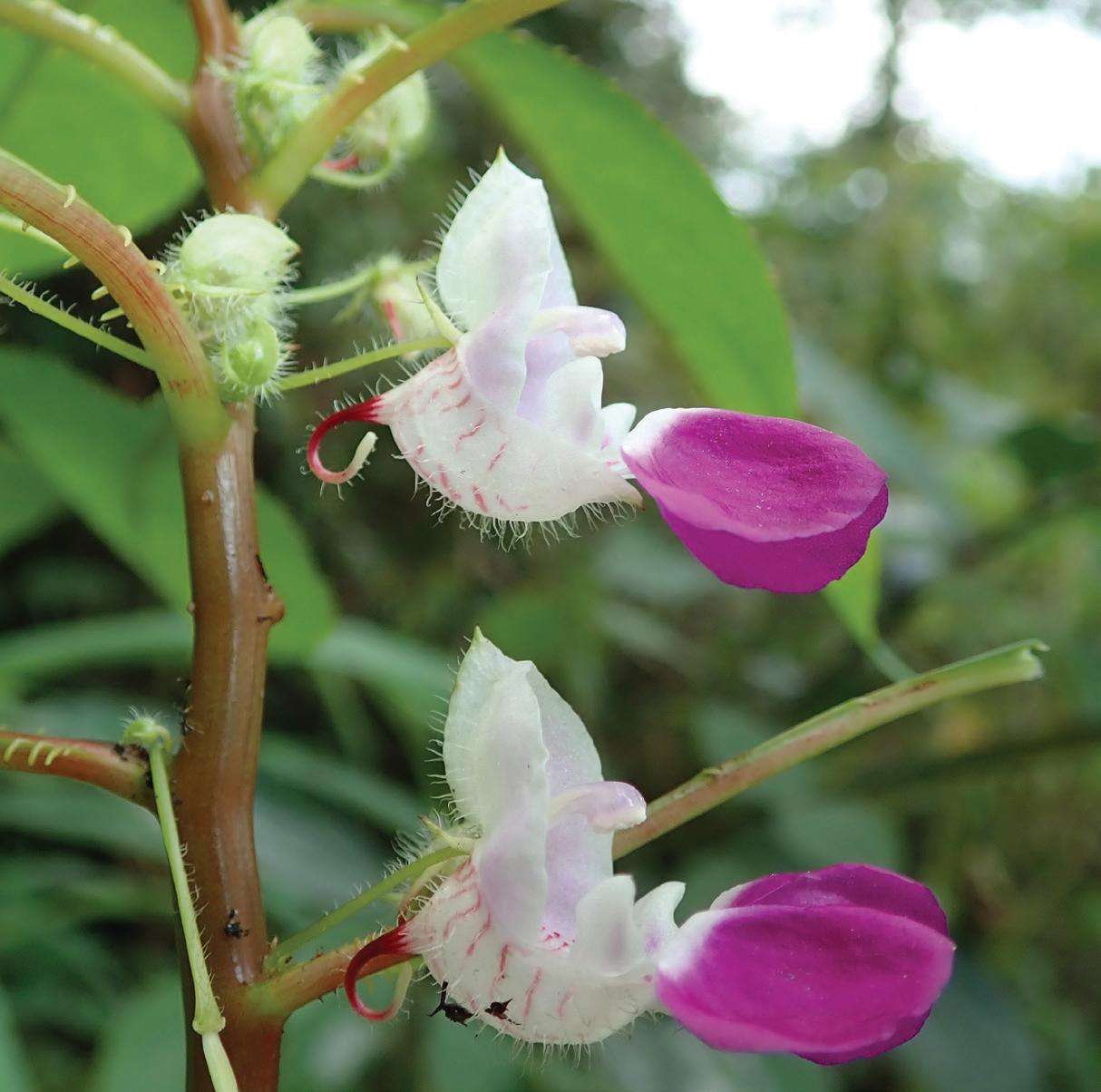
The rocky outcrops of the Ebo forest are where the small, intensely colored foliage of the Impatiens banen can be found. While this plant is newly introduced to science, it was already well-known to native stewards of the land , including the Banen tribe. Our African Forest team proudly joins its Cameroon partners in naming this extraordinary plant after the caretakers of this critical forest habitat.
Some of the planet’s most iconic—and endangered— wildlife roam Africa’s savannas. Covering nearly half the vast continent, these beautiful, carefully balanced grassland ecosystems are the vital foundation for complex food chains, also called food webs, and great migrations. They’re also integral to the pastoralist livelihoods of local people who share the savanna.
In northern Kenya, we partner with local communities and organizations on innovative, comprehensive conservation strategies. Integrating cuttingedge science with our expertise in wildlife care and health, we collaborate to save wildlife and elevate local voices across the savanna so that all who share it can thrive.
 Savanna
Savanna
We broke ground on construction of The Chui Mamas Center, where soon, more than 300 women in Laikipia County, Kenya, will share resources, learn new skills, and develop life-changing income opportunities as they work to protect leopards .
The Chui Mamas, Swahili for “Leopard Mamas,” is a communitybased women’s organization that works closely with our leopard conservation team to foster coexistence with these vulnerable predators.
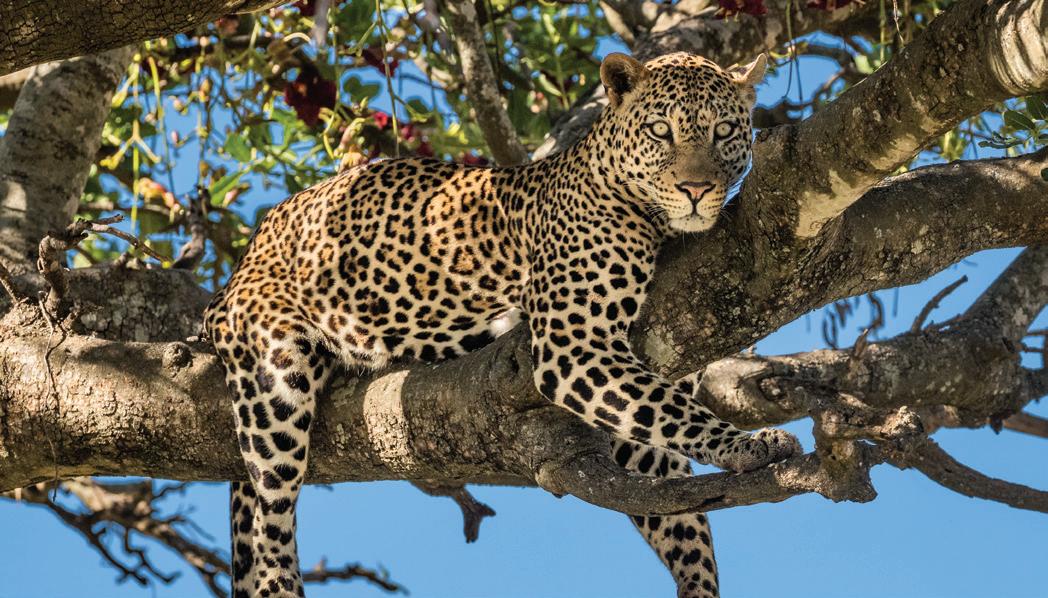
Conservation work in Kenya is only possible through collaboration with local communities that protect wildlife and engage wildlife allies, including (“Giraffe Guards”), a local community conservation group that protects herds across
Twiga Walinzi worked with Wildlife Clubs of Kenya and Giraffe Conservation Foundation to expand giraffe-themed field trips to Meru National Park to 1,000 students .
Supporting the Lion Governors program—hosted by our partners at Ewaso Lions and led by elders of Kenya’s Samburu community—is an impactful way to protect lions in their native habitat. We support Lion Governors as they respond to lion conflict, monitor the cats, and stimulate inclusive dialogue around lion conservation.
Our partners from Ewaso Lions visited the Safari Park and met with our Conservation Science and Wildlife Health teams as part of our joint effort to protect lions . They also shared stories and efforts from the Mama Simba, a group of Samburu women who protect lions and restore rangeland habitat in their home communities.
Through a new partnership with Grevy’s Zebra Trust, we are working together on efforts to restore northern Kenya’s rangelands, thus helping save the endangered Grevy’s zebra. In one of the latest examples of our community-led collaborations, we are supporting the development of sustainable grazing plans for livestock, women’s grass seed collectives, and the revitalization of the grasslands that many wildlife and people depend on .
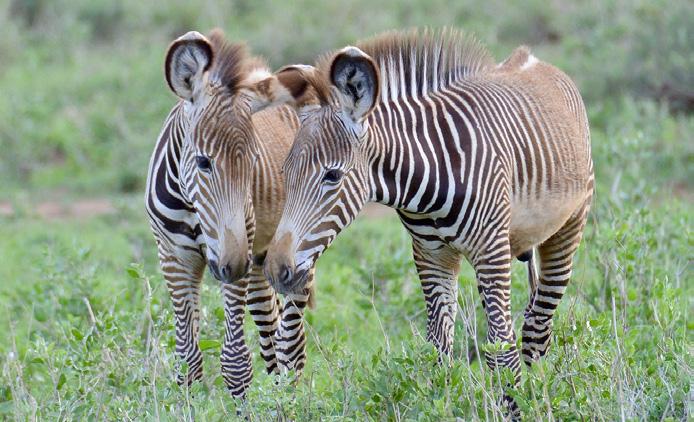
engaged with 1,613 students at their local schools and community events through field trips to Loisaba and Ol Pejeta conservancies, giraffe lessons, essay competitions, and World Giraffe Day celebrations.
The Zoo and Safari Park participated in this global celebration of the tallest land animals, sharing our expertise in giraffe conservation and offering guests tangible ways to support the efforts of our “Giraffe Guards” in Africa.

For reintroduced elephant calves in protected areas to thrive, they must learn to be wary of natural predators such as lions. In 2022, our conservation scientists and care teams designed and tested antipredator training methods at the Safari Park , using recordings of lion calls and wild elephants’ responses as well as introducing the scent of lion feces. The observations from the training could one day benefit reintroduction efforts with our partners at Reteti Elephant Sanctuary and Save the Elephants in northern Kenya.

We work with our partner Save the Elephants to monitor ranging patterns, social behavior, and health of reintroduced orphaned elephant calves following their rehabilitation at Reteti Elephant Sanctuary. Our scientists have also studied movement among the Safari Park herd to understand herd dynamics and mother-calf relationships.

Wildlife care specialists and conservation scientists were on hand for three days during the Safari Park’s Wild Weekend: Elephants. Coinciding near World Elephant Day in August, guests discovered more about the world’s largest land animal, the risks they face, and how their support is helping save these gentle giants. Wild Weekends are a chance to offer extra fun and engagement to guests while creating more allies for wildlife .
Guests crafted paper beads similar to those treasured by our Kenyan Samburu community partners, strolled along the sunflower path while learning how the flowers are used in innovative conservation efforts, and delighted in visiting with the elephant family in our care.
Big changes are afoot as we transform Elephant Valley, the epicenter of our global elephant conservation work and heart of the Safari Park. We broke ground on this special project in November.

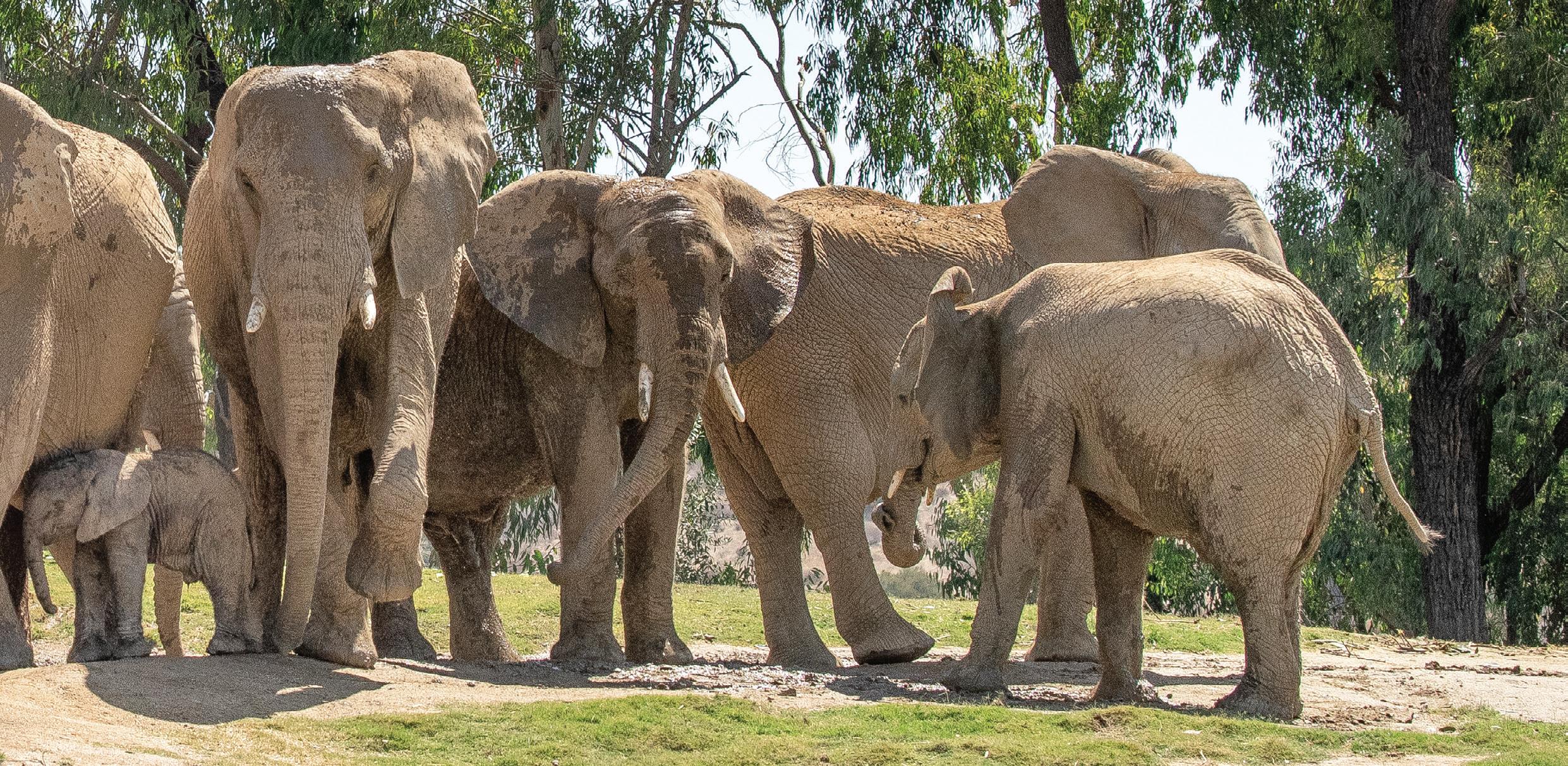 See page 76 to learn more.
See page 76 to learn more.
The Safari Park welcomed three new African lion sisters in 2022. Malika, Zuri, and Amira are the great-grandcubs of Izu and Mina, a beloved pair that were in our care for 18 years . The sisters are thriving as ambassadors for their species, which is vulnerable to extinction.
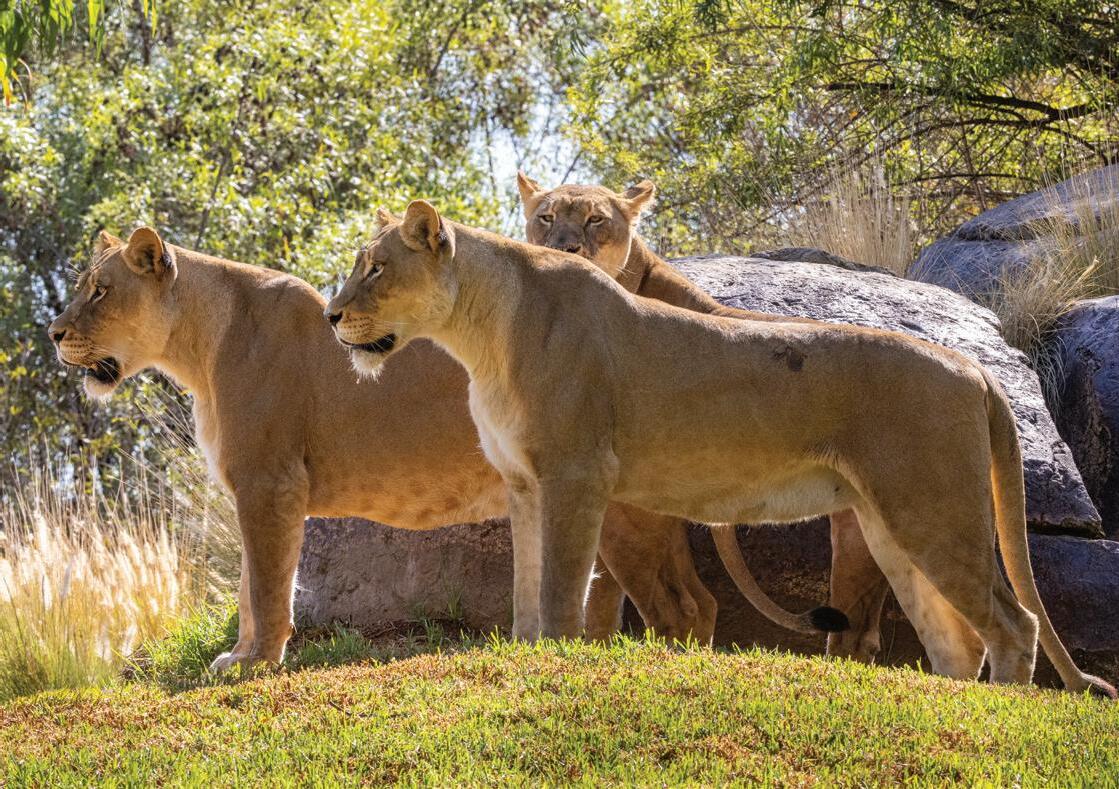
When a giraffe calf born at the Safari Park in February was unable to stand firmly on her own four hooves, Zoo and Safari Park teams urgently collaborated to get Msituni the help she needed. Our teams formed a remarkable partnership with Hanger Clinic, which normally only creates orthotics for people. Together, they were able to fit Msituni with special custom leg braces so she could heal—a story that touched hearts and made headlines worldwide . Today, she’s thriving and can be spotted keeping up with her herd as they gracefully gallop across the Safari Park’s savannas.
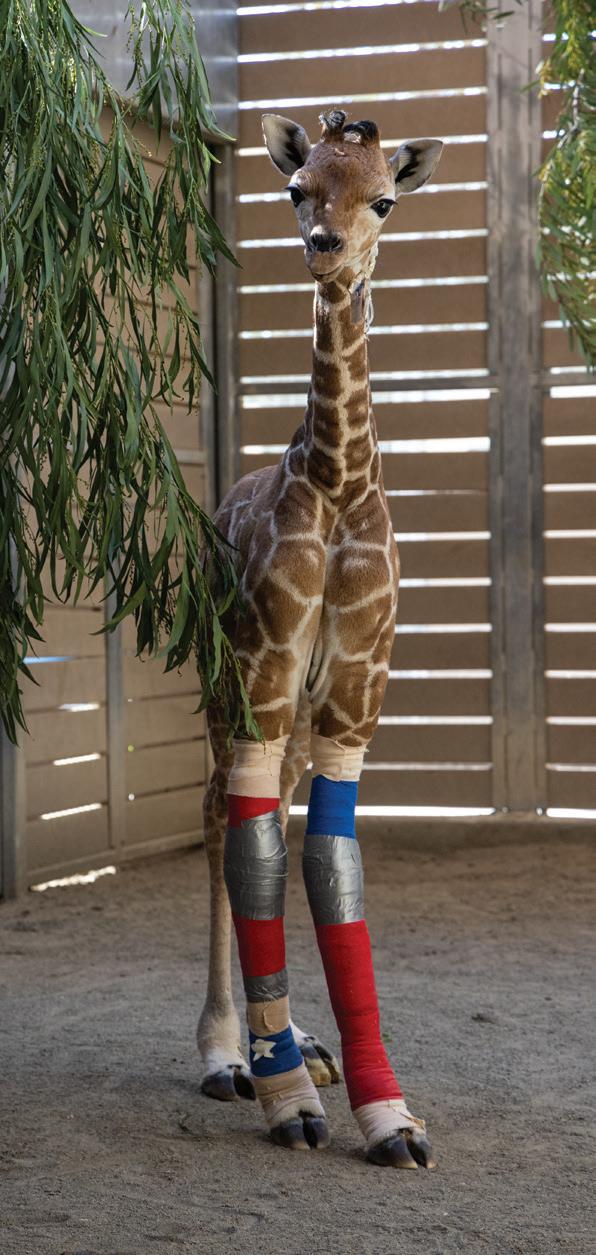
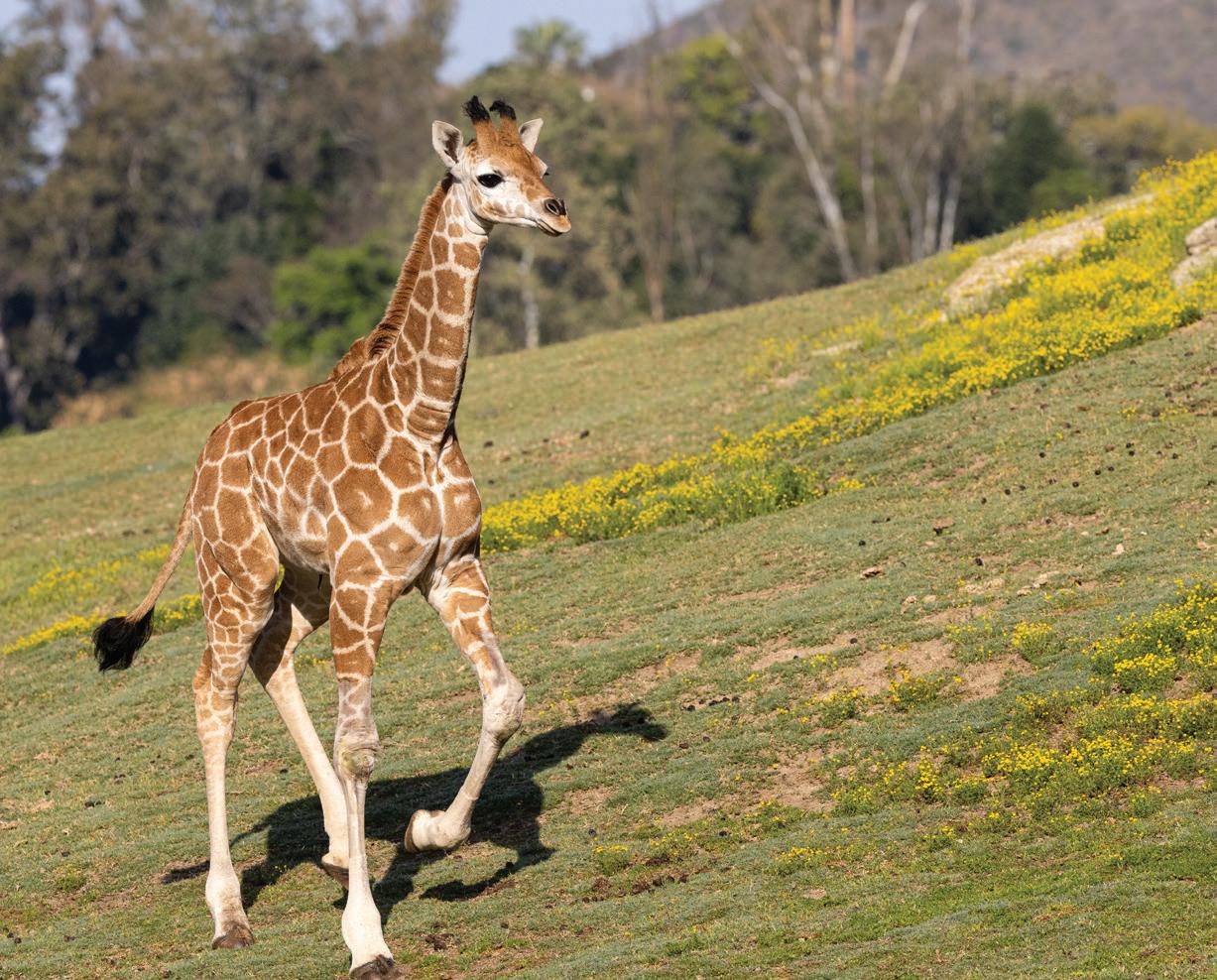
Often dismissed as unseemly scavengers, vultures are key to healthy ecosystems —as guests learned during September’s International Vulture Awareness Day at the Safari Park. Guests were dazzled by the massive wingspan of these awe-inspiring birds as they engaged with wildlife care specialists to learn about these critical “sanitation workers,” and how they help keep disease from spreading in their native ranges by cleaning up carrion and carcasses.
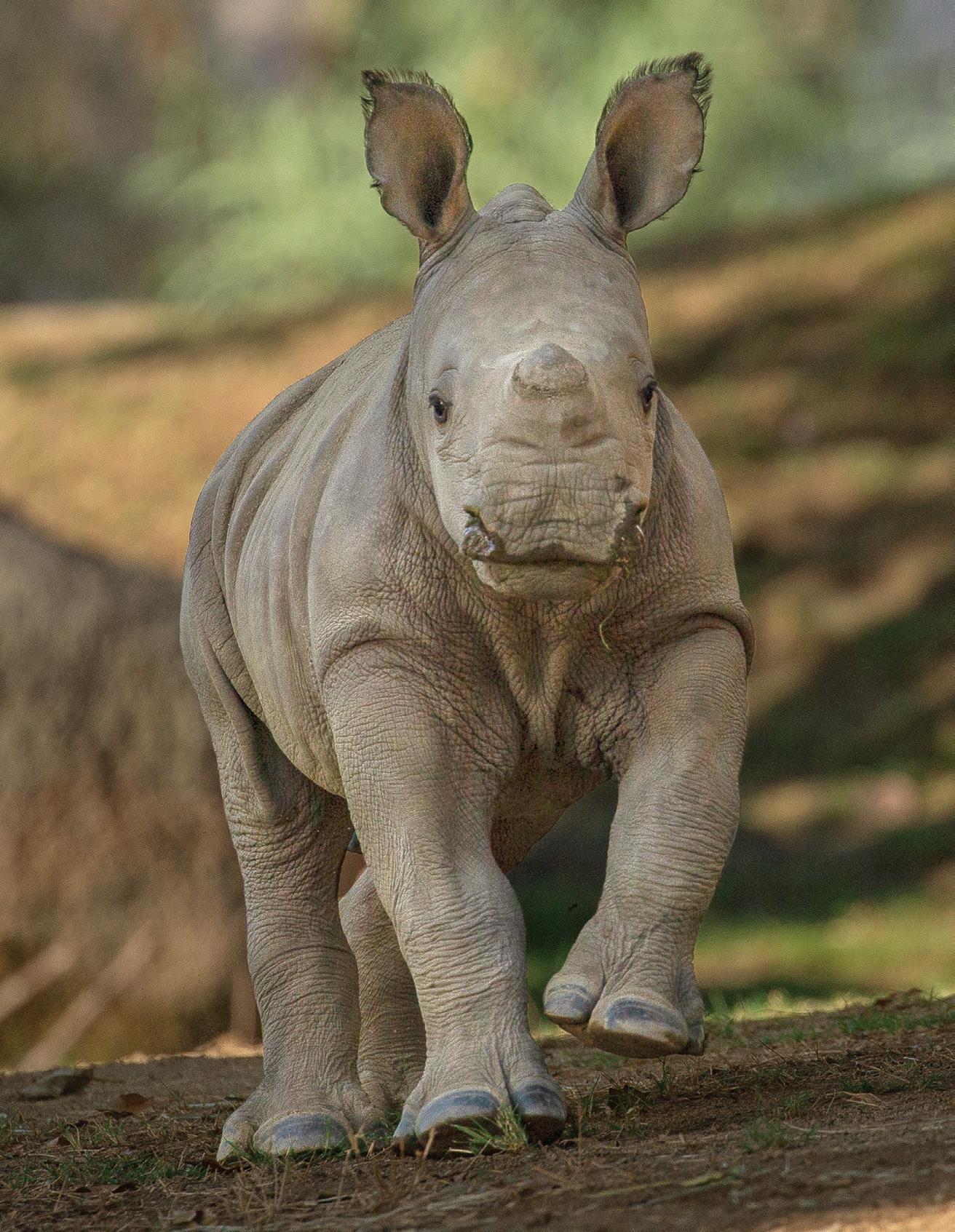
The birth of southern white rhino Neville may help save the functionally extinct northern white rhino—of which only two remain on Earth. Born at the Safari Park’s Nikita Kahn Rhino Rescue Center in August, Neville’s arrival shows that his mother, Livia, could be capable of being a surrogate mother to a northern white rhino embryo in the future. The Northern White Rhino Initiative is dedicated to saving the species through innovative reproductive technologies, and Neville’s birth is a crucial milestone .
Cutting-edge science and community involvement are integral to our global conservation work, and they made for an engaging itinerary for guests to the Zoo and Safari Park on World Rhino Day in September. Special events included a behind-the-scenes look at conservation science, including the Frozen Zoo.

With shared goals of saving, protecting, and caring for wildlife, we continue nurturing collaboration with Kenya’s Ministry of Tourism and Wildlife, Kenya Wildlife Service, and the Wildlife Research and Training Institute as we support new opportunities for the Nairobi Safari Walk and the Nairobi National Park. Stephen Chege, B.V.M., M.Sc., works in-country, bringing a deep knowledge of Kenya’s wildlife and conservation landscape as he collaborates closely with partners to identify research opportunities and priorities.
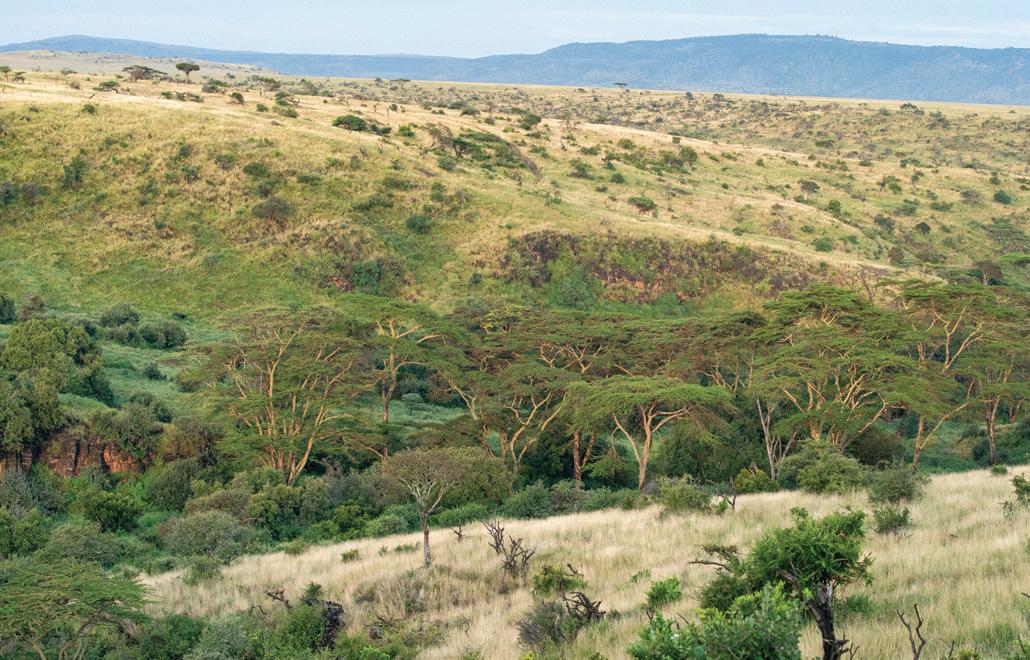
Oceans cover more than 70 percent of the Earth’s surface. They’re critically important to the health of our planet and are closely interconnected with life across the globe. Oceans pull in over two billion tons of carbon from the atmosphere each year, and billions of people depend on them for food and livelihood. With the health of our oceans threatened by human activities resulting in climate change and pollution, the need for protection and greater understanding of these immense ecosystems is urgent.
With the support of our allies, we’re protecting oceans and marine life. Through innovative technologies and collaborative partnerships, we apply our expertise, skills, and experience working with wildlife in San Diego, across the Arctic, and in Southern Africa.
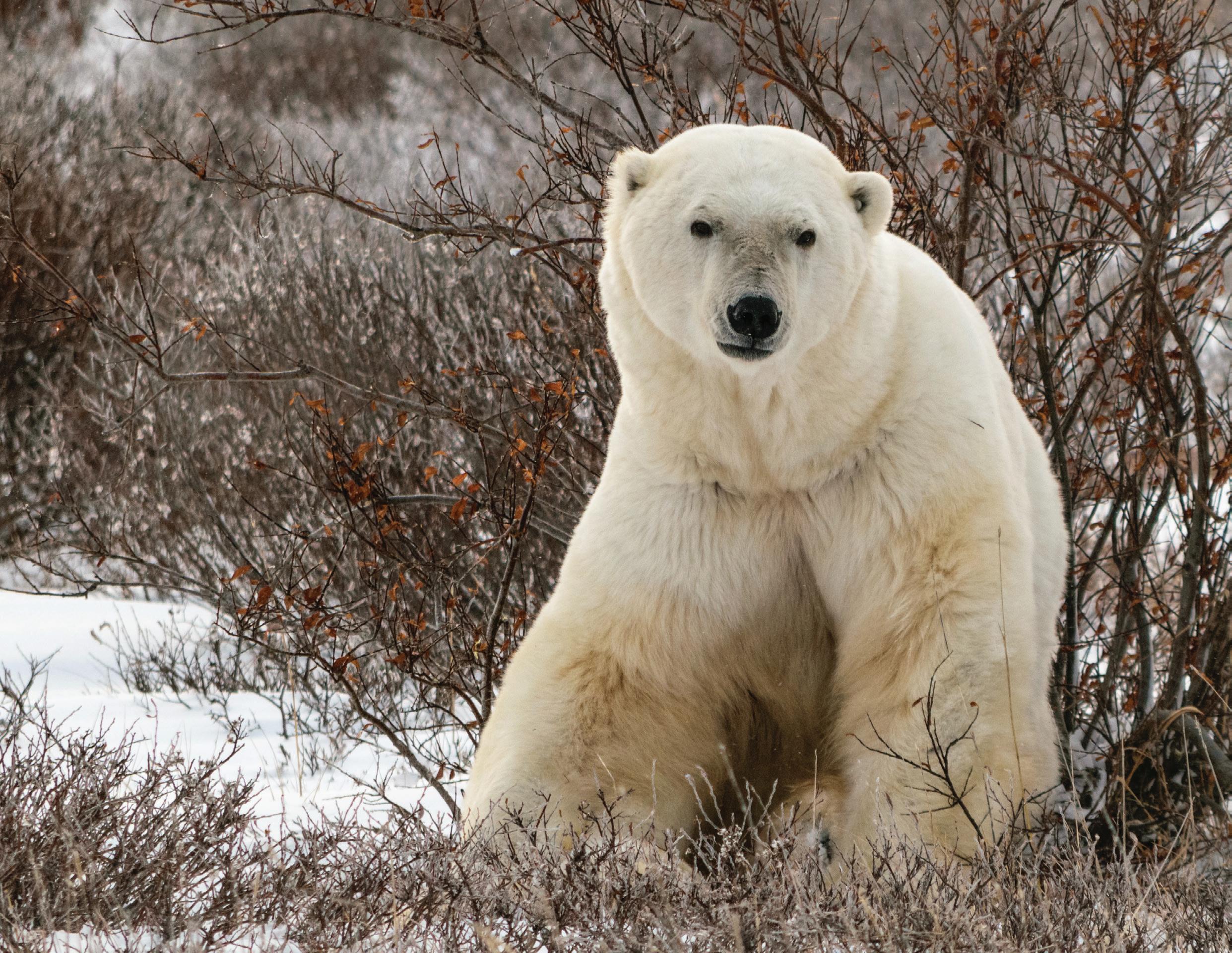
Polar bears are marine mammals, dependent on sea ice to hunt and find mates. As their sea ice habitat continues to disappear, polar bears and people are increasingly sharing space in new ways . We work with partners and local communities on techniques for healthy human-polar bear coexistence, including bear-safe residential waste containers and other methods to deter polar bears, alert systems when polar bears come into settled areas, and ongoing community outreach and education.
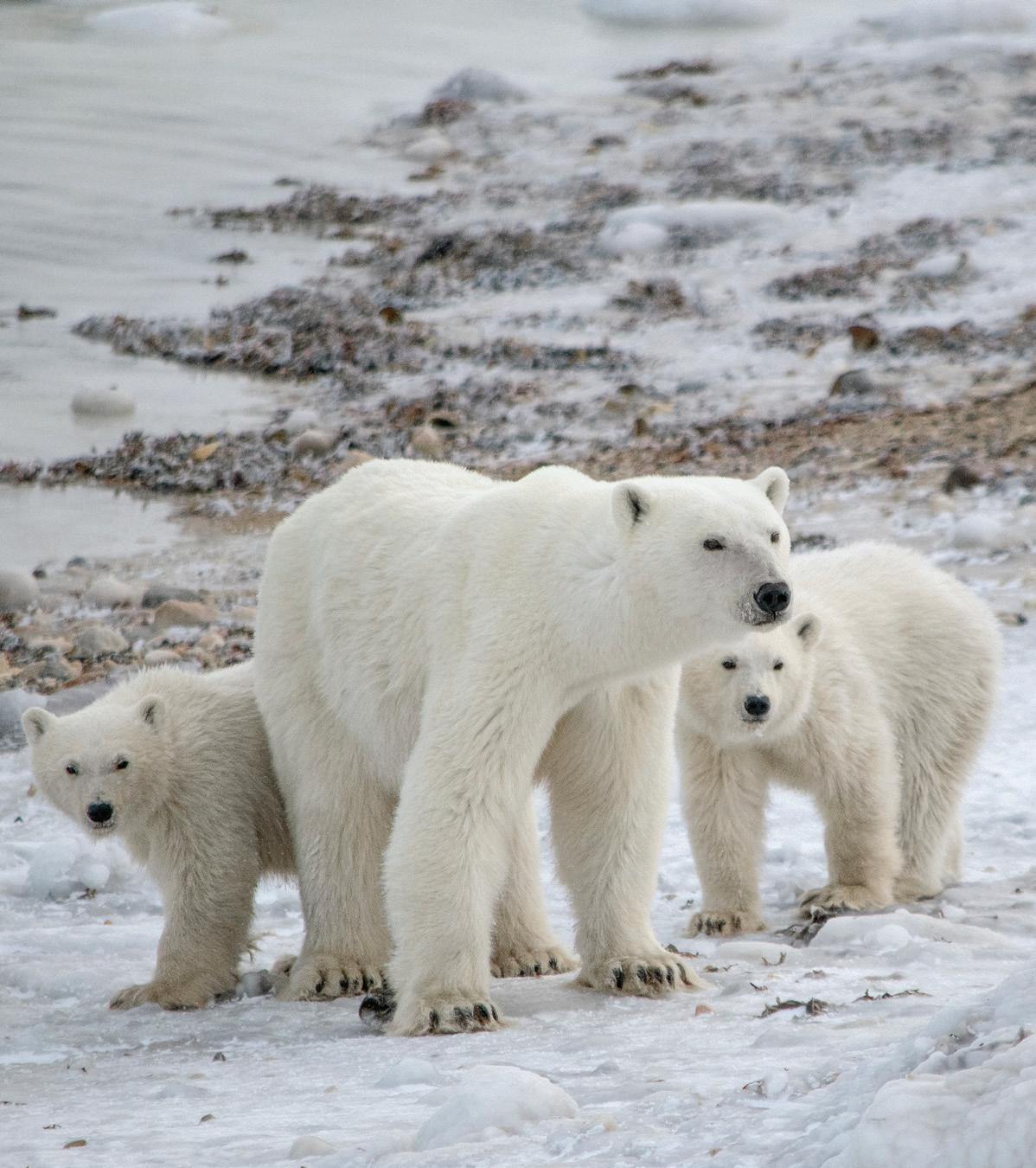
Cushy, custom-made boots made all the difference for Lucas, an African penguin at the San Diego Zoo. Lucas has bumblefoot, a degenerative foot condition that causes uncomfortable sores and puts his health at risk, but these custom shoes protect his feet and improve his mobility. Our Wildlife Care and Health teams collaborated closely with animal orthotic specialists Thera-Paw on this innovative healthcare solution . African penguins are endangered, and as populations continue to decline, the health of each and every one is vital to the future of the species.
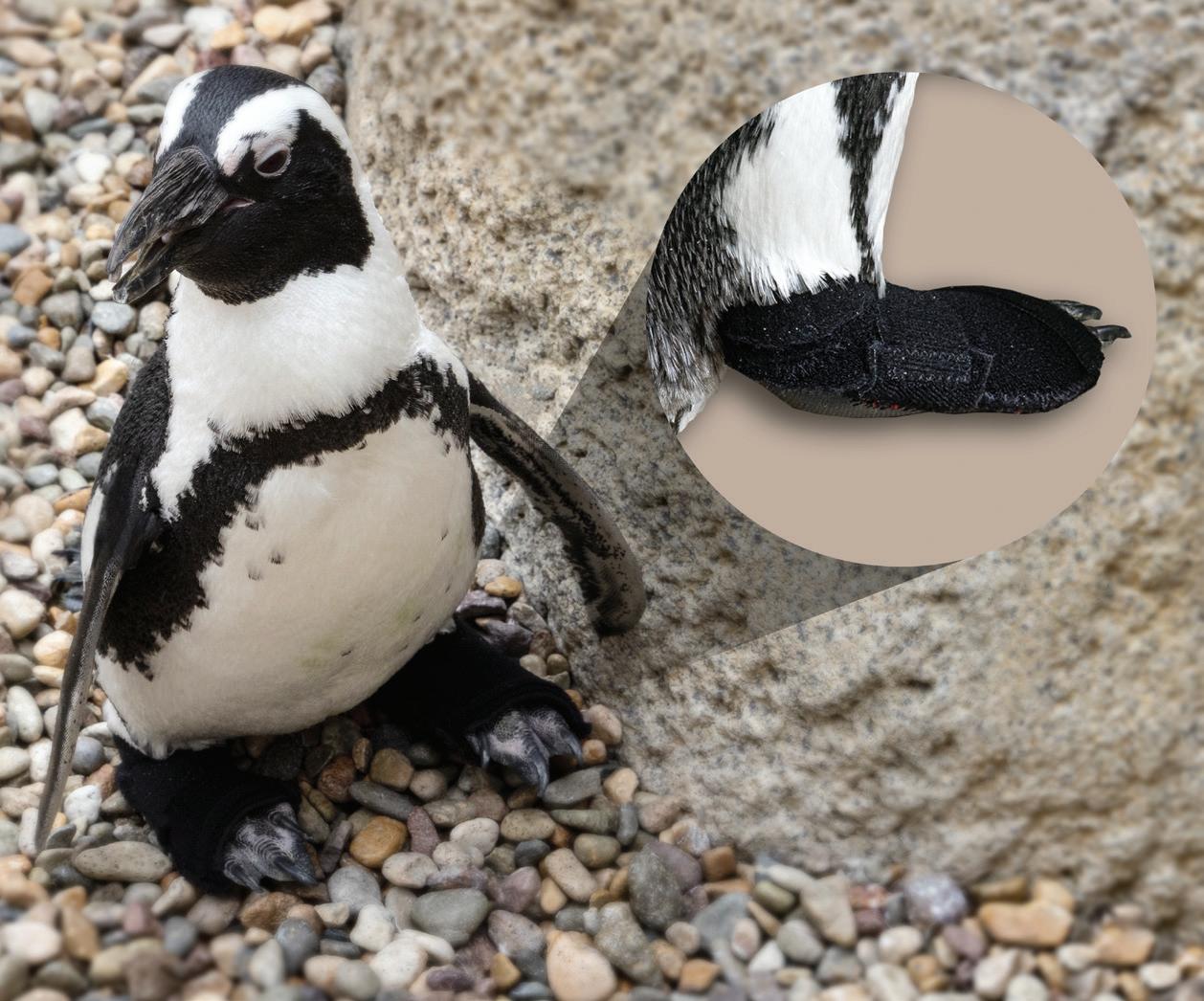
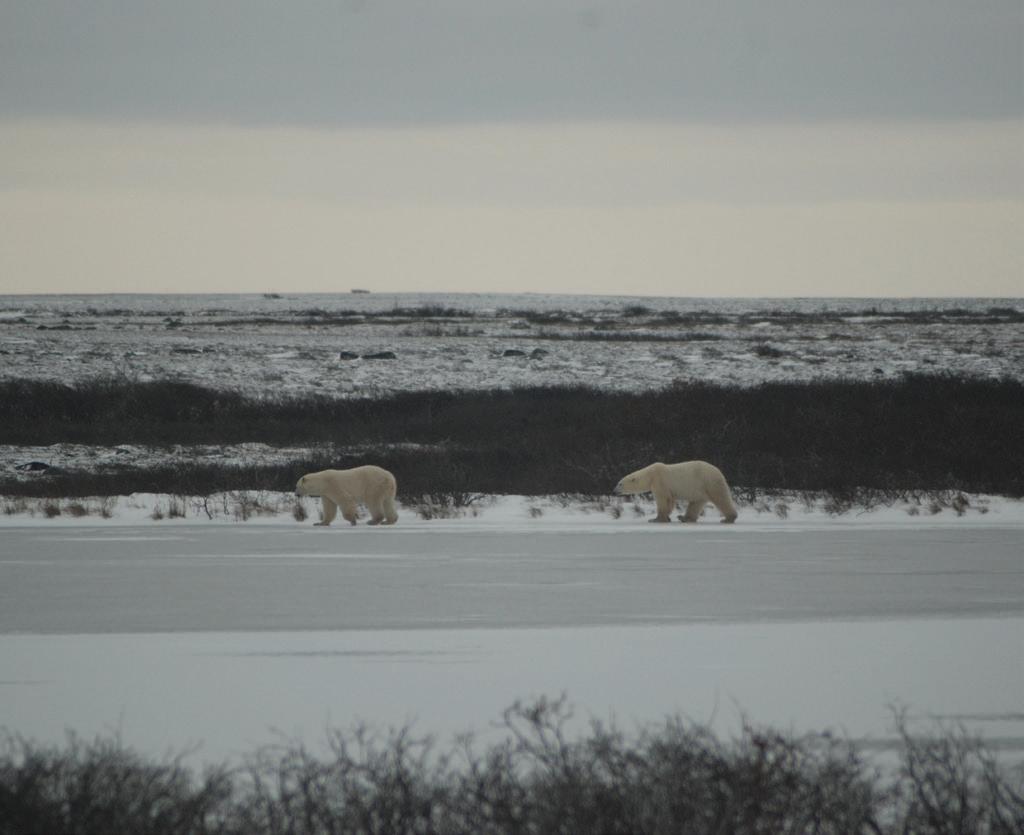

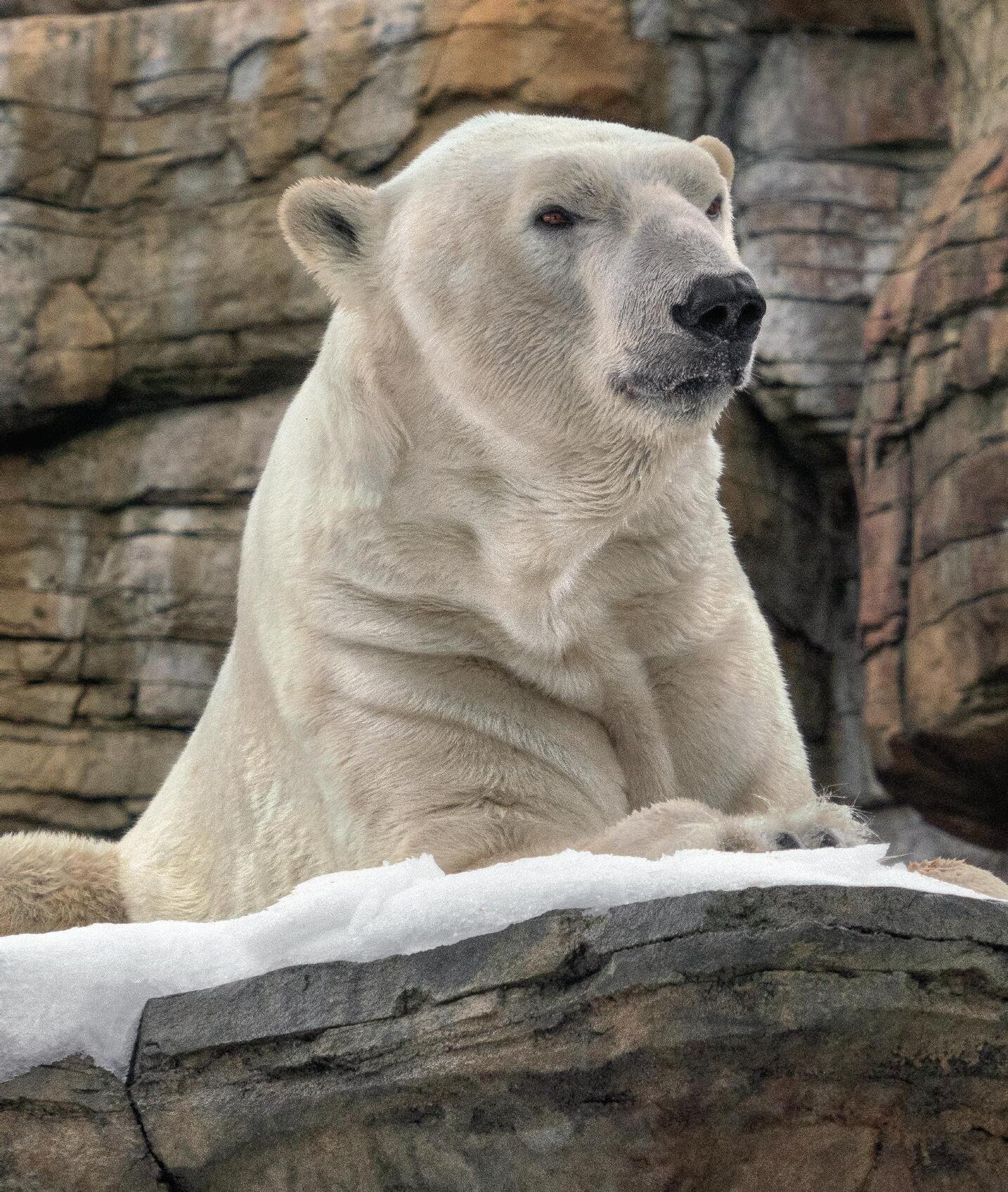
When summer causes polar bears’ icy habitats to melt, they have no alternative but to seek refuge on land. For more than 40 years, we’ve worked with partners including Polar Bears International to monitor the planet’s largest bears in Churchill, Canada’s Hudson Bay. Satellite tracking, tagging, and monitoring of individual bears are crucial as we devise plans to protect them. Ear tags with GPS monitors placed on 14 bears in 2022 will show where and how the bears move, increasing understanding of how these marine mammals use their unique habitat .
This year, state-of-theart cameras that were tested in the Safari Park’s Biodiversity Reserve were deployed across the Arctic in Svalbard, one of the northernmost inhabited areas between Norway and the North Pole. The custombuilt surveillance equipment will help researchers get a closer look at the denning habits of these Arctic giants in harsh conditions and difficult terrain, providing critical information that will help guide management strategies.
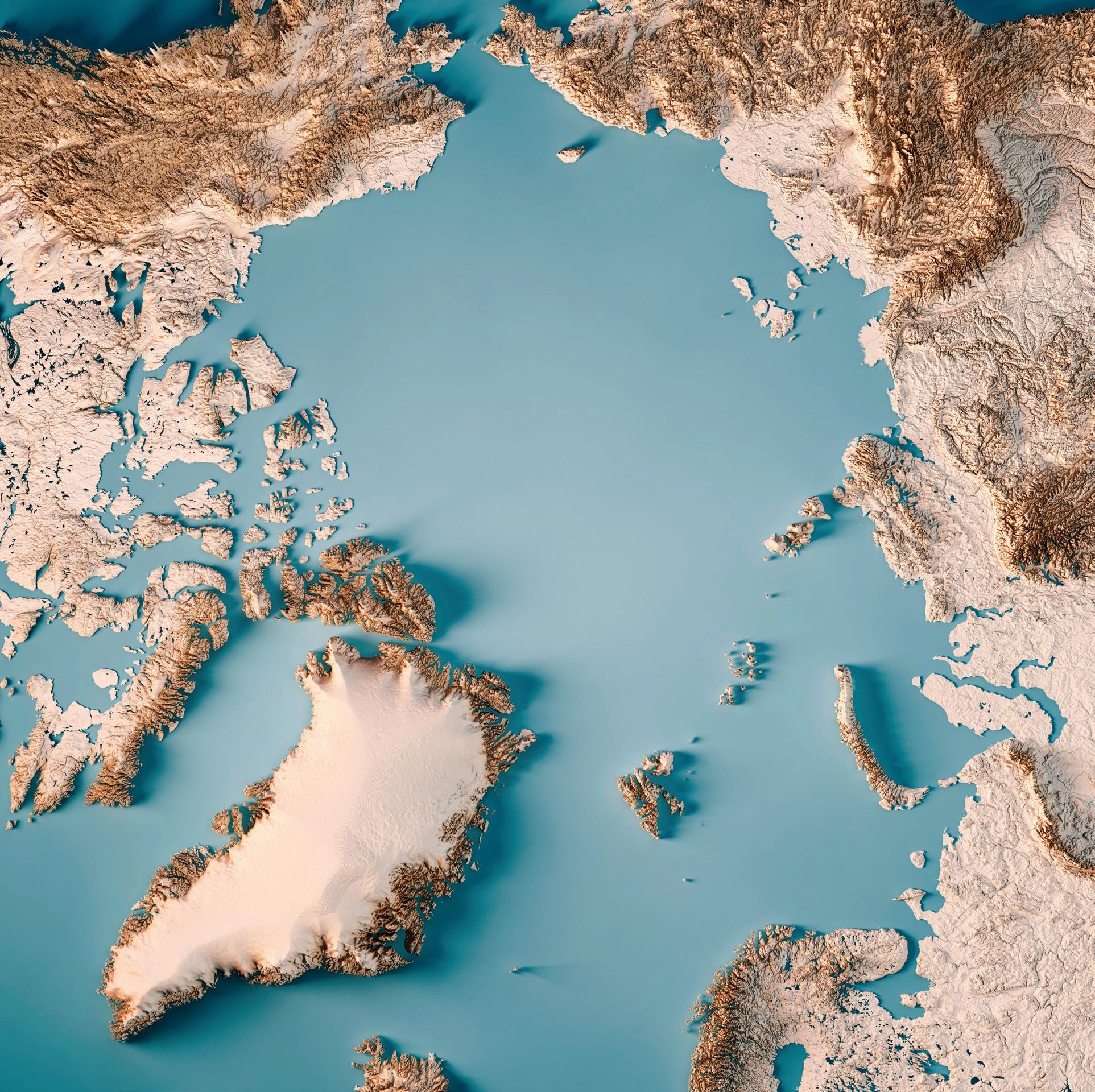
Each fall, polar bears gather at the shores of Hudson Bay in anticipation of the annual freeze, where the restored sea ice once again offers access to seals—their main food source. This year, as polar bears migrated to this area, our teams and partners did too . Polar bear scientists, communicators, and other stakeholders gathered for strategic meetings and to share this polar bear experience with the rest of the world, bringing awareness to conservation and hearing from the local communities who coexist with the world’s largest bears.
Photo By: (Right) FrankRamspott/E+/Getty ImagesAs the largest tropical rainforest in the world, Amazonia is often called the “lungs of the planet.” It generates oxygen, affects weather patterns worldwide, and plays a vital role in mitigating climate change. It’s also one of the most biodiverse places on Earth, with countless species found nowhere else. Nevertheless, many regional and global challenges threaten Amazonia’s wildlife, local people, and habitats.
We deploy cutting-edge technology, apply expertise in genomics and wildlife monitoring, and enhance local efforts as part of our commitment to protecting the biological and cultural richness of the Peruvian Amazon.
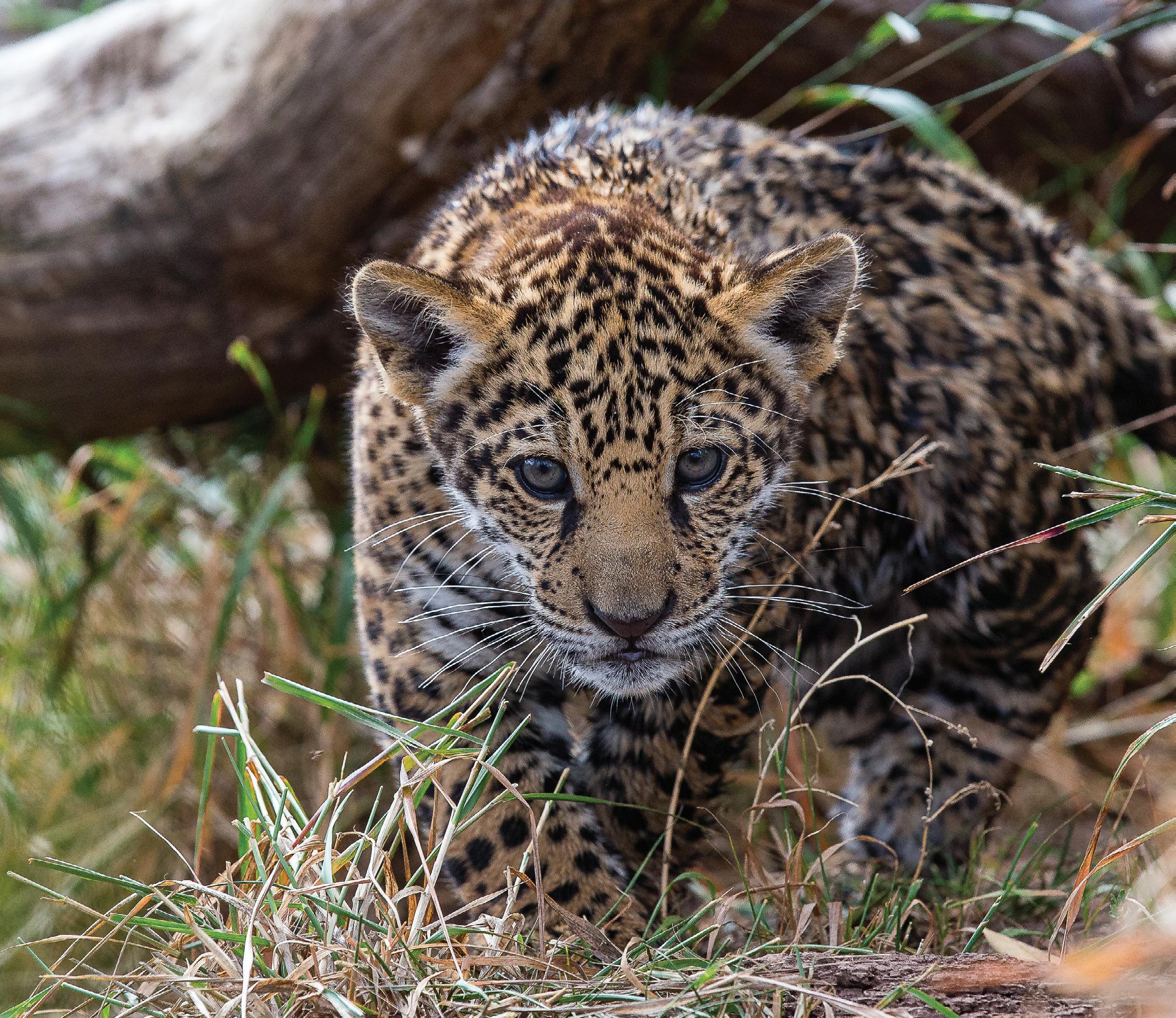
Jaguars once roamed from the Southwest United States all the way to South America. Today, the Amazon rainforest is the largest remaining home for these big cats. As this once vast habitat shrinks, people and America’s largest cats increasingly share spaces, creating a need for effective coexistence strategies.

If a picture is worth a thousand words, what happens when you collect 300,000 images? In our case, motion-activated trail cameras set along the diverse slopes of Peru’s Manu Biosphere Reserve revealed more than 100 species of birds and mammals. These images are being used to analyze wildlife behavior and help the continued development of artificial intelligence (AI) image processing.

The Amazonia team is interviewing thousands of rural villagers across the Peruvian Amazon to better understand their interactions with jaguars. This yearlong study is the largest of its kind, and will provide crucial information for sustainable coexistence.
Motion-activated trail cameras will newly reveal the patterns of these elusive predators, allowing researchers to plan for improved human-jaguar coexistence.

In an effort to democratize and decentralize laboratories—making science and conservation more accessible—we partnered to launch the solar-powered Wildlife Conservation Laboratory at Los Amigos Biological Station in the heart of the Peruvian Amazon. Despite being in the heart of a dense, wet jungle, the lab is equipped with cutting-edge technology, including DNA sequencing tools, a pipetting robot, and other tools that enable real-time, on-site analysis.
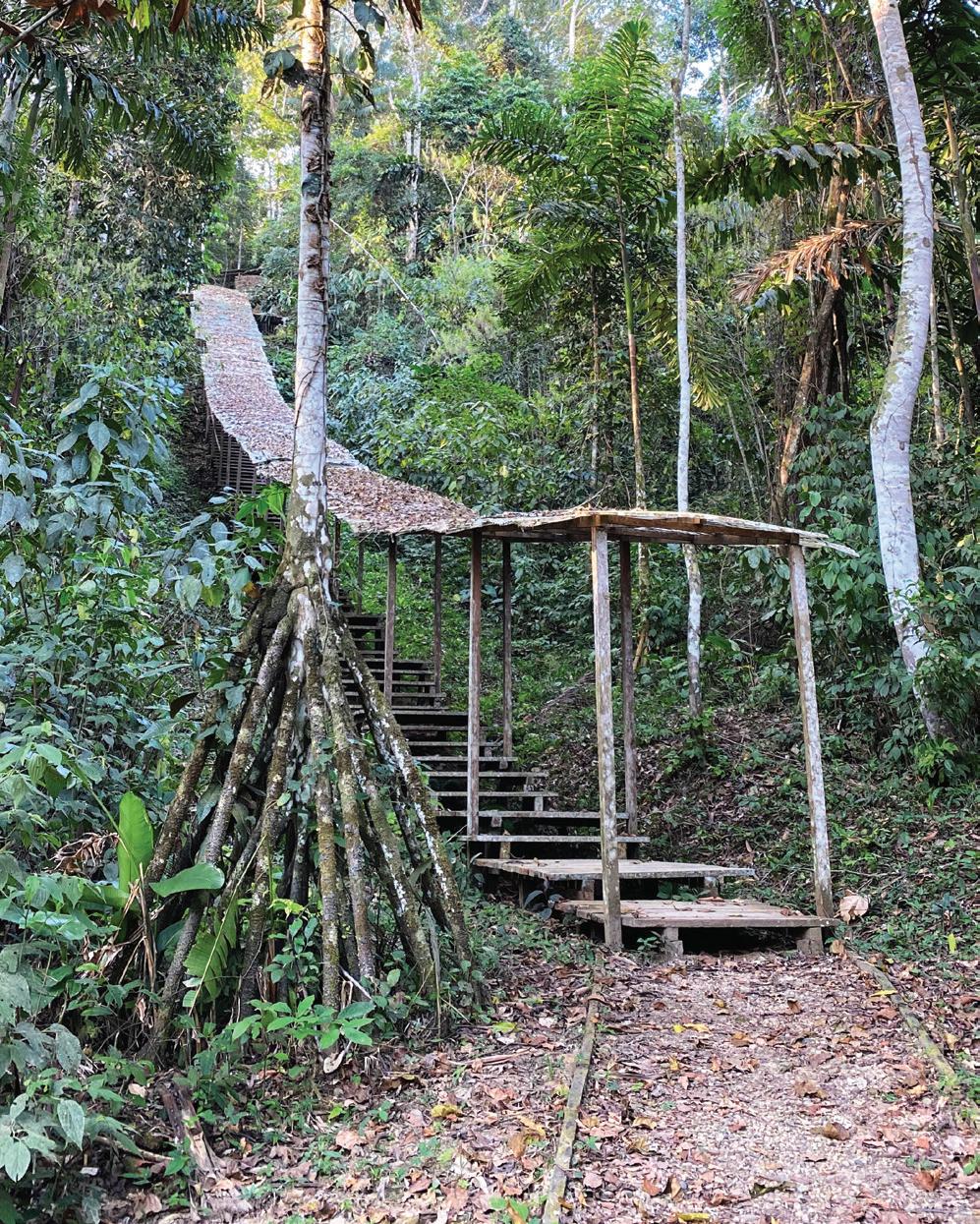
In 2022, we celebrated the lab’s first year and its exceptional accomplishments . Together with local scientists and veterinarians, we completed work to determine population sizes, conducted health checks and collected samples of about 1,000 animals from 250 species, performed DNA barcoding to identify these animals, and screened bats for coronavirus. The lab serves as a center for education, innovation, and community engagement. It’s the first in what could be the new global model for studying biodiversity, emerging diseases, and wildlife health in situ .
Our scientists and team in Peru were awarded a grant from the Peruvian Scientific Research Foundation to create a sustainable DNA barcoding pipeline for the University of San Marcos’ museum mammal and bird specimens. DNA barcoding uses small sections of DNA to identify an organism, going beyond physical attributes and providing information on factors such as age and evolutionary history .
In what was the most successful year yet of our partnership with Field Projects International, we contributed to the DNA sampling of more than 715 animals and collected 10,000 samples for biodiversity metrics, providing baseline data our partners need to pursue local conservation priorities.

No one is better poised to lead conservation efforts in Amazonia than the people who call it home. We partner with community-led Peruvian wildlife shelters in the Amazon by sharing expertise on everything from infrastructure and technical support to rehabilitation and reintroduction programs. Conservation scientists, veterinarians, and pathologists work with Peruvian veterinarians and conservation specialists to develop feasible medical management plans for patients in wildlife shelters, helping support our in-country partners on veterinary medical needs.
We are extremely grateful for Cathy Stiefel and Keith Behner and their generous sponsorship of the StiefelBehner Research Scientist position, a role that’s integral to on-the-ground efforts in Amazonia.
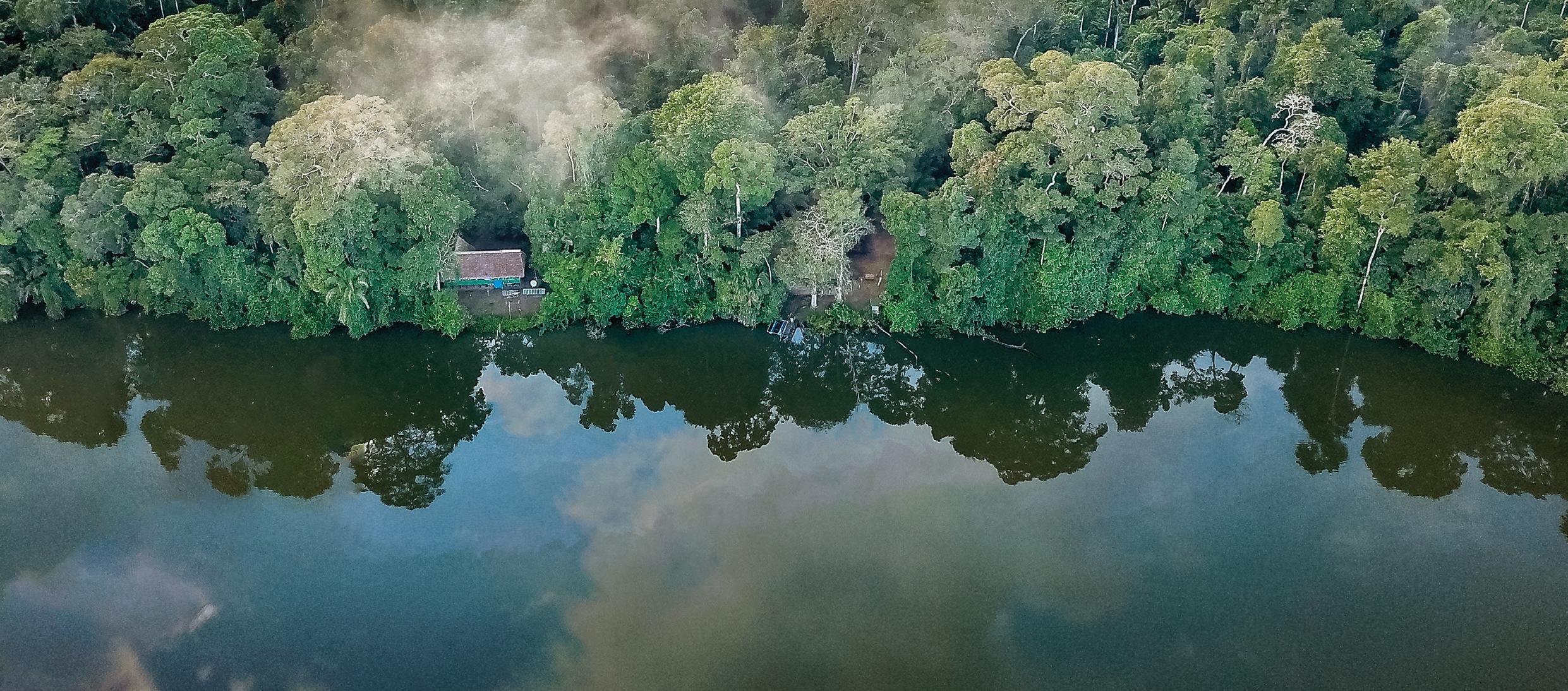
Safeguarding rainforest biodiversity for tomorrow means bringing young people into the conservation “classroom” today. At the Stiefel-Behner Cocha Cashu Biological Field Station, an internationally renowned tropical field station on the edge of the Amazon River, we invite Peruvian children, teachers, and parents into this freshwater rainforest ecosystem for a two-day deep dive into its flora and fauna. Students learn the importance of the rainforest and how to protect it, as well as specialty research methods used to study giant otters and fish in the local oxbow lakes .
Andean bears are the only bears native to South America. Threatened with extinction, these elusive bears live in hardto-access areas of the Andes—so conservation scientists don’t yet know enough about them to devise effective long-term conservation strategies. To better understand Andean bear biology and behavior, our teams are using trail cameras to gather data on where they live, how they use their home range, and their interactions with other species .
Photographs of the bears in our care have helped train facial-recognition software designed to identify individual bears on trail camera footage, increasing understanding of how they use their native habit.
Teams were overjoyed when experienced mom Alba gave birth to two cubs. This is the second time twin Andean bear cubs have been born at the Zoo, and scientists work closely with wildlife care teams to observe and better understand the species’ behavior, including denning and how they raise their young .
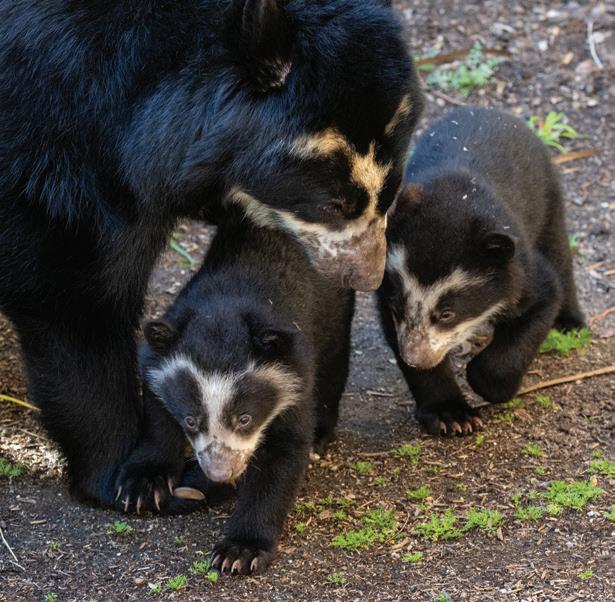
The birth of an adorable Linnaeus’s two- toed sloth at the Zoo’s Denny Sanford Wildlife Explorers Basecamp in June is the perfect representation of how we integrate wildlife well-being, science, and education. As a Rady Ambassador, the cub and his mom Xena quickly inspire awe and conservation awareness for this naturally slow-moving species.
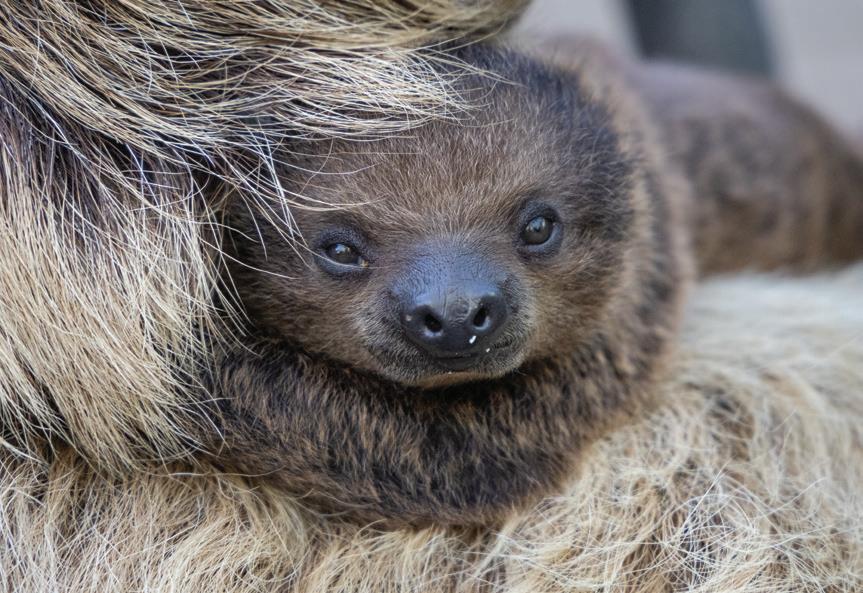
The Pacific Islands are home to an abundance of wildlife found nowhere else on Earth. Their incredible biodiversity—including some of the rarest birds and reptiles—and unique habitats are found from coastal reefs to mountain ridges. But despite their remote locations, the islands are highly vulnerable to invasive species and diseases, habitat fragmentation, and the effects of climate change.
With initiatives on the islands of Hawai‘i, Fiji, Rota, Palau, San Clemente, and Galápagos, we collaborate with partners and local communities to recover threatened species, safeguard wildlife and ecosystems, and establish sustainable solutions to preserve biodiversity.



This year, nearly 4,500 Hawaiian students benefited from our onisland education programs.
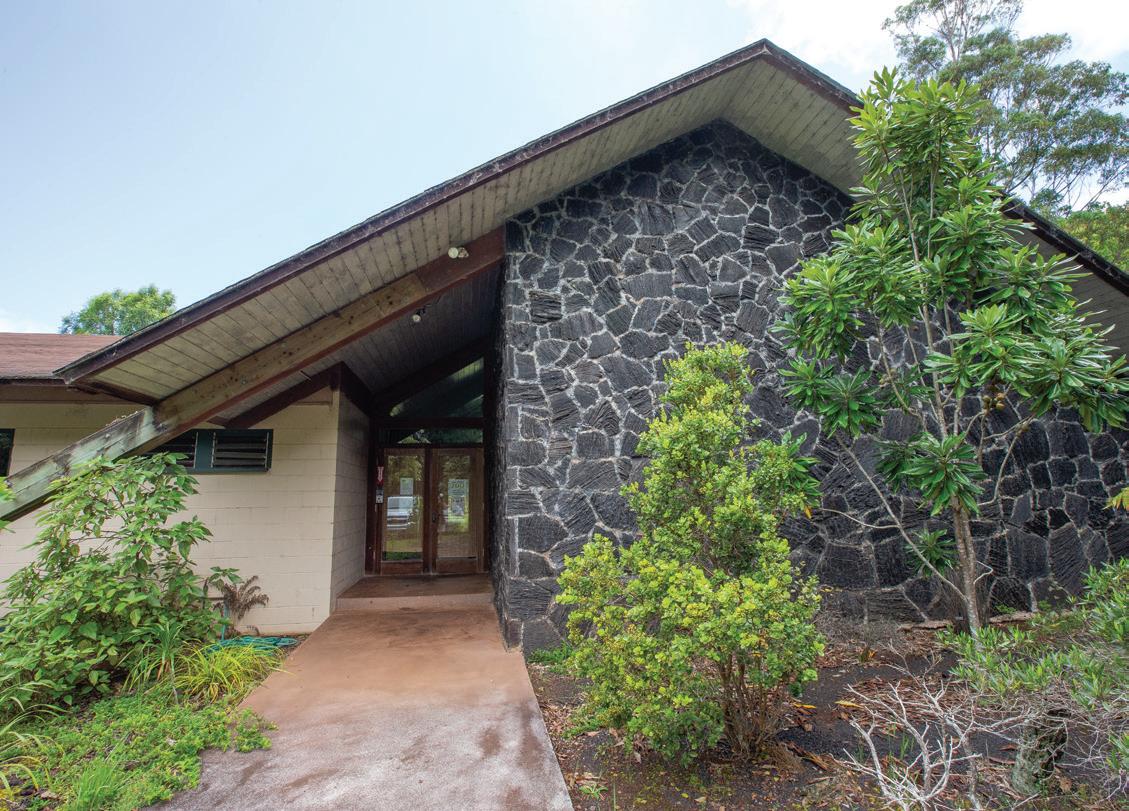
Hawai‘i’s forests are full of color and song from birds found nowhere else on Earth. But rising global temperatures bring non-native mosquitos into higher elevations than ever before, where they infect vulnerable wildlife with new threats like avian malaria. Many bird populations are now critically endangered. At our Maui and Keauhou Bird Conservation Centers, teams apply expertise in avian ecology, disease, and behavior to restore bird populations, while engaging local people in efforts to protect native wildlife .
Twenty-four middle school educators joined us on the Big Island for our Hawai ‘ i Teacher Workshops in Conservation Science, during which they learned about Hawai‘i’s unique wildlife through hands-on lessons and activities. For the first time ever, we also held these workshops on Maui, engaging middle and high school educators in safeguarding native species .
The ‘akikiki is a tiny Hawaiian honeycreeper, smaller than the palm of your hand. Unfortunately, fewer than 40 birds are estimated to remain in their habitat, a decline likely caused by the spread of avian malaria. This year, our teams and partners searched the dense tropical mountain forests of Kaua‘i to rescue the birds as part of our ongoing collaborative effort to save the species . Rescued birds are brought under our care, joining the critically important conservation breeding flock at the Maui Bird Conservation Center.
San Clemente loggerhead shrikes are getting special care before being released onto San Clemente Island, where the species once neared extinction after years of ranching damaged their habitat. Our conservation breeding program successfully implemented new and modified pre-release training strategies to prepare juvenile shrikes for life in their native habitat, improving their odds for survival during the critical first weeks after release when they are most vulnerable . Our partners— including the U.S. Navy, which owns and trains on the island—are helping monitor the birds and restore their habitat.
To help save the critically endangered aga (Mariana crow), 14 of the birds were hand-reared in our care, and an additional 11 were reintroduced into their native habitats in 2022. Once abundant on Guam, the corvids now only survive on the 33-square-mile island of Rota. The new chicks will remain with us for a year, learning to forage before being reintroduced in 2023 .
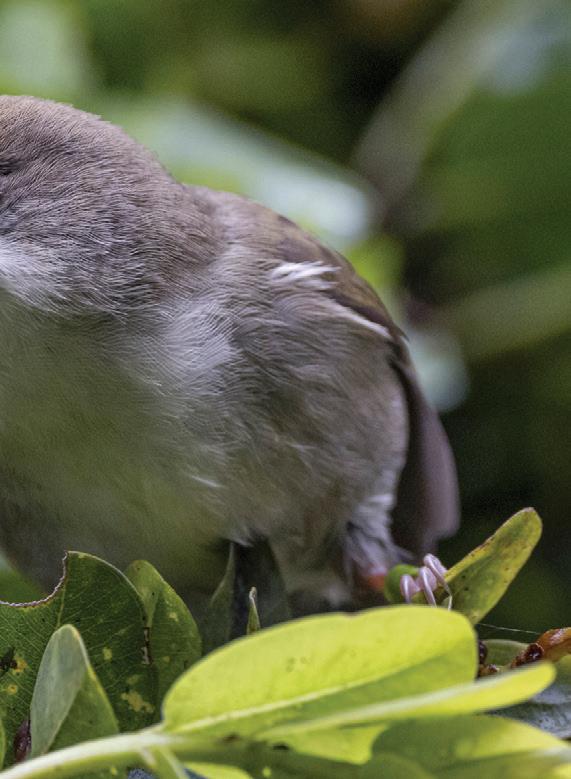
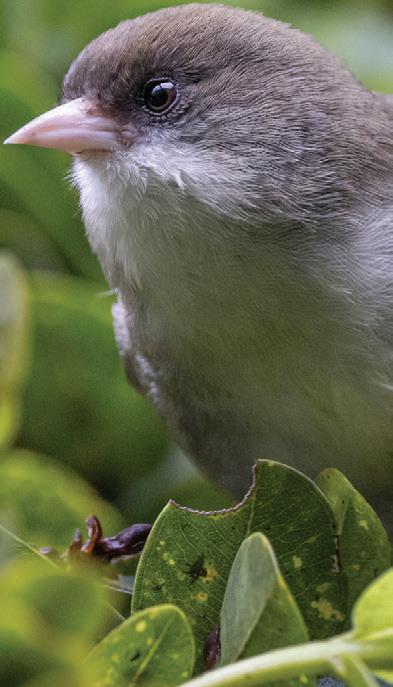

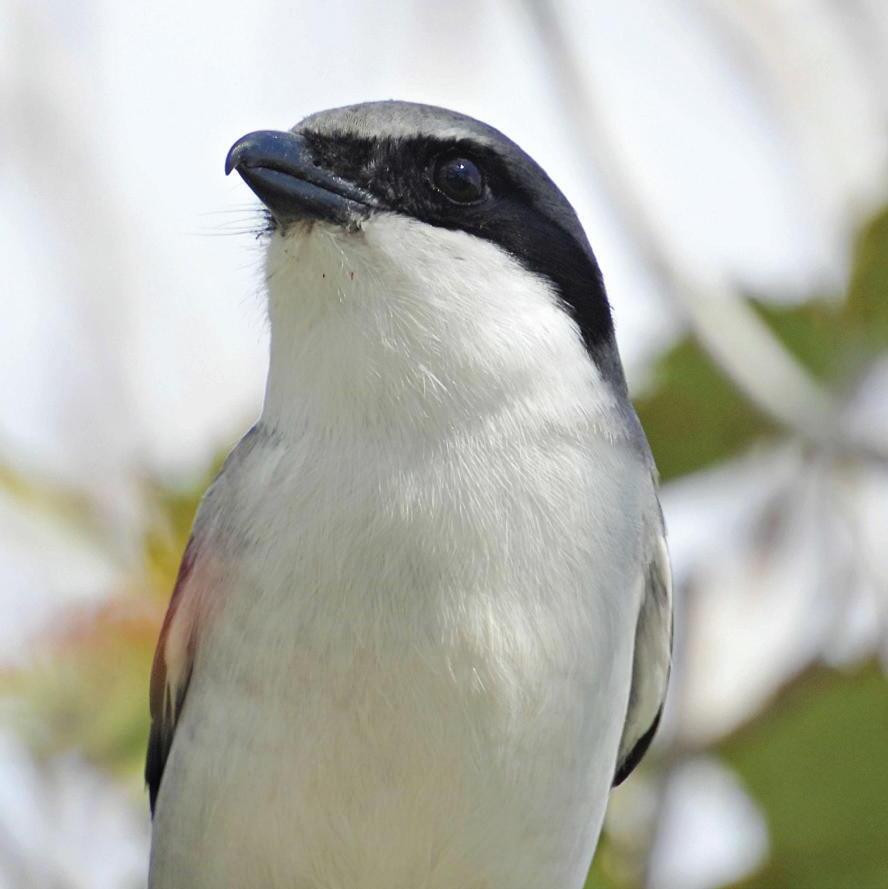

On the steep edge of an active volcano on the Galápagos’s Isabela Island, teams continue to fit pink iguanas with GPS trackers. Fewer than 300 of these unusual reptiles remain on Earth, and the trackers allowed researchers to identify their nesting and migration patterns for the first time . This understanding is essential in developing conservation plans to save the critically endangered species.
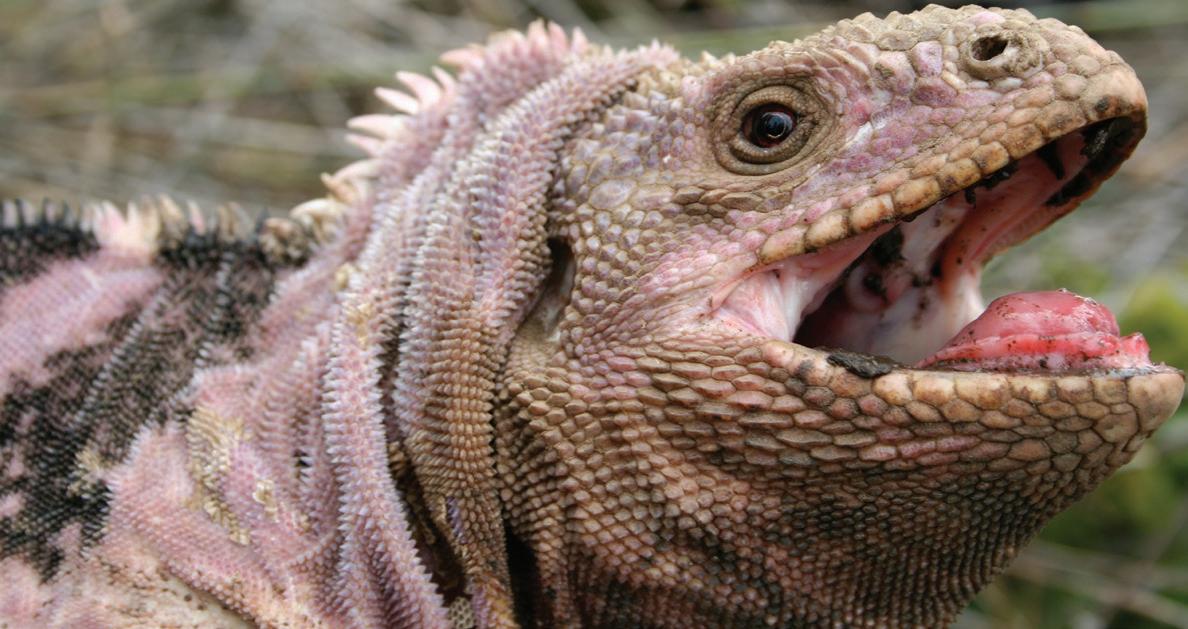
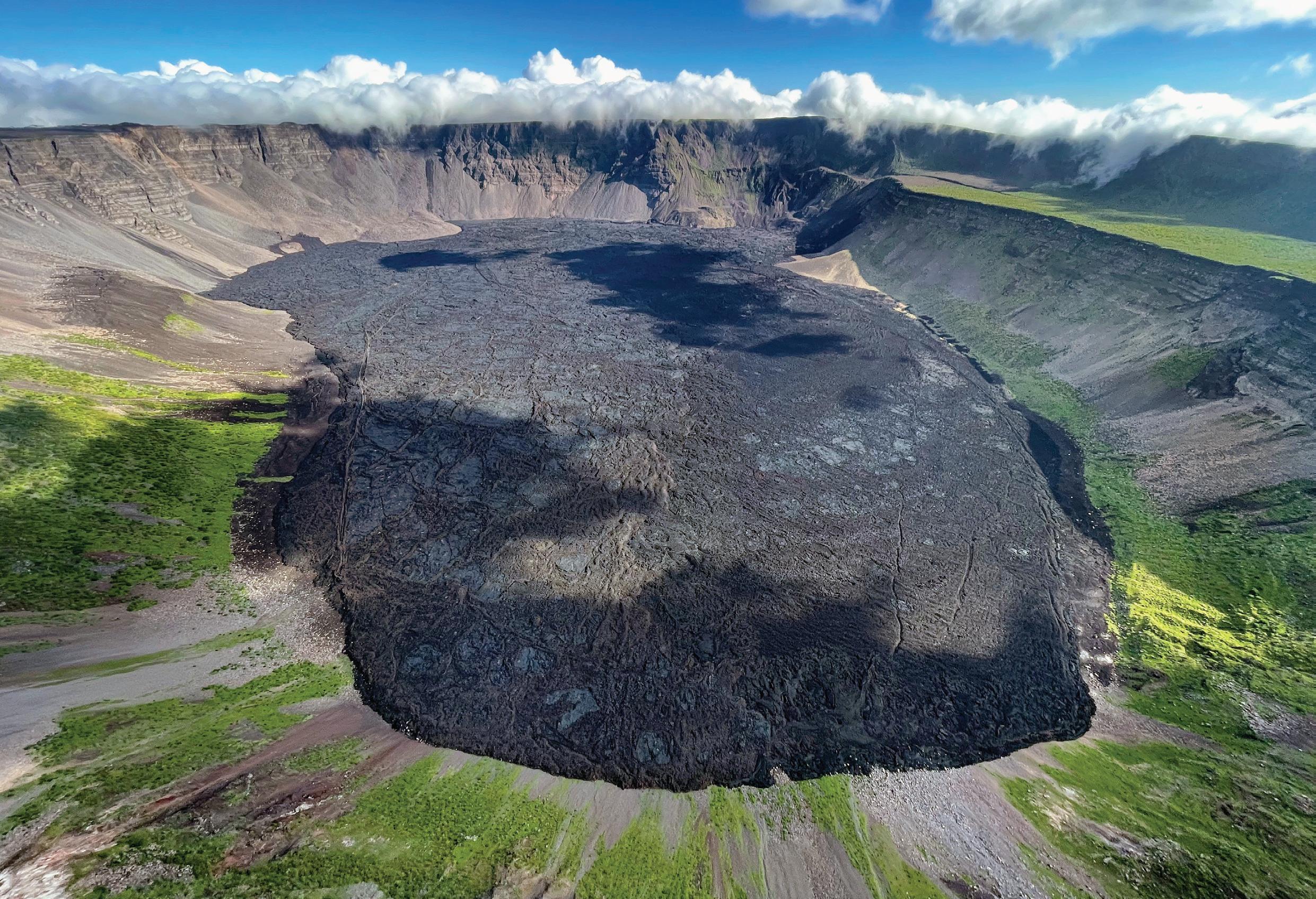
Found primarily along the northern and eastern coasts of the continent, Australian forests are home to some of Earth’s most unique and iconic wildlife. Eucalyptus forests account for the majority of these habitats; and while they provide food, shelter, and resources for wildlife and local people, they’re also highly vulnerable to the bushfires that are growing in frequency and intensity due to climate change and habitat fragmentation.
We’ve been caring for koalas at the Zoo for nearly 100 years, and the Safari Park is currently home to the only platypuses outside of Australia. We work closely with Australian partners to put our expertise into action, studying the effects of wildfires on environments and wildlife, caring for displaced wildlife, and developing strategies to increase habitat resilience to fires, while maintaining healthy habitats for native species.
 Australian Forest
Australian Forest Conservation Hub
Australian Forest
Australian Forest Conservation Hub
Photos from 80 trail cameras set up to monitor the Australian wildlife relief stations were identified by community scientists (page 73), providing vital information about the status, health and needs of wildlife, including koalas, gliders, kangaroos, and wombats.
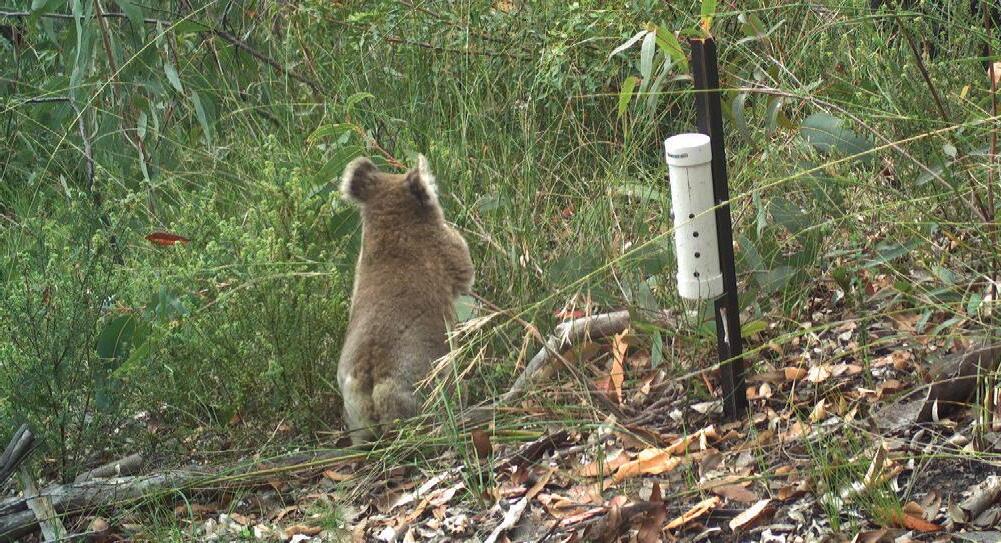
Over 50 tons of eucalyptus were harvested and hand-delivered to koalas in our care this year.
When devastating wildfires raged across Australia, leaving countless animals struggling to survive, we collaborated with partners including Science for Wildlife, government agencies, rescue groups, and volunteers to deploy lifesaving food and fresh water in trees and on the ground at the edge of burn zones, where resources had been obliterated.

Teams used scent-detection tracking dogs to locate stranded koalas and rescue them from approaching fires . The koalas were brought into our partner facilities, including the Taronga Zoo, where they received around-the-clock care. This year, the dogs helped sniff out where koalas are living—with exciting results. They’ve been finding koalas in habitat heavily impacted by the fires, where it had been uncertain if any koalas could have survived.
Our incredible donors made it all possible. This support continues to serve and protect the most genetically diverse colony of koalas in the world, in the Greater Blue Mountains World Heritage Area .
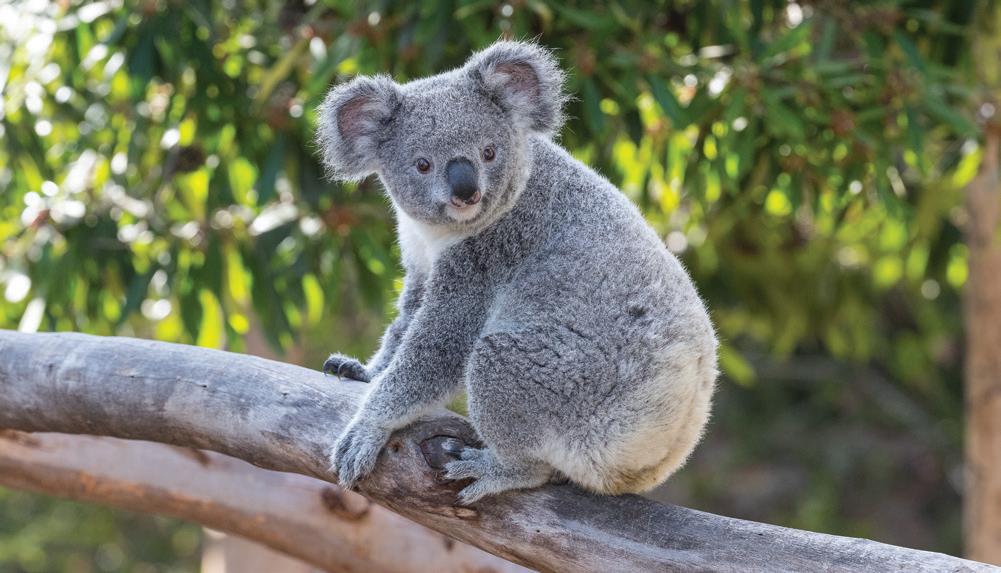
The largest colony of koalas outside Australia is in our care. Our teams were eager to support the Australian government’s designation of the koala as an endangered species . Crucial studies of koala ecology, habitat needs, and declining population status conducted by our Australian partners contributed to this status change, in hopes of protecting koalas and their native lands.
Platypuses are egg-laying mammals with a paddle-shaped tail, sleek fur, webbed feet, and a wide bill. They may be unusual, but they’re perfectly designed for their Australian freshwater habitats, and these spaces are rapidly vanishing as human populations encroach. We are the only caretakers of platypuses outside of Australia, and we support an innovative study led by our partners that tests water for traces of environmental DNA (eDNA)—such as skin cells or hair that animals leave behind in their habitat—to map platypus habitat and design conservation strategies to protect them .

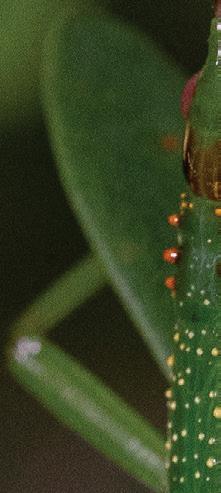

Lord Howe Island stick insects grow to the size of a human hand and are known as the “tree lobster.” Once thought extinct after invasive rats devastated populations on their native Lord Howe Island, the resilient bugs were found decades later living on a small island of volcanic rock about 12 miles away, launching international species recovery efforts.
The Zoo is home to a conservation breeding program for the critically endangered Lord Howe Island stick insect, and is one of only two places outside of Australia breeding these fascinating insects. A new clutch of eggs recently arrived from our partners at the Melbourne Zoo, and dozens have already hatched in our care. The new arrivals are part of our collaborative conservation efforts to reintroduce the insects on Lord Howe Island off the Australian coast .
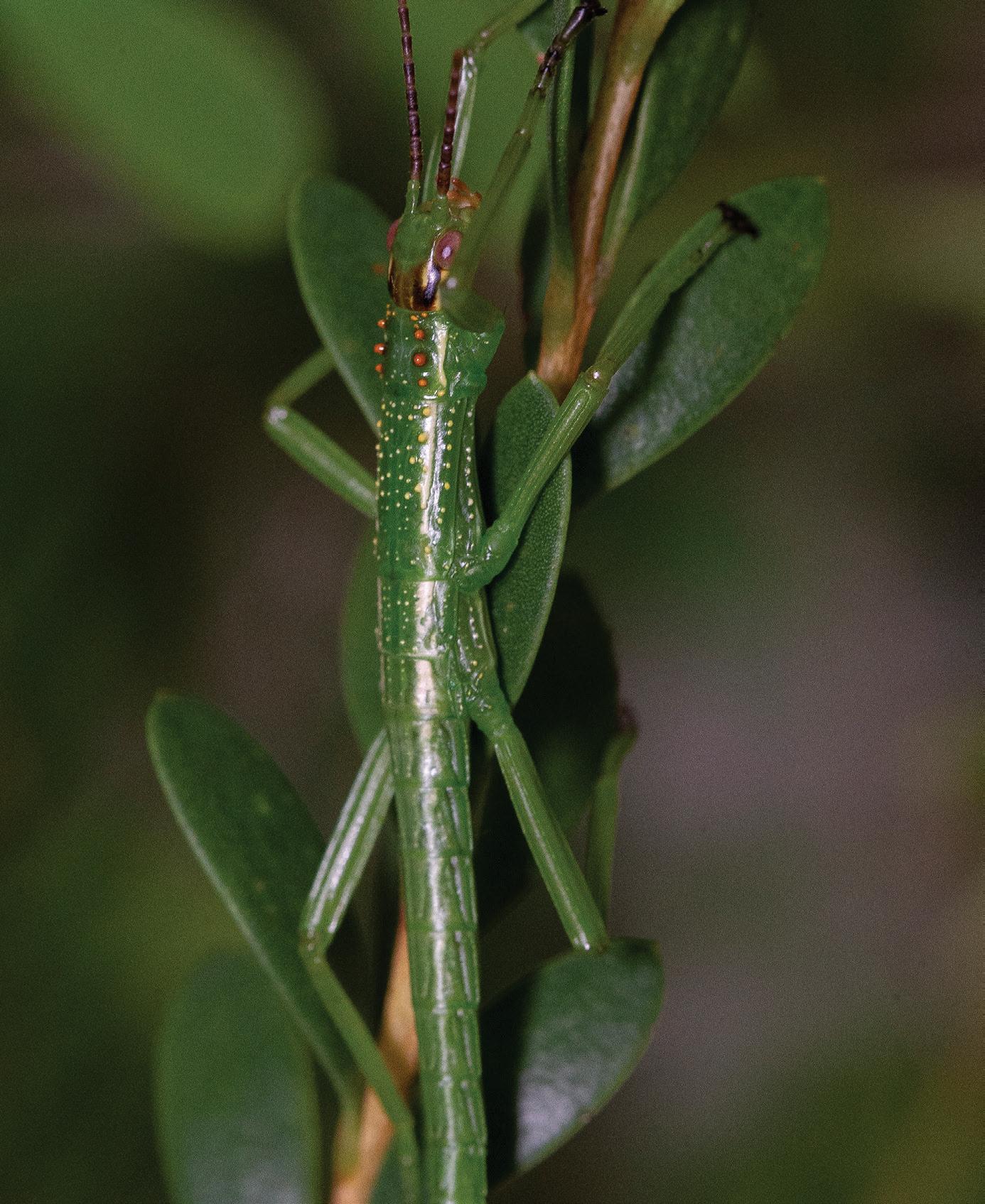
Southeast Asia is home to nearly 15% of the world’s tropical forests, including multiple biodiversity hotspots and an abundance of wildlife found nowhere else on Earth. However, human behaviors like illegal logging and wildlife trafficking are taking a toll on species across Asia.
Together with local communities and partners, we’re working to protect the region’s unique wildlife. To devise sustainable and inclusive conservation strategies, we collaborate with our allies to better understand the needs and relationships of local people and wildlife, foster coexistence, reduce the trafficking and use of wildlife products, and preserve species and ecosystems for future generations.

Our Wildlife Health team banked umbilical cord stem cells from Kaja that may be used to find treatments for degenerative conditions in orangutans.


In 2021, we kicked off a collaborative breeding program to help save one of Southeast Asia’s most endangered birds, the milky stork. All of the birds in North America were brought into our care at the Safari Park, and chicks quickly began hatching. In their native habitat of Southeast Asia’s mangroves, only a few hundred of the birds are left, so each new chick is a vital addition to the global population. hatching of four more chicks in 2022 was a milestone moment for this rescue effort, helping maintain a healthy and genetically diverse population needed for the species’ recovery .
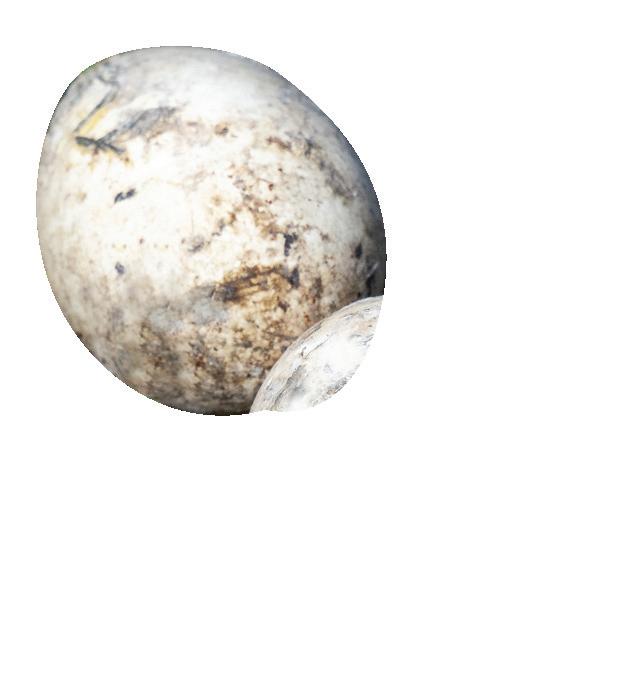

Every Sumatran orangutan birth is important for this critically endangered species. When 35-year-old Indah required emergency surgery at the Zoo after giving birth to her third baby, Kaja, teams from across the organization sprang into action. Their incredible dedication and innovative thinking not only saved and provided rehabilitative care for Indah, but ensured her infant son had the around-the-clock care he needed . Once the two could reunite, they also did everything in their power to foster a healthy mother-child bond so Indah could raise Kaja herself. After months of patient persistence, reintroductions and socialization to one another, the bond eventually took—and they’ve been inseparable ever since .
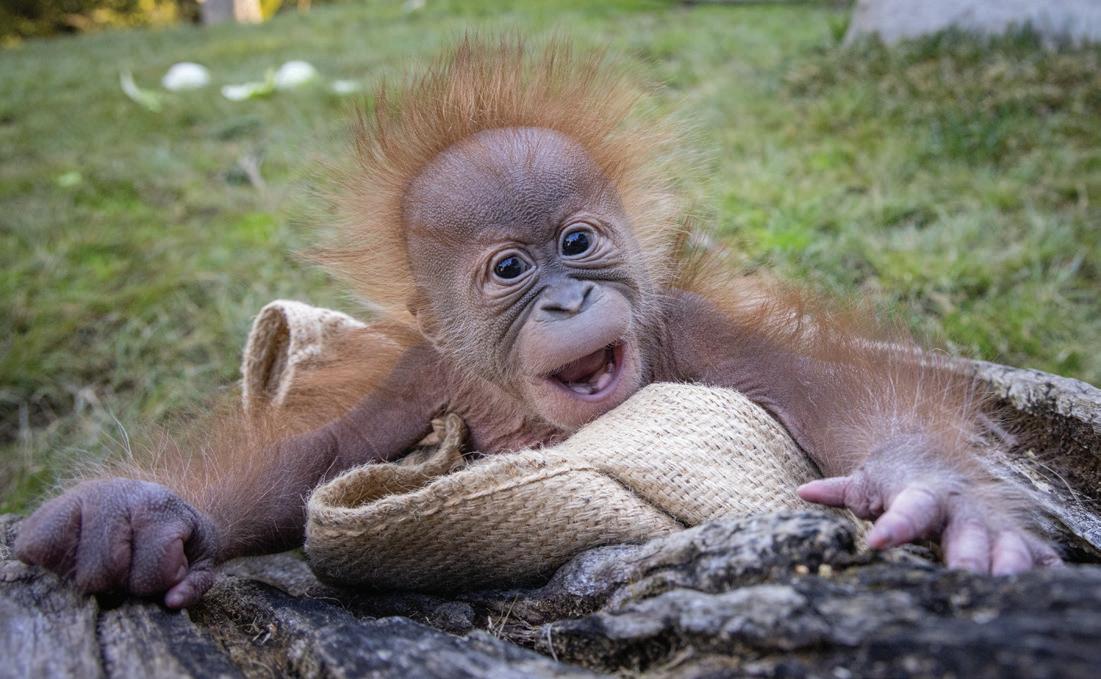
Community conservation engagement hit home once again when visitors to the Safari Park’s Tull Family Tiger Trail came face-to-face with Sumatran tigers on Global Tiger Day—and learned what they can do right here at home to halt the disappearance of these critically endangered big cats a world away.

Our Asian Rainforest team works to understand the motivations for trade and consumption of wildlife products, and to promote sustainable alternatives. Together with partners, we are clarifying why endangered orchids are trafficked, how we can reduce demand for tiger and bear products, and which solutions effectively encourage wildlife-friendly behaviors.
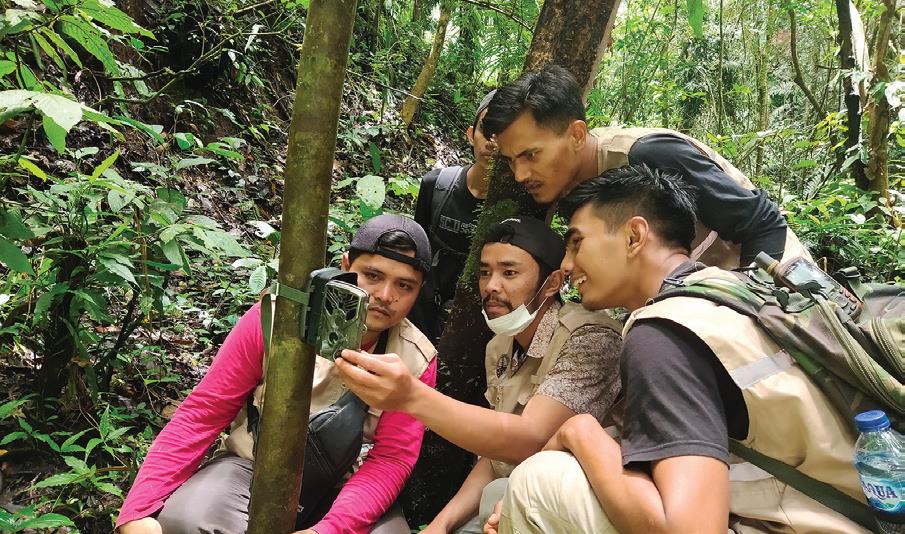
To curtail the emerging tiger bone glue industry, our teams have engaged two new master’s students at Vietnam’s Vinh University to explore tiger bone consumption. The students are trying to gain access to the more elusive communities of tiger farmers, so that we can better understand their motivations. The program, funded through our education endowment fund, provides mentorship to enhance ongoing efforts by local community members to advocate for conservation .
It’s estimated that fewer than 400 Sumatran tigers remain in native habitat.

People and tigers make their homes in overlapping regions. To save these big cats and protect local communities, coexistence is key—and that means monitoring tiger whereabouts. We donated GPS tracking collars to our in-country partners, West Sumatra’s Natural Resources Conservation Agency, to track tigers translocated due to conflict with local communities. Our field team spent several days in August testing collar performance in the dense Indonesian forest where tigers dwell .
Games and activities were used to spark interest in conservation and in the endangered local Javan leopard for elementary students in three Indonesian villages . Many also developed a new appreciation for how their own Meru Betiri National Park plays a critical ecological role for the leopard, as well as the prey it needs to survive.

Our team worked with local communities and stakeholders to understand motivations for bear bile consumption in Vietnam. In the spring of 2023, with the help of a Vietnamese marketing firm, we will launch a large campaign to cut the demand for bear bile by changing the way it is viewed in rural Vietnamese villages, where bear bile is often consumed to treat illnesses—a practice that is contributing to population decline of vulnerable bear species.

The largest amphibian on the planet at nearly 6 feet long and weighing over 60 pounds, critically endangered Chinese giant salamanders are a species of “living fossil.” Unfortunately, they’re at risk of extinction because of poaching and habitat loss. With plans to create a conservation breeding and reintroduction program, we’re working with partners to save and protect the species .
Visitors can now learn more when they see these unforgettable amphibians up close at Wildlife Explorers Basecamp at the Zoo.

Education is crucial to our vision of a world where all life thrives. Through hands-on learning adventures for all ages, we’re engaging and inspiring the decision-makers of tomorrow—the next generation of leaders, teachers, parents, and citizens—to join us in protecting biodiversity and the planet we share.
Our Education programs begin at the Zoo, the Safari Park, and the Conservation Education Lab at the Beckman Center, offering everything from all-grade-level field trips and summer camps to wildlife exploration options for teens, and teacher workshops. The education efforts continue in our Conservation Hubs across the globe through community engagement programs, and online through extensive resources and interactive web-based training courses.
Countless lives are touched through these programs, all of which are made possible through generous donations.
Every grade from kindergarten up can join us for engaging, handson programs in the classroom, on grounds, and in the field. In 2022, more than 12,800 students explored conservation science through topics including empathy for wildlife, watersheds, habitats, and climate change.

1,919 campers joined us to connect with wildlife, learn about conservation, have fun, and create memories that will last a lifetime .
Thanks to San Diego Foundation Level Up grants, more than 1,000 students from San Diego Unified School District, who otherwise may not have had the opportunity, participated in camps and special programs.
Through three mentorship programs, high school students explore the world of wildlife conservation, developing teamwork, leadership, and problem-solving skills .
83%
Nearly 6,000 students and teachers joined us for Exploring Conservation Science field trips at our Conservation Education Lab, with 83% attending from Title 1 eligible schools .
In collaboration with Miami University of Ohio, 102 students participated in our Advanced Inquiry Program, and 23 students graduated with a master’s degree .
We thank the Vassiliadis Family Foundation for their continued support through their endowment of the “Habitat Heroes” program, which provides engaging and memorable experiences to second graders of San Diego County.
“ You inspired our students to ask really fabulous questions and think like scientists. Everything was kid-friendly and felt appropriately challenging. This was such a fantastic opportunity, and we are so thankful to you for putting it together! ”
We hosted 174 educators for workshops in conservation science in San Diego and Hawai‘i—impacting more than 28,000 students in 21 states and 3 countries . We are grateful to the Margaret R. Boys Charitable Foundation for creating the Margaret R. Boys Teacher Workshop Endowment, which will continue to provide these engaging hands-on training programs for years to come.
In Kenya, Twiga Walinzi (“Giraffe Guards”) engaged with 2,613 students at their local schools and community events through field trips to national parks and wildlife conservancies, special lessons, World Giraffe Day celebrations, and more.

Conservation
Teachers brought hands-on conservation programs to their classrooms, engaging over 14,000 students in 29 states with our complimentary science kits.
In Indonesia and Vietnam, we engage with students who will make a crucial impact as local agents of change —from grade school to grad school— through school visits, mentorship, internship and thesis programs, and more.
More than 30 students joined our partners at the Wildlife Conservation Laboratory to gain invaluable experience with wildlife monitoring and conservation technology.
Community members in Palau joined us for propagation and seed collection workshops , where we share how to preserve and protect local plant life.
At an environmental education center adjacent to Mbam & Djerem National Park, hundreds of children have visited to learn about local wildlife and conservation.
San Diego Zoo Wildlife Explorers television is now seen in 364 hospitals, clinics, and Ronald McDonald Houses across 48 states and 13 countries . This heartwarming and educational wildlife programming brings happiness, hope, and healing to over 25 million children and their families.
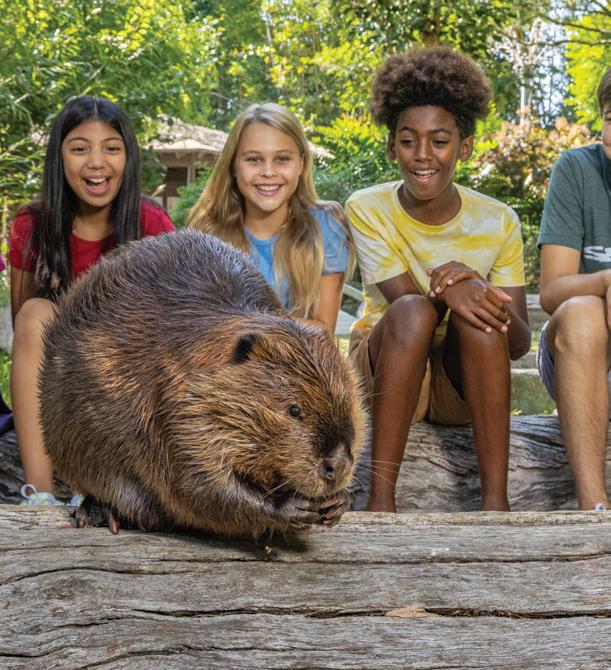
The more allies we can reach, the greater impact we can have for wildlife worldwide. We diversify the ways we connect with our audiences, bringing them into our mission through the power of storytelling and shining a light on the incredible world we all share.
Throughout the year, our teams carry out unique, festive programming at the Zoo and Safari Park to engage and inspire our guests, while boosting attendance. In 2022, Butterfly Jungle returned, along with Spring Safari , HalGLOWeen , and Autumn Festival . Kids Free October and a special Earth Day celebration with Percy the giant porcupine puppet were extra fun for our youngest allies, and we were honored to welcome the first stewards of the land and wildlife, the Kumeyaay people, as they hosted the second annual Indigenous Peoples’ Celebration . The first Lunar New Year Celebration ever held at the Zoo and Safari Park included an official delegation visit from diplomats. Wild Weekends and celebrations for elephants, rhinos, and tigers engaged guests in our conservation work, and after celebrating the Safari Park’s 50th anniversary all year long, we finished on a festive note with Jungle Bells and Wild Holidays .
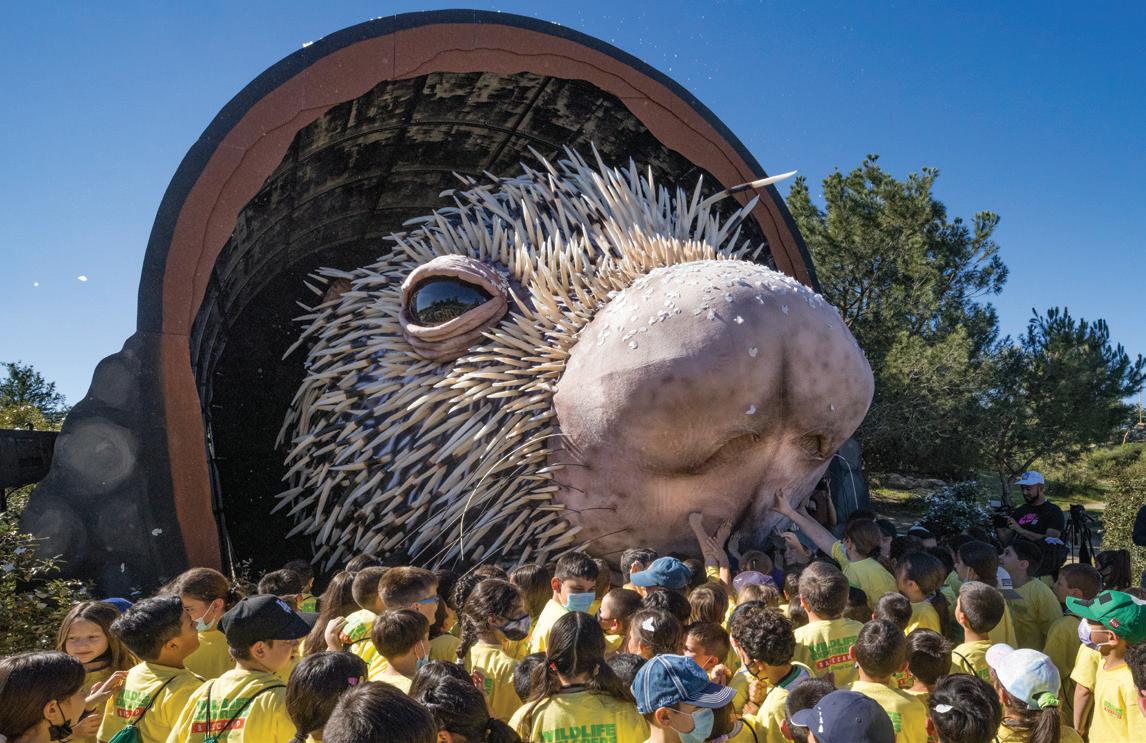

For the first time in 25 years, and only the second time in our history, we kicked off the year sharing our message of hope and inspiration with the world, through our participation in the 133rd Rose Parade. It was our first time participating as San Diego Zoo Wildlife Alliance, and with our float’s theme, “Creating Allies for Wildlife,” this was our moment to build deeper connections across the country and around the globe, welcoming allies into our family and through our two front doors, the Zoo and Safari Park. The float represented our past, present, and future in wildlife conservation, depicting a lion, a California condor, and a rhinoceros—and garnered global support and recognition for our mission.
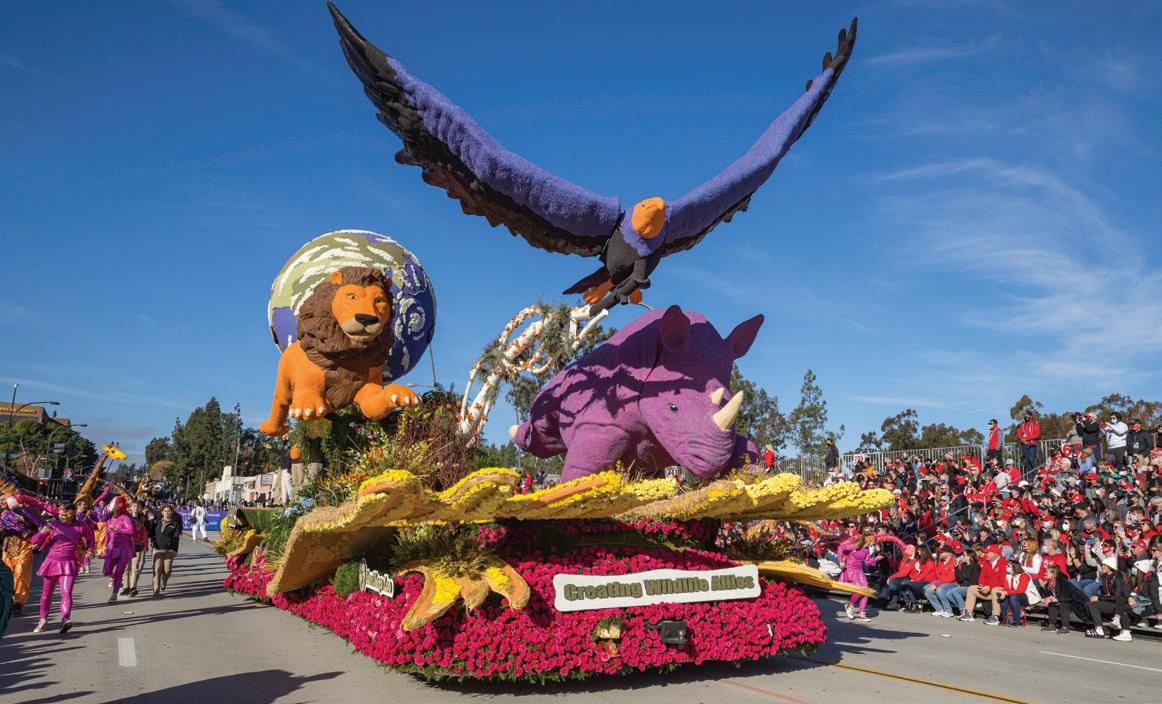
Our livestreaming wildlife cameras garnered 28.2 million views in 2022.
Millions of people around the world join us at the Zoo and Safari Park each year, without ever setting foot on our grounds. Live-streaming wildlife cameras and online content with complimentary educational programming keeps our allies engaged, offering a look into our wild world.


This project hit a milestone in 2022, when it took only 22 days to classify 14,500 images—a volume that otherwise would have taken about 6 months.
Allies everywhere tuned in to discover Amazing Wildlife —our weekly podcast offering insights on intriguing species, behind-the-scenes looks inside the Zoo, Safari Park, and ongoing conservation efforts worldwide as we race to save the world’s amazing wildlife.

We completed our first full year with 52 episodes featuring San Diego locals like the Pacific pocket mouse and mountain yellow-legged frog, and some of the world’s most iconic species, such as elephants and tigers. We were joined by special guests, including Dr. Jane Goodall, DBE, Founder of the Jane Goodall Institute and UN Messenger of Peace.
Wildlife allies worldwide help researchers classify trail camera photos on their computers and smartphones, making quick work of an immense amount of data. And as technology continues to evolve, conservation science can move even faster. Using machine learning, our Conservation Technology Lab has been working on methods for automatic detection of species in the photographs taken by our trail cameras around the globe.
“
Every single day each one of us lives on this planet, we make some impact. And we get to choose what sort of impact we make.
”

Our inaugural year took passionate wildlife allies on unforgettable journeys around the globe.
Classic Polar Bear Adventure
Natural Jewels of Costa Rica
We launched sustainable, 100% carbon-neutral expeditions with San Diego Zoo Wildlife Alliance Adventures, providing opportunities to visit some of the most awe-inspiring places on the planet while helping save species and support local communities—safaris in Botswana, the monarch butterfly migration in Mexico, jaguars in Brazil’s Pantanal, an Amazon River expedition, and more.
Yellowstone Wolf Quest
Photo Adventure
Monarch Butterfly
Migration Adventure
Patagonia Wilderness and Wildlife Explorer
Madagascar Wildlife Adventure
Botswana
Explorer Safari Jaguars & Wildlife of Brazil’s Pantanal
Classic Galápagos Experience
The Great Amazon River Expedition
San Diego Zoo Wildlife Alliance Press offers books for all ages, engaging allies worldwide with our core value “Inspire.” Our award-winning books share our passion for nature, fostering understanding, empathy, advocacy, and action for wildlife in the process.
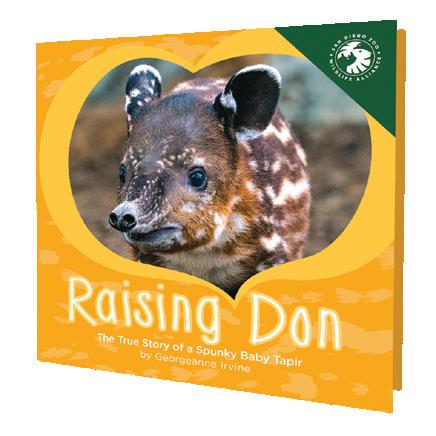


HOPE & INSPIRATION
These stories focus on specific animals that have overcome challenges in their lives. When children can relate to an individual—like Moka the tiger or Floyd the flamingo—they’re inspired to care about the species, and about all wildlife.
Our fourth and fifth books in this collection, which present conservation issues at a child’s level.
Our heartwarming Hope and Inspiration collection has won six Benjamin Franklin Awards, national honors recognizing excellence in independent book publishing.

These two historical books share how two San Diego Zoo Wildlife Alliance leaders created programs decades ago that helped make our work possible today.

Written by Carrie Hasler
Illustrated by Barbara Ball
RAISING DON:
The True Story of a Spunky Baby Tapir
By Georgeanne IrvineSLOTH’S TREEHOUSE INN

Written by Carrie Hasler
Illustrated by Christina Wald
SAVING WILDLIFE: The Extraordinary Life and Legacy of Dr. Kurt Benirschke

By
Rolf Benirschkewith Jim Lund
HEART OF THE ZOO: How San Diego Zoo Director Chuck Bieler Earned His Stripes
By Kathi DiamantIn the fall, we broke ground on the largest and most transformative project in the Safari Park’s 50-year history. Denny Sanford Elephant Valley will completely reimagine the heart of the Safari Park, bringing our community into the epicenter of our global conservation efforts for elephants. This one-of-a-kind home for our African elephant family will change the footprint of the Safari Park, and the future for endangered elephants worldwide.

Here, wildlife allies like you will make lifelong connections with these gentle giants and see the world we share through their eyes—while at the same time, helping us secure a future for their species. As our elephant family continues to grow, our hopes and dreams do too, and we couldn’t be more excited for you to join us on this journey.
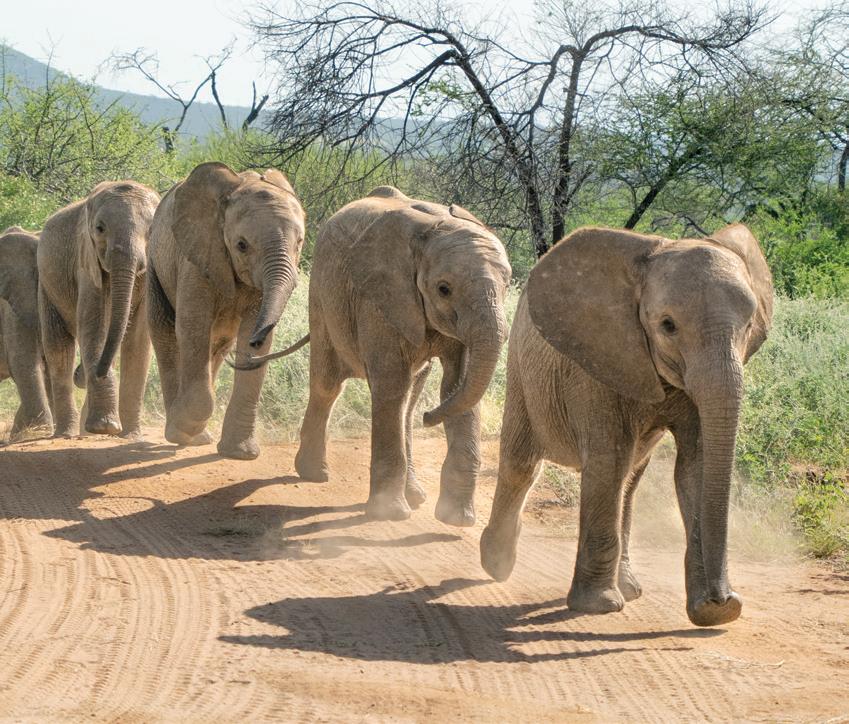
—LISA PETERSON Senior Vice President and Executive Director, Safari Park
“ Denny Sanford Elephant Valley isn’t just a home for the elephants in our care— it also brings our community into the epicenter of our global conservation efforts for elephants.”
We’re grateful to these donors for their leading generosity in making this dream a reality.
Denny Sanford
Joanne C. Warren and the Warren Family Foundation
Marian Frank
Tisha Hunte Wheat
Lisa and Wayne Stelmar
Thank you to the more than 3,200 donors who have given to the project so far, contributing more than $43 million toward our $60 million fundraising goal.
Our deepest gratitude to Denny Sanford, whose foundational naming gift is bringing this project to life. This generous gift is the largest in Safari Park history, and Denny’s remarkable commitment to wildlife is securing the future for endangered elephants, while inspiring countless wildlife allies to join us on this adventure.
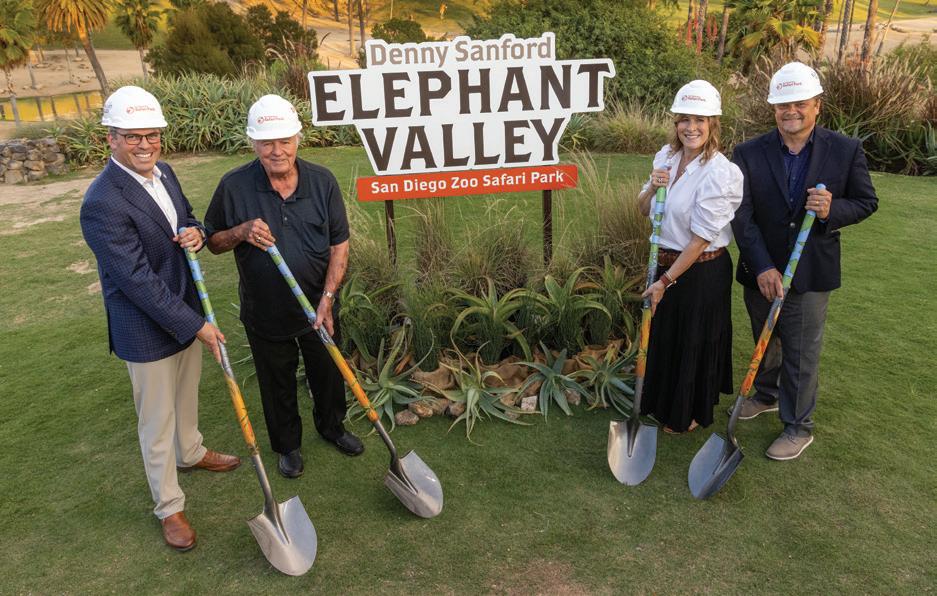

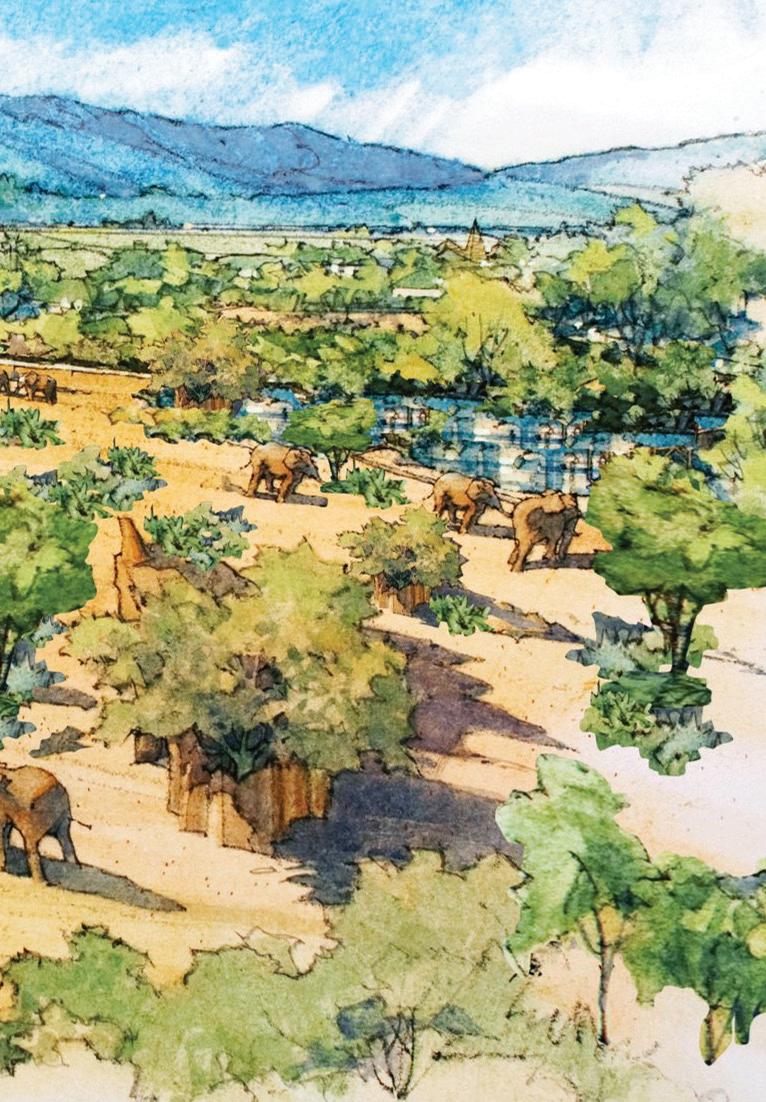
Members, friends, and allies like you make it possible to achieve our vision of a world where all life thrives. Your support saves, protects, and cares for wildlife in San Diego and across the globe, and we are forever grateful for your generosity.
Guests at the Zoo’s annual Food, Wine & Brew Celebration enjoyed a gourmet selection of Southern California’s best bites and sips, paired with live entertainment, dancing, and fun.
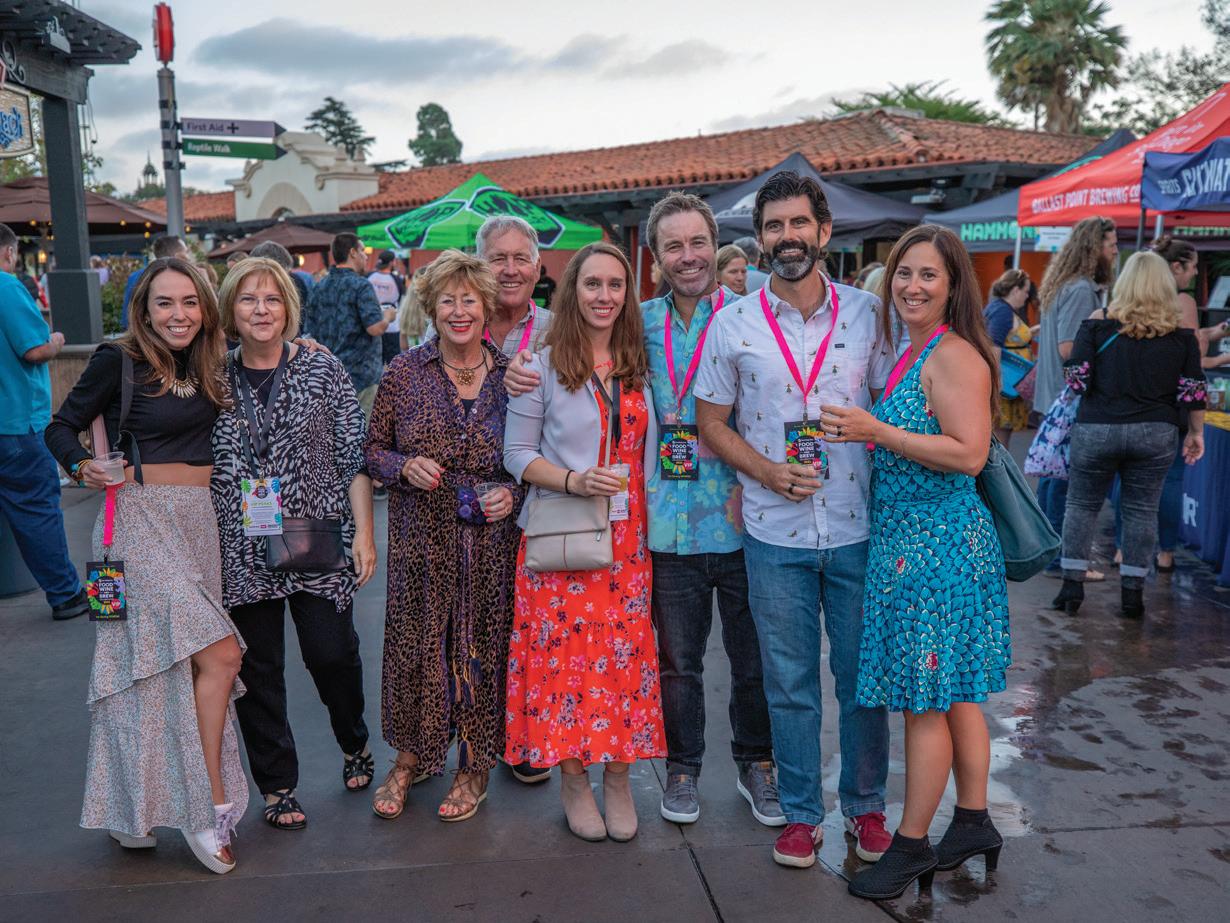
We welcomed longtime friends and new supporters to the 39th annual Rendezvous in the Zoo (R·I·T·Z) gala, an extraordinary night of fine dining, exciting auctions, and dancing. We’re so very grateful to our co-chairs, Michelle Forsythe and Kristi Pieper, and to our R·I·T·Z donors, whose generosity benefited the new Denny Sanford Elephant Valley and our global conservation efforts to save these gentle giants.

We extend a special thank you to our dedicated donor groups, whose continued generosity fuels our vital conservation work here in San Diego and around the world. As some of our closest friends and strongest allies, they enjoy a range of benefits, including exclusive events, presentations from conservationists, and updates from the executive team. For information on how to join us, see page 92.
These friends are devoted to our vision of protecting wildlife, supporting conservation work worldwide.
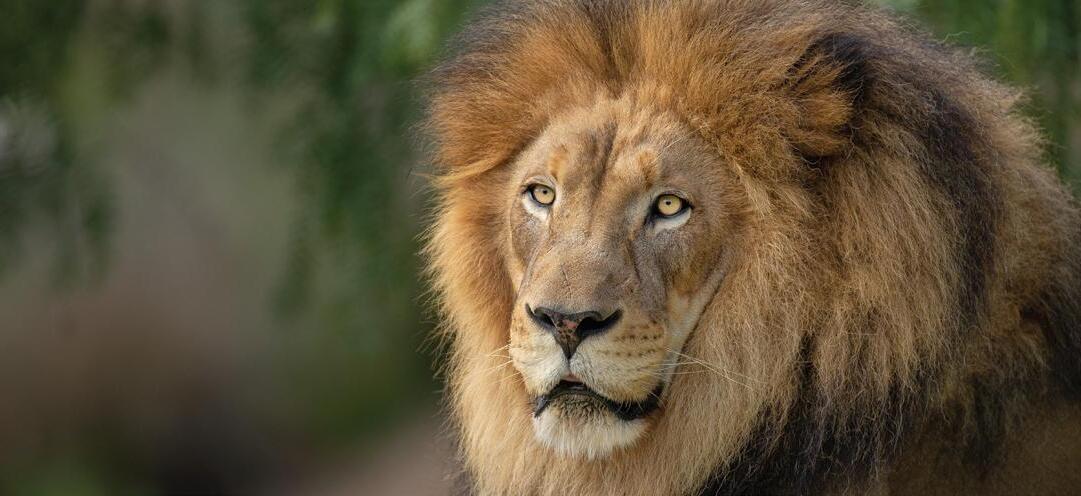


This remarkable group helps our mission through active involvement, commitment to education, and annual fundraising of $250,000 in grants.
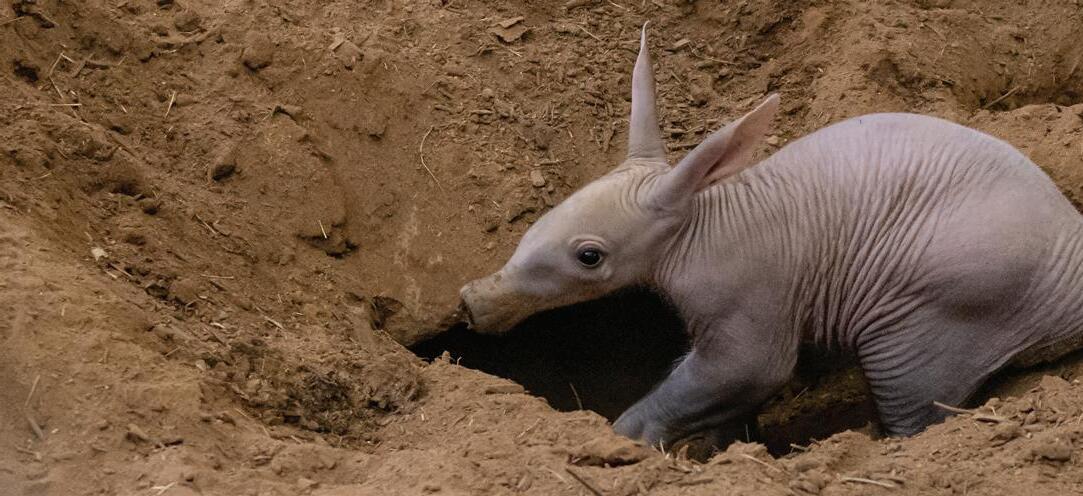
As an enthusiastic circle of longtime supporters, these donors are committed to our mission and stay connected with us year round through exclusive events. This year, we celebrated together with the birth of the first aardvark cub at the Zoo in over 35 years!
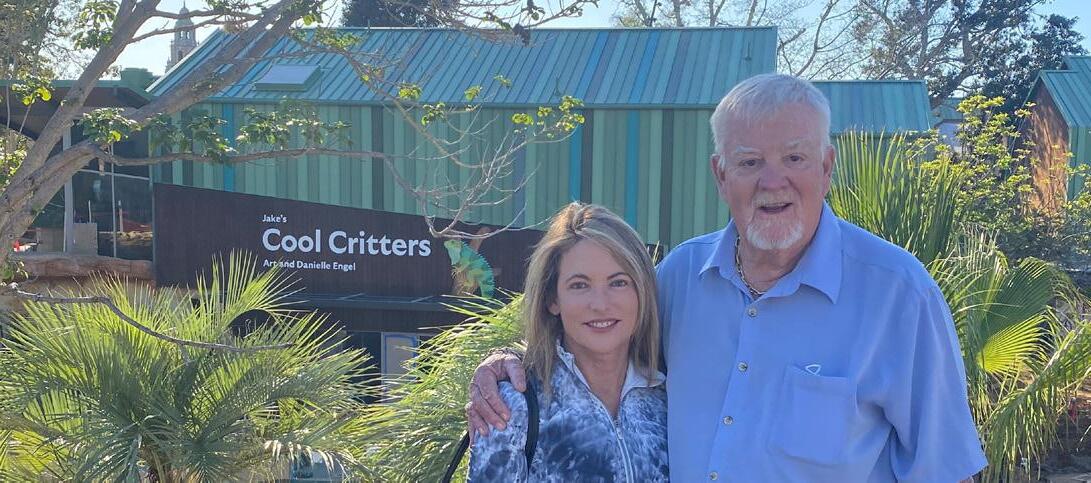
This year, our most influential allies and stakeholders joined us as part of 2116 Advisors. This exclusive group of philanthropists, conservation leaders, and conservation scientists provides counsel and support, advising us on how best to thrive through our next 100 years—and our 200th anniversary in the year 2116. We are honored and grateful for their commitment and leadership.
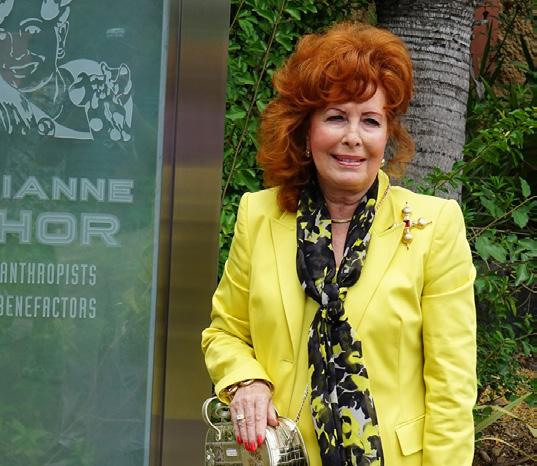
ZOO1OO is a vital circle of donors helping us care for wildlife through this century and beyond, with their support of the Wegeforth Fund endowment. We recognized this group with a special morning at the Zoo, in addition to other benefits throughout the year.
We honor the memory of Sue Rogowski, a ZOO1OO member and faithful contributor, whose inspiring generosity will make a difference for generations to come.


A heartfelt thank you to those who have included us in their estate plans, and for the lasting legacy you’re creating. Your support is helping us meet the conservation challenges of today and tomorrow. Those who have informed us of their planned giving join our honorary Heritage Guild, and enjoy access to exclusive benefits such as special events at the Zoo and Safari Park. This year, they enjoyed a special breakfast and wildlife program before exploring the Zoo for the day.
We celebrate the memory of Bob Baker, whose generous legacy gift continues to safeguard the future for wildlife, people, and the planet we share.
Your support makes these connections possible each and every day. Thank you!

Our Commitment to All Life Thriving
We employ thousands of San Diego’s young people, and some of our current management team got their start here in entry-level positions. We honor our employment history and local partnerships by participating in San Diego’s Youth Work Readiness Program, helping new workers ages 16 to 24 explore career options.

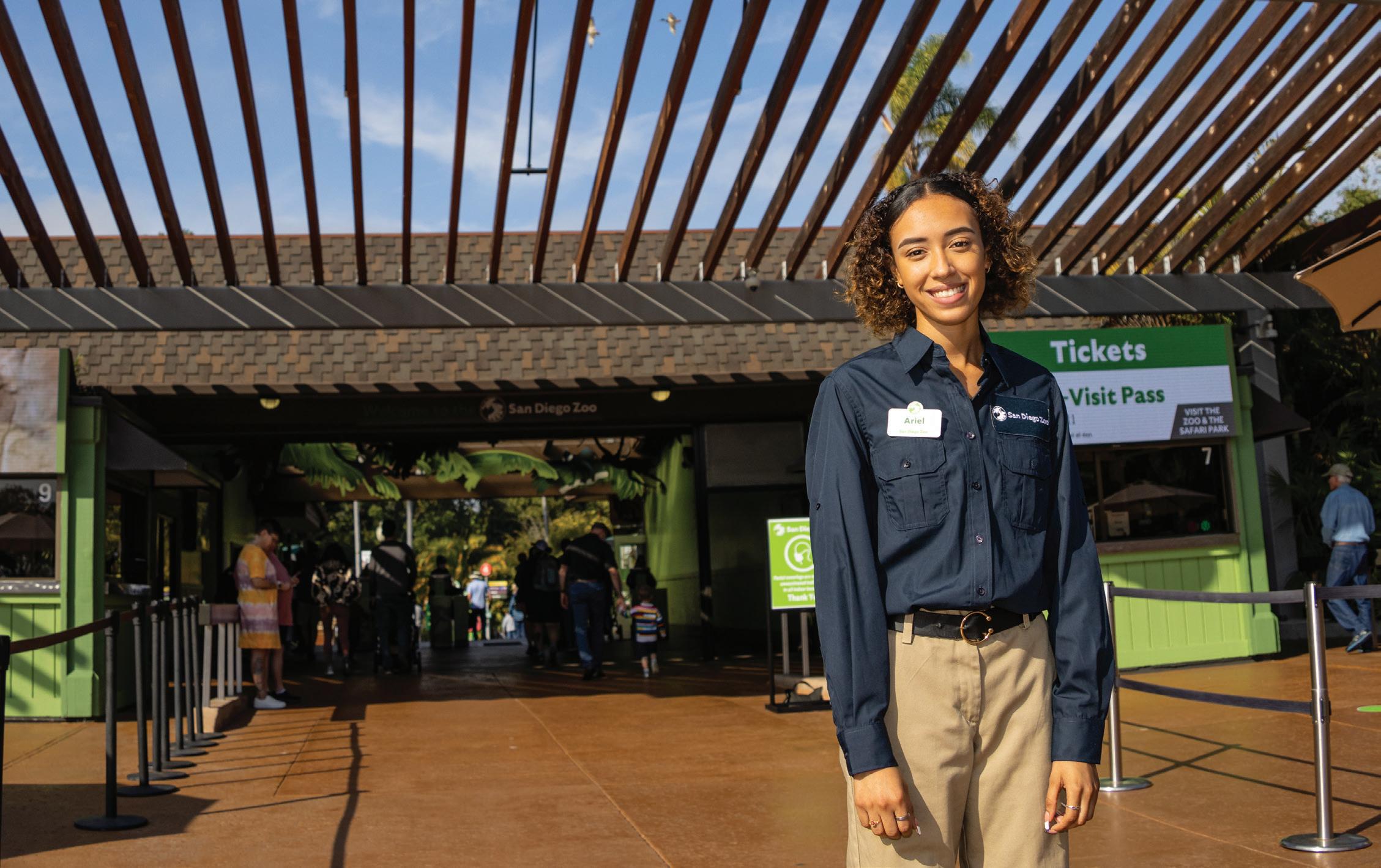
Conservation is, at its heart, a human issue. Our two beautiful parks bring millions of visitors from around the world together in joy, inspiration, and connection. Our global conservation efforts begin with the people who share ecosystems with wildlife. We are a richer community—and have an even greater impact—when we empower and enable diverse voices. This year, we continued finding ways to ensure we’re honoring, respecting, and engaging all members of our community.
We launched our inaugural Diversity, Equity & Inclusion Committee, where employees representing teams from across the organization come together to support and implement effective DEI strategy.
As part of Team Tourism—along with our partners, the San Diego Tourism Authority, the San Diego Convention Center, and the San Diego County Lodging Association—we join worldwide celebrations for LGBTQIA+ Pride Month at San Diego’s Pride Parade, which is one of the largest in the country. With the theme “San Diego Welcomes All,” we joyfully celebrated every member of our community.

We kicked off a Career Exploration program to further educate youth from historically marginalized communities, serving 70 youths in partnership with Talent Search, Junior Achievers, and Youth Empowerment.
We’re working to reach a more diverse pool of job candidates , hiring more team members with varying abilities, and forging new alliances as we work with various workforce groups and leaders to be an employer of choice for all.
To make veterinary medicine a more accessible career path for underrepresented communities, our Wildlife Health team offers a veterinary mentorship program, which received a federal grant this year. We are one of the only zoos with this kind of program.

On grounds, Zoo and Safari Park leadership work with our Diversity, Equity & Inclusion director to play a more active role in ensuring our grounds are accessible to all our visitors.
To help all guests enjoy a comfortable visit, the Zoo and Safari Park are Sensory Inclusive sites , certified by KultureCity, a nonprofit that advocates for people with sensory processing disorders who may find noises, smells, lights, or crowds overwhelming. The Zoo and Safari Park are two of the three attractions in San Diego County listed as certified Sensory Inclusive sites on KultureCity’s app, which directs people to sensory-friendly venues across the nation.

At the Zoo or Safari Park, visitors can reduce sensory overload by borrowing “sensory bags” that offer items such as noise-canceling headphones and fidget toys. Signage across the parks and on our accessibility maps indicate both areas of quiet respite, and noisy, busy locations where guests may wish to don their headphones. Through this ongoing partnership, teams are continually evaluating locations for sign placement and sensory bag pickup at our parks, with 18 new locations identified in 2022 .

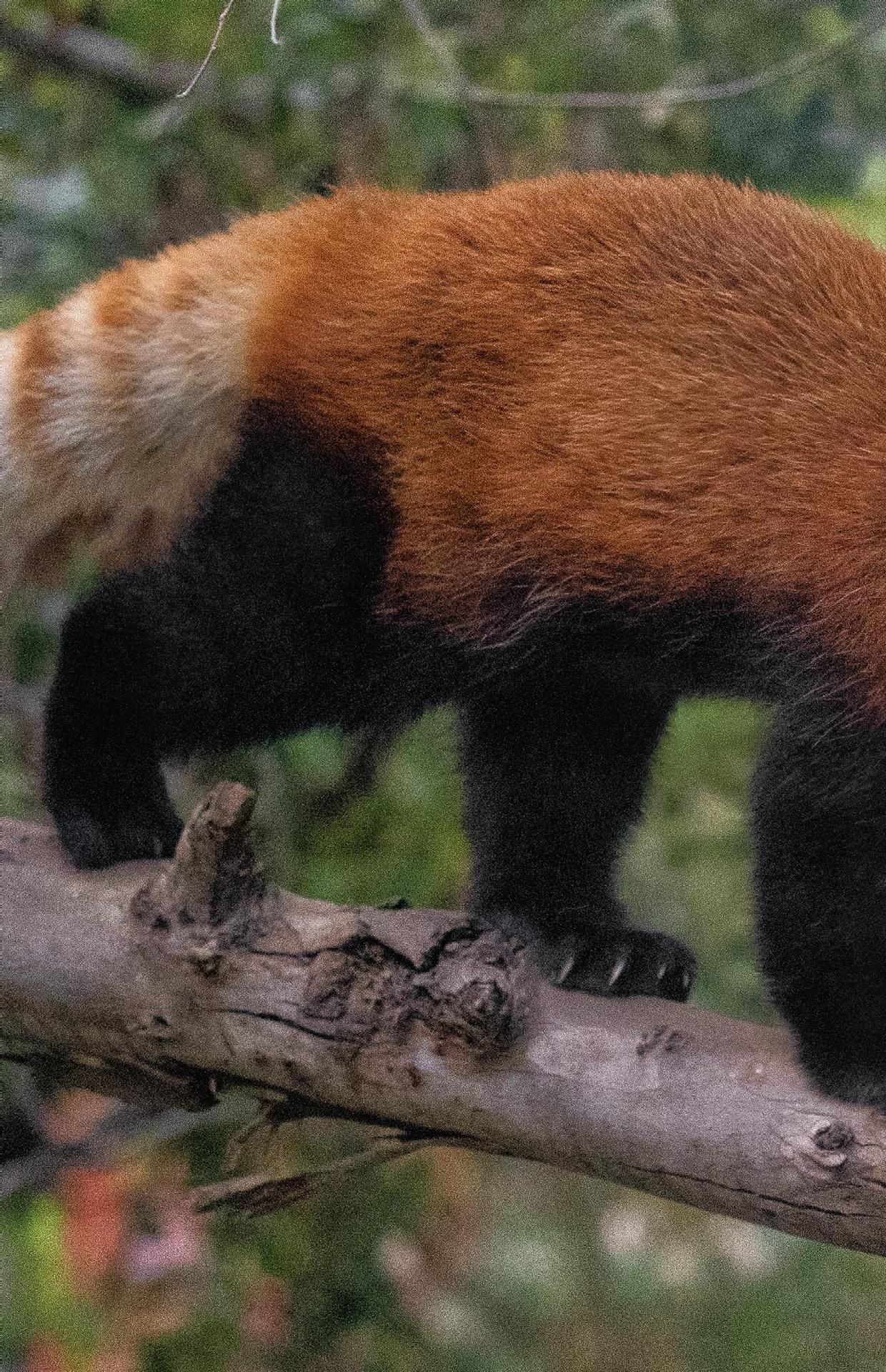
In 2022, about 2,000 sensory-inclusive bags were distributed to guests, making our beautiful parks more accessible and enjoyable for all.
1,370 team members and volunteers were trained on our sensory inclusivity programs this year, making for more allies available for guests throughout their visits.
Photo By: (Left) Oksana Ryazanova/ iStock /Getty Images PlusWe garnered 617 million views across social media and 97 billion views in earned media, representing more than $200 million in media value and enabling us to reach wildlife allies around the globe.
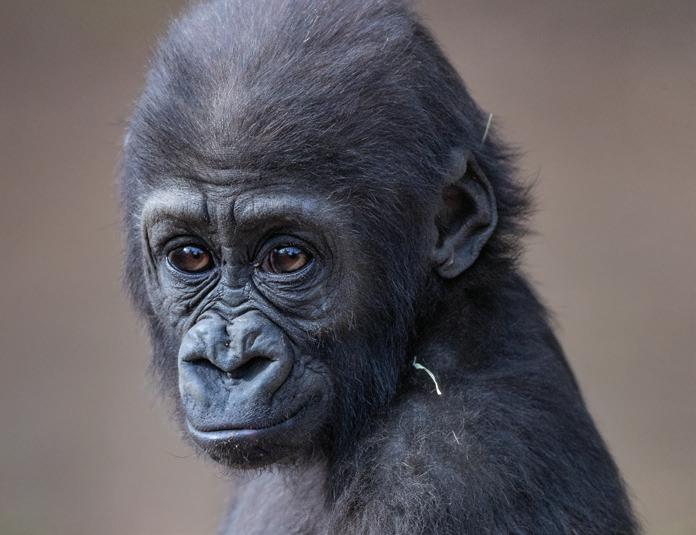

65.2 million YouTube views
2.1 million Facebook fans
2.3 million TikTok followers
1.1 million Instagram followers
164,100 Twitter followers
30,000 Pinterest followers
25,000 LinkedIn followers
14.3 million Flickr photo views
592 million Giphy views
108.4 million visits to our websites
28.2 million views on live animal cams


As an alliance, we make the greatest conservation impact by pooling expertise and collaborating strategically across the globe. We are grateful to all of our partners and contributors for their collaboration, innovation, and insight. Together, our collective efforts are stronger through our shared commitment to a world where all life thrives.
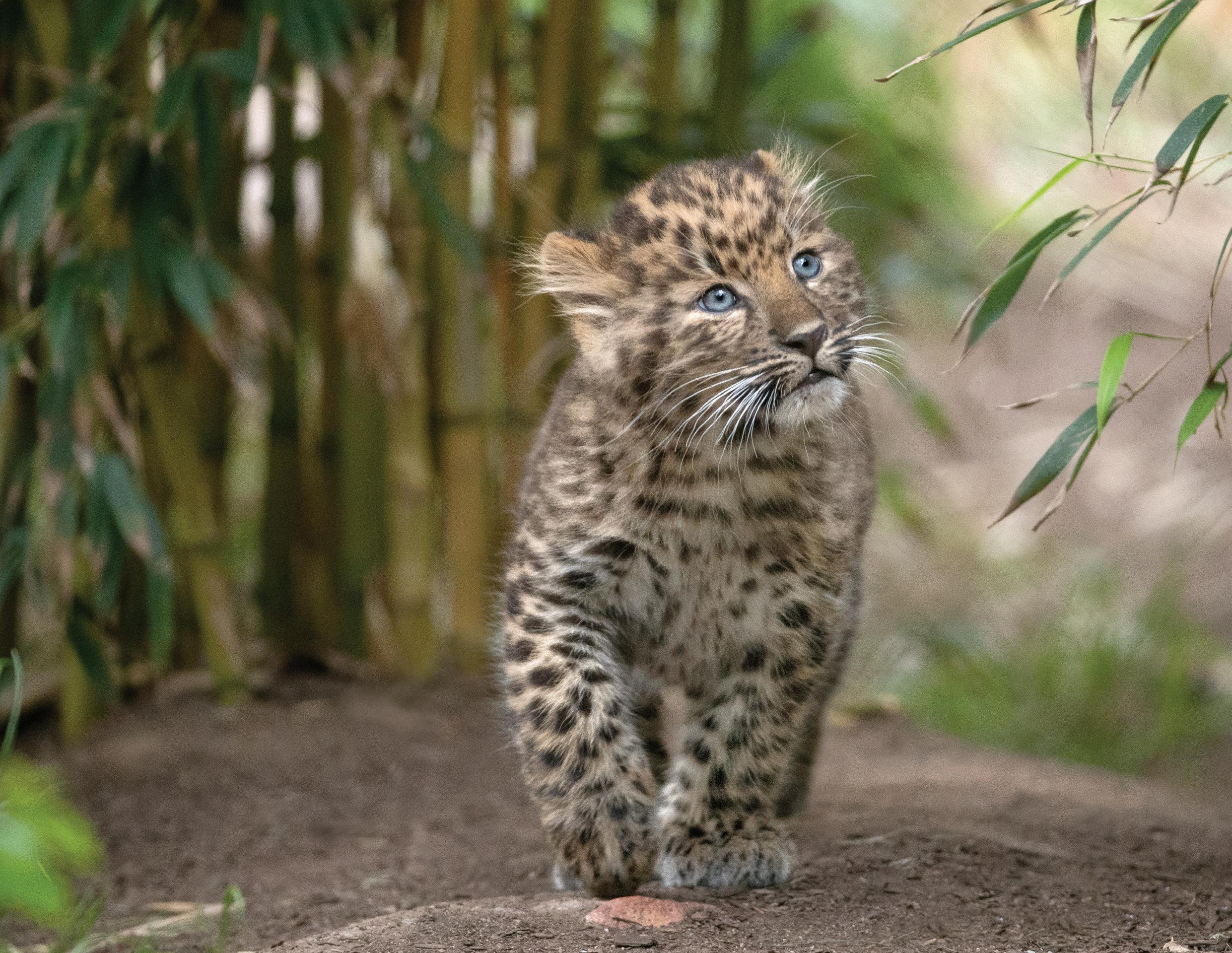
African Bird Club
Ahura Resorts Conservation Foundation
AIDER
Amazon Conservation Association
Amazon Shelter
American Bird Conservancy
Aquarium of the Pacific
Arizona Department of Fish & Wildlife
Association of Traditional Chiefs in Communities Adjacent to Ebo Forest (ACTRIFE)
AZA Chelonian Taxon Advisory Group
AZA Saving Animals From Extinction (SAFE)
AZA Species Survival Plan (SSP) Program
Belau National Museum
Bosques Amazonicos
Botanic Gardens Conservation International
Bureau of Land Management
California Department of Fish and Wildlife
California Department of Forestry and Fire Protection
California Department of Parks and Recreation, Torrey Pines State Natural Reserve
California Department of Transportation
California Natural Diversity Database
California Plant Rescue
California State Parks
California State University San Marcos
Cameroon Biodiversity Association (CAMBIO)
Canadian Food Inspection Agency
Center for Environment and Rural Development at Vinh University
Center for Plant Conservation
Central African Forest Initiative
Centro de Investigación Científica y de Educación Superior de Ensenada
Cesar Australia
Chicago BG
Chui Mamas
Churchill Northern Studies Centre
ClarividUS
Cleveland Metroparks Zoo
Clubs des Amis des Chimpanzés
Clubs des Amis des Gorilles
Columbus Zoo and Aquarium
Comisión Nacional de Áreas
Naturales Protegidas
Commonwealth of the Northern Mariana Islands: Department of Lands and Natural Resources, Division of Fish and Wildlife
Community Assistance in Development (COMAID), Cameroon
Connections Public Charter School
Conservación Amazónia (ACCA)
Conservation Biology Institute
Deutsche Gesellschaft für Internationale Zusammenarbeit (GIZ)
Drexel University
Duke Lemur Center
Edwards Air Force Base
El Paso Zoo
Environment and Climate Change Canada
Espacios Naturales y Desarrollo Sustentable
Ewaso Lions
Explore Gaia Enterprises
Field Projects International
Fiji National Trust
Forestal Otorongo
Galápagos National Park Directorate
Genus PLC
Global Conservation Consortium for Cycads
Government of Vietnam
Grevy’s Zebra Trust
Hawai’i Academy of Arts & Sciences
Illumina
In Situ Laboratory Initiative
IUCN Orchid Specialist Group
IUCN/SSC Cycad Specialist Group
Jardim Zoologico de Lisboa
Kamehameha Schools
Kansas City Zoo
Kaua‘i Forest Bird Recovery Project
Kealakehe High School
Kenya Wildlife Service
KfW Development Bank
Kirimon Conservancy
Kupu Hawai‘i
Lemur Conservation Foundation
Lewa Wildlife Conservancy
Limbe Wildlife Centre
Living Coast Discovery Center
Loisaba Conservancy
Los Angeles Zoo
Manu Endemic Station
Manu National Park, SERNANP
Maui Forest Bird Recovery Project
Metropolitan Airpark LLC
Ministry of Environment, Cambodia
Ministry of Environment, Fiji
Ministry of Health, Cambodia
Mississippi State Chemical Laboratory
Montclair State University
Mpala Research Center
Mugie Conservancy
Naibunga Lower Conservancy
Namunyak Conservancy
Nanaapa Conservancy
National Oceanic and Atmospheric Administration
Nature Conservation Foundation: Hornbill Nest Adoption Program
Nature Fiji, Mareqeti Viti
Ngardok Nature Reserve
NOAA Northwest Fisheries Center
North Carolina State University
Northern Rangelands Trust
Norwegian Polar Institute
Ol Jogi Conservancy
Ol Malo Conservancy
Omaha’s Henry Doorly Zoo and Aquarium
Organización Vida Silvestre, A.C.
Oxford Brookes University
Pacific Bird Conservation
Palau Community College
Palm Beach Zoo
Peninsular Pronghorn Recovery Project
Peru Verde
Peruvian National Forest and Wildlife Service (SERFOR)
Peruvian Service for Natural Protected Areas (SERNANP)
Polar Bears International
Portland State University
Project Mecistops
Rainforest Expeditions
Rancho Jamul Ecological Reserve
Re:wild
Reid Park Zoo
Reteti Elephant Sanctuary
Riverbanks Zoo
Royal Botanic Gardens, Kew
Ruko Conservancy
Sacramento Zoo
San Bernardino Valley Water District
San Bernardino Water Conservation District
San Diego Association of Governments
San Diego Habitat Conservancy
San Diego Management and Monitoring Program
San Diego Natural History Museum
San Diego State University
San Diego State University Soil Ecology
Restoration Group
San Francisco Zoo
Santa Ana Zoo
Sarara Foundation
Save the Elephants
Save the Tasmanian Devil Program
Science for Wildlife
Scripps Institution of Oceanography
Sera Conservancy
South African National Biodiversity Institute
South African National Parks, Veterinary Wildlife Services, Kruger National Park
Stanford University
State of Hawai‘i Department of Land and Natural Resources, Division of Forestry and Wildlife
Stellenbosch University
Tampa’s Lowry Park Zoo
Taricaya EcoReserve
Taronga Conservation Society Australia
The ‘Alalā Project
The Global Owl Project
The Huntington Library, Art Museum, and Botanical Gardens
The Living Desert
The Nature Conservancy
The Peregrine Fund
The Southern African Foundation for the Conservation of Coastal Birds (SANCCOB)
The University of Queensland, Koala Ecology Group
The University of Sydney
Three Mountain Alliance
TRAK TRC Technologies
Turtle Survival Alliance
U.S. Fish and Wildlife Service
U.S. Forest Service
U.S. Geological Survey
U.S. Geological Survey, Alaska Science Center
U.S. Navy
U.S. Navy, Commander, U.S. Pacific Fleet, Conservation Program
U.S. Navy, Environmental Division, Naval Base Coronado
Universidad Nacional Mayor de San Marcos
Universidad Nacional San Antonio Abad de Cusco
University of Alberta
University of Antananarivo
University of British Columbia
University of California, Davis
University of California, Davis: SeaDoc Society
University of California, Los Angeles
University of California, San Diego
University of California, Santa Cruz
University of Copenhagen
University of Drexel
University of Hamburg
University of Illinois
University of Manitoba
University of Oxford
University of Rome Tor Vergata
University of Saskatchewan
University of Suffolk
University of Vienna
University of Washington
Volcano Charter School of Arts & Sciences
VulPro
Waiakea High School
Waimea Valley Botanic Garden
Washington University in St. Louis
Wild Animal Park Mechelen Planckendael
Wild Orca
Wildlife Conservation Society, Cameroon Biodiversity Programme
Wildlife Research & Training Institute (Kenya)
World Parrot Trust
Zoetis
Zoo Antwerpen
Zoo Aquarium de Madrid
Zoo Dresden
Zoo Duisburg
Zoo Leipzig
Zoo Miami
Zoo Parc de Beauval
Zoo Zurich
As a nonprofit organization, all revenue supports our mission. Revenue above expenses is reinvested to pursue conservation priorities, capital projects, and operational needs.
2022 REVENUE $407 MILLION
2022 EXPENSES $375 MILLION
$2.4 BILLION ANNUALLY San Diego Zoo Wildlife Alliance’s economic impact and activity in the San Diego region.

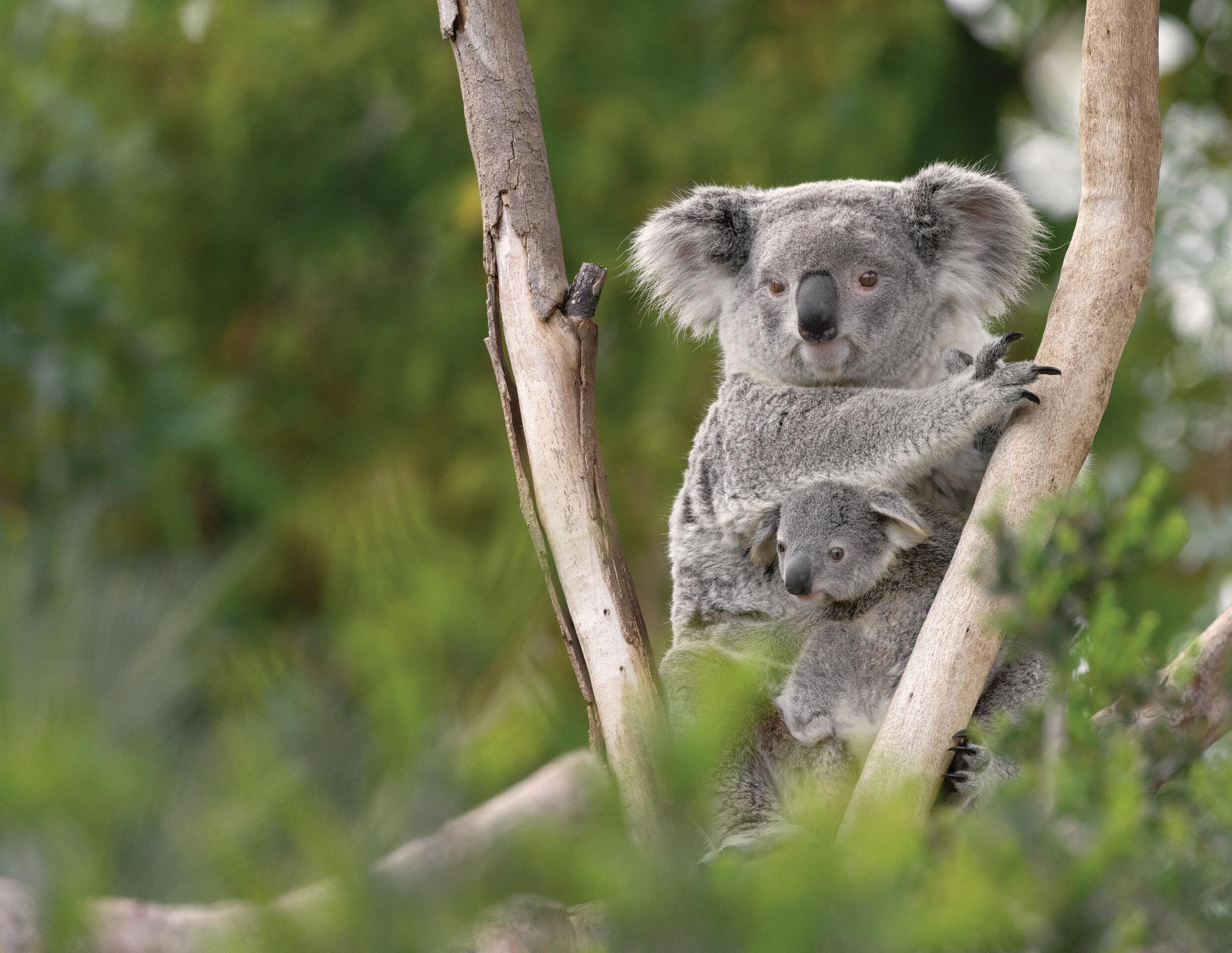
Please note: These are unaudited numbers for 2022. Audited financials and IRS Form 990 will be available on sdzwa.org once they are completed. Economic impact study prepared in 2023 by San Diego Taxpayers Educational Foundation.
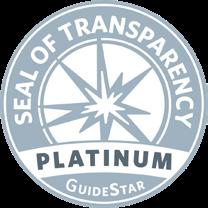

We are all connected. Everything we do to save, protect, and care for wildlife in San Diego and eight Conservation Hubs worldwide is only possible with the generosity of allies like you. Please join us in securing the future for animals, plants, communities, and the natural places we all share.
PRESIDENT’S AMBASSADORS
PRESIDENT’S AMBASSADORS
Your ongoing support is vital to the Zoo, Safari Park, and conservation efforts worldwide. Visit sdzwa.org/membership to explore membership options, including various prestigious clubs.
PRESIDENT’S AMBASSADORS
PRESIDENT’S PATRONS PRESIDENT’S AMBASSADORS
PRESIDENT’S PATRONS PRESIDENT’S AMBASSADORS
PRESIDENT’S AMBASSADORS
As the closest members of our family, President’s Clubs are devoted to our vision of protecting wildlife, joining us throughout the year for exclusive events and connecting more deeply with our conservation work.
PRESIDENT’S PATRONS PRESIDENT’S AMBASSADORS
PRESIDENT’S PATRONS
PRESIDENT’S PATRONS PRESIDENT’S AMBASSADORS
PRESIDENT’S PATRONS
PRESIDENT’S PARTNERS
PRESIDENT’S PARTNERS
PRESIDENT’S PARTNERS
PRESIDENT’S PATRONS
PRESIDENT’S PATRONS
PRESIDENT’S PARTNERS
PRESIDENT’S ASSOCIATES
PRESIDENT’S PARTNERS
PRESIDENT’S PARTNERS
PRESIDENT’S ASSOCIATES
Wildlife Protectors , Guardians , and Champions enjoy admission to the San Diego Zoo and Safari Park as well as a range of benefits, including additional guest privileges, special events, and more.
PRESIDENT’S ASSOCIATES
PRESIDENT’S PARTNERS
PRESIDENT’S PARTNERS
PRESIDENT’S ASSOCIATES
Wildlife Champion
PRESIDENT’S ASSOCIATES
PRESIDENT’S ASSOCIATES
PRESIDENT’S ASSOCIATES
PRESIDENT’S ASSOCIATES
Wildlife Protector Wildlife Guardian
San Diego Resident San Diego Resident Premium
Wildlife Protector Premium
Wildlife Explorer
YOUTHS AGES 3–17
You can make a lasting impact. To support our vital conservation mission, please call us at (619) 557-3914 , or email donations@sdzwa.org .
Your generosity today makes a difference.
The gift of cash provides immediate support for San Diego Zoo Wildlife Alliance and is a tax-deductible charitable donation.

For gifts of appreciated property such as stocks and real estate, you can receive a charitable income tax deduction for the full, fair-market value of the property, and avoid paying capital gains tax on the appreciation.
If you are 70 1/2 or older, you can transfer up to $100,000 from your IRA directly to San Diego Zoo Wildlife Alliance. This transfer counts toward your required minimum distribution.
Partner with us to advance a broad range of projects and programs that save endangered species, create new habitats, help underserved populations in our community, inspire the next generation, and more.
Your monthly gift fuels critical conservation worldwide, cares for countless animals and plants at the Zoo and Safari Park, and offers sustainable hope to the world’s most extraordinary wildlife relying on us to survive—and thrive—each and every day. To learn more or become a Wildlife Hero, visit sdzwa.org/wildlife-hero .
To learn more about legacy gifts, visit zoolegacy.org .

A bequest is made through your will or living trust and can be for a specific amount, a specific asset, or a percentage of your estate.
You may donate your home to San Diego Zoo Wildlife Alliance now, while retaining the right to live there for the rest of your life.
With a charitable remainder trust, you can choose to receive a fixed annuity payment or receive variable payments based on the trust principal. When the trust matures, the remaining amount passes to San Diego Zoo Wildlife Alliance.
A charitable gift annuity enables you to receive fixed payments, based on your age, for the rest of your life (or lives). When the annuity matures, the remainder passes to San Diego Zoo Wildlife Alliance.
Naming San Diego Zoo Wildlife Alliance as a beneficiary of your Individual Retirement Account is a tax-effective way to make a charitable gift, because it avoids multiple estate and income taxes.
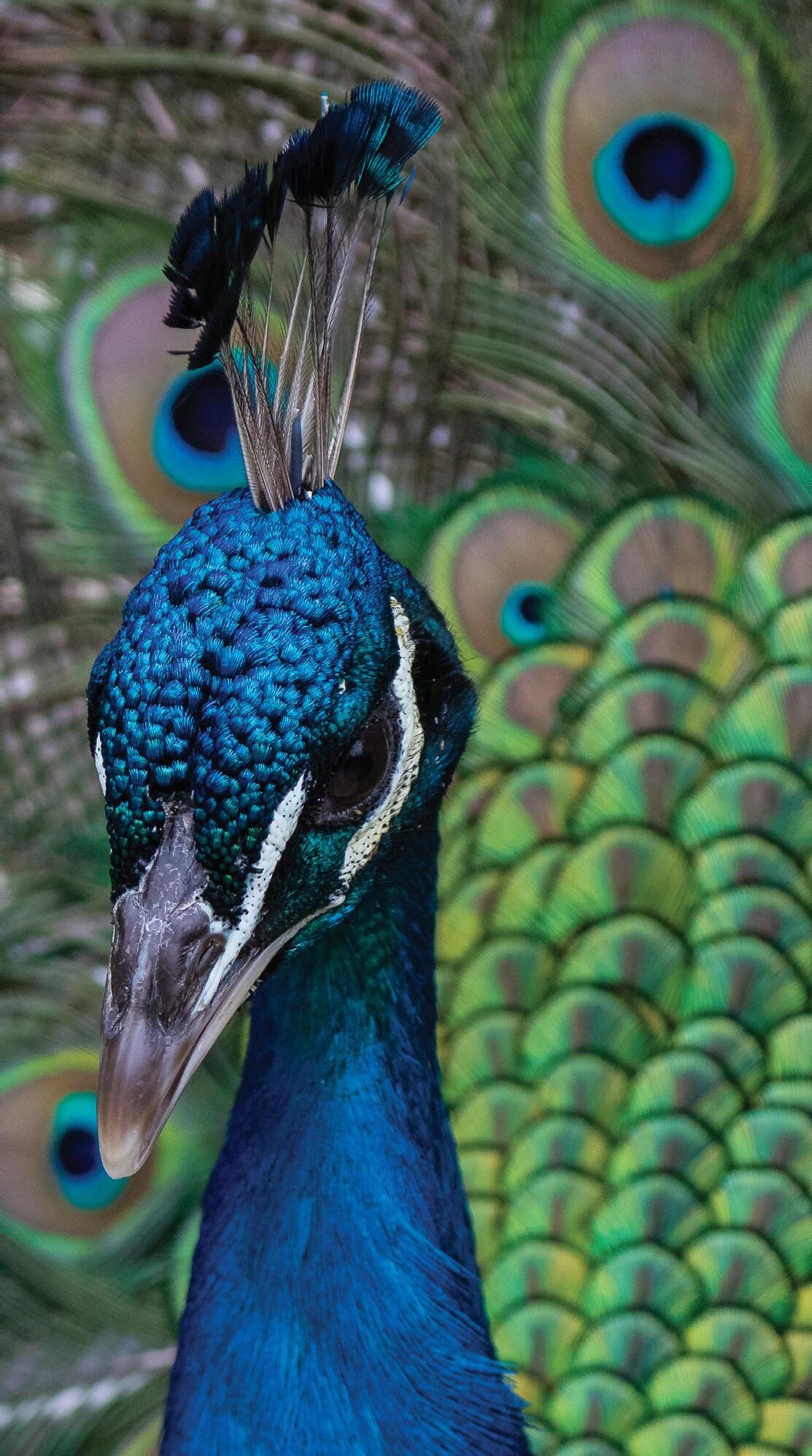
Naming San Diego Zoo Wildlife Alliance as a beneficiary of your life insurance is a simple way of supporting us without giving up current assets.
Paul A. Baribault
President and Chief Executive Officer
Shawn Dixon
Chief Operating Officer
David Franco
Chief Financial Officer
Erika Kohler
Senior Vice President and Executive Director
San Diego Zoo
Lisa Peterson
Senior Vice President and Executive Director San Diego Zoo Safari Park
Nadine Lamberski
DVM, DACZM, DECZM (ZHM)
Chief Conservation and Wildlife Health Officer
David B. Gillig
Chief Philanthropy Officer
Aida Rosa
Chief Human Resources Officer
David Miller
Chief Marketing Officer
Wendy Bulger
General Counsel
Javade Chaudhri Chair
Steven G. Tappan Vice Chair
Gary E. Knell Vice Chair
Steven S. Simpson Treasurer
Richard B. Gulley Secretary
Rolf Benirschke
Kathleen Cain Carrithers
E. Jane Finley
Clifford W. Hague
Linda J. Lowenstine, DVM, Ph.D.
Bryan B. Min
‘Aulani Wilhelm
Berit N. Durler

Thompson Fetter
George L. Gildred
Robert B. Horsman
John M. Thornton
We honor and remember those trustees and trustees emeriti who passed away this year—Yvonne W. Larsen, A. Eugene Trepte, Judith A. Wheatley, and Betty Jo F. Williams—for their decades of service. Their indelible legacies will live on forever.
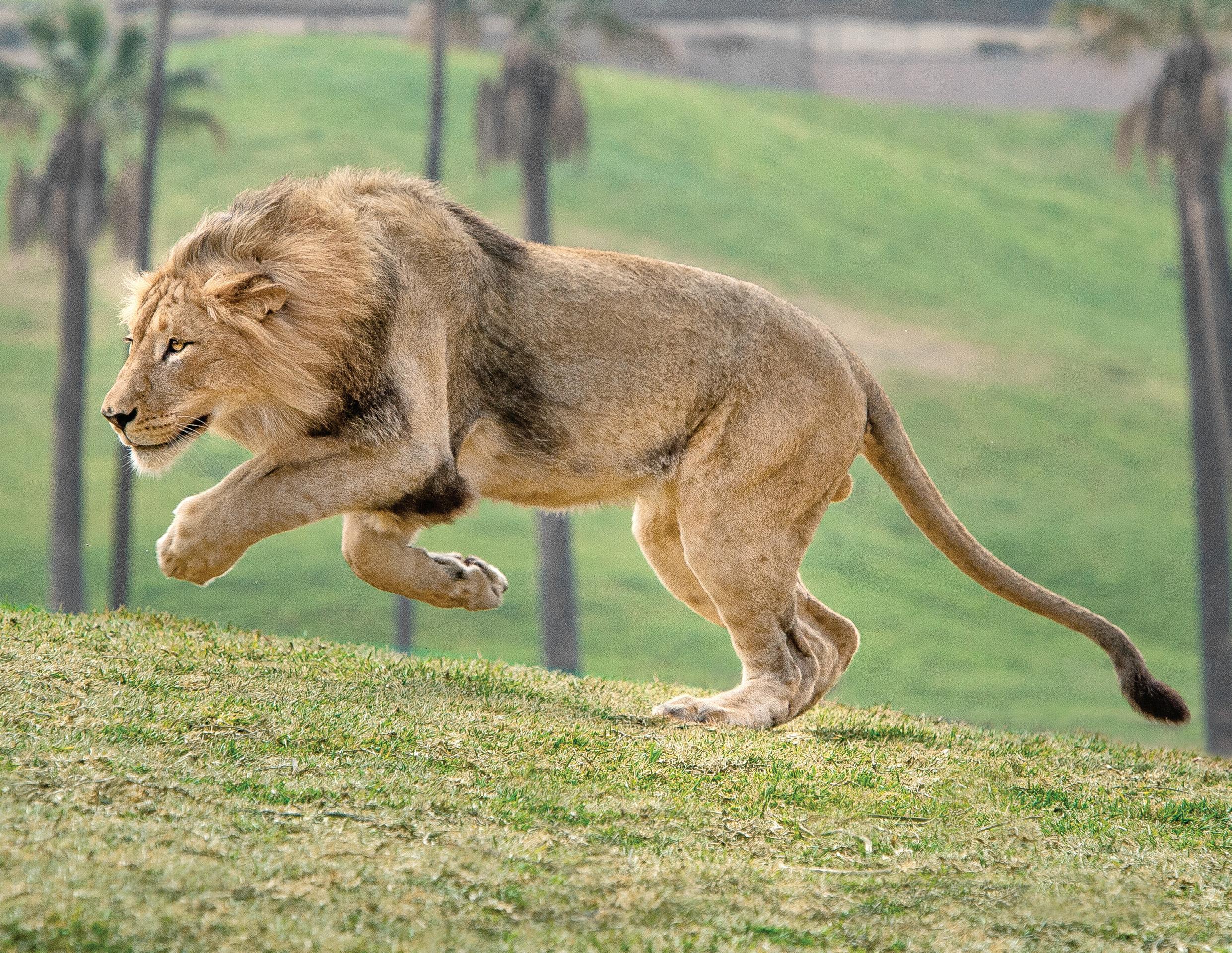
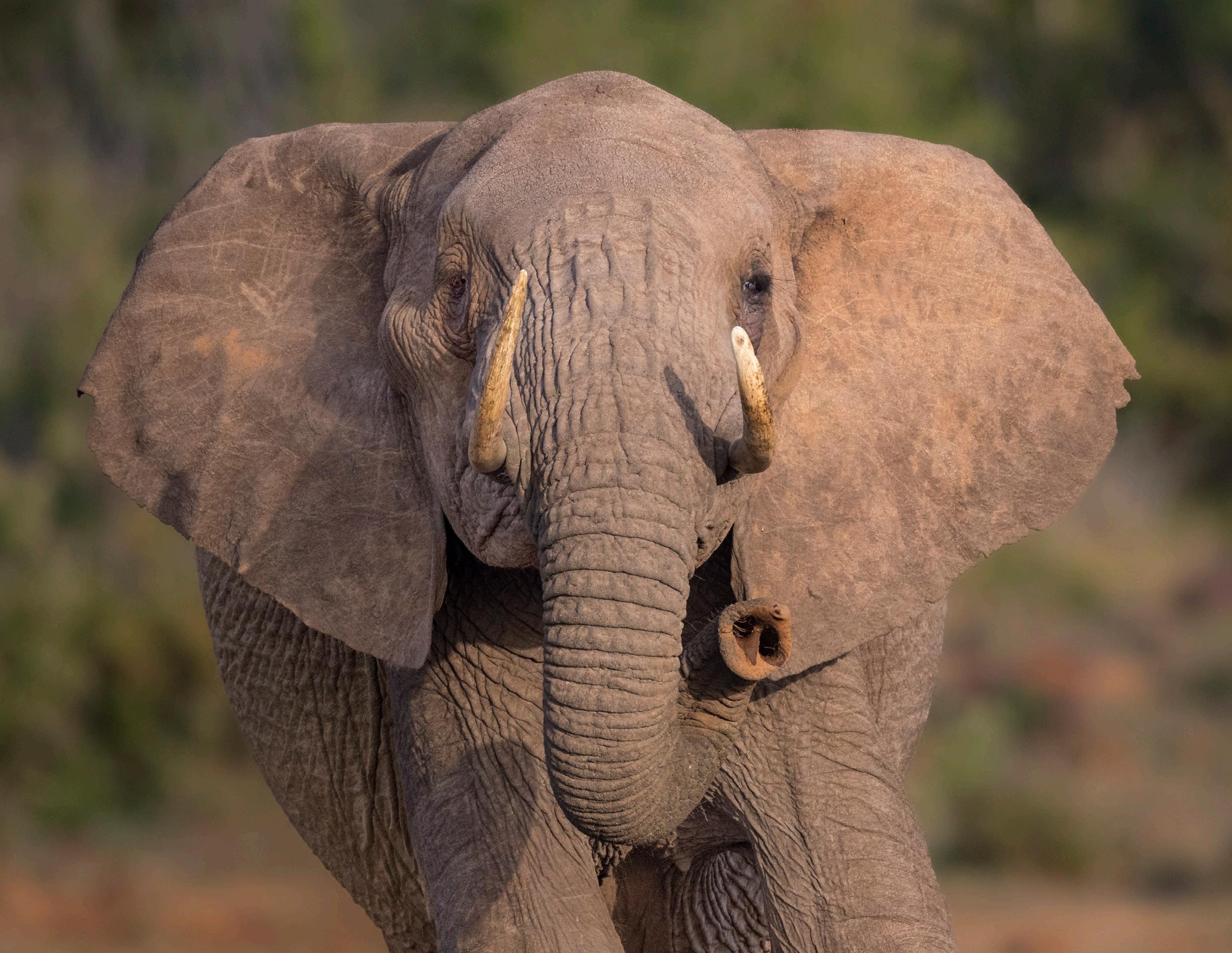
 © 2023 San Diego Zoo Wildlife Alliance. All rights reserved.
© 2023 San Diego Zoo Wildlife Alliance. All rights reserved.